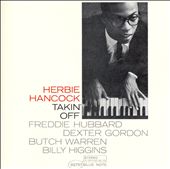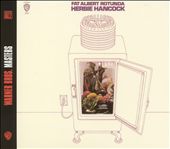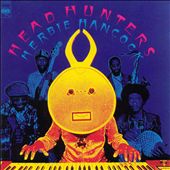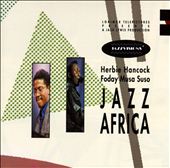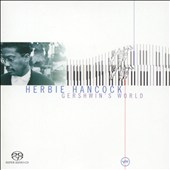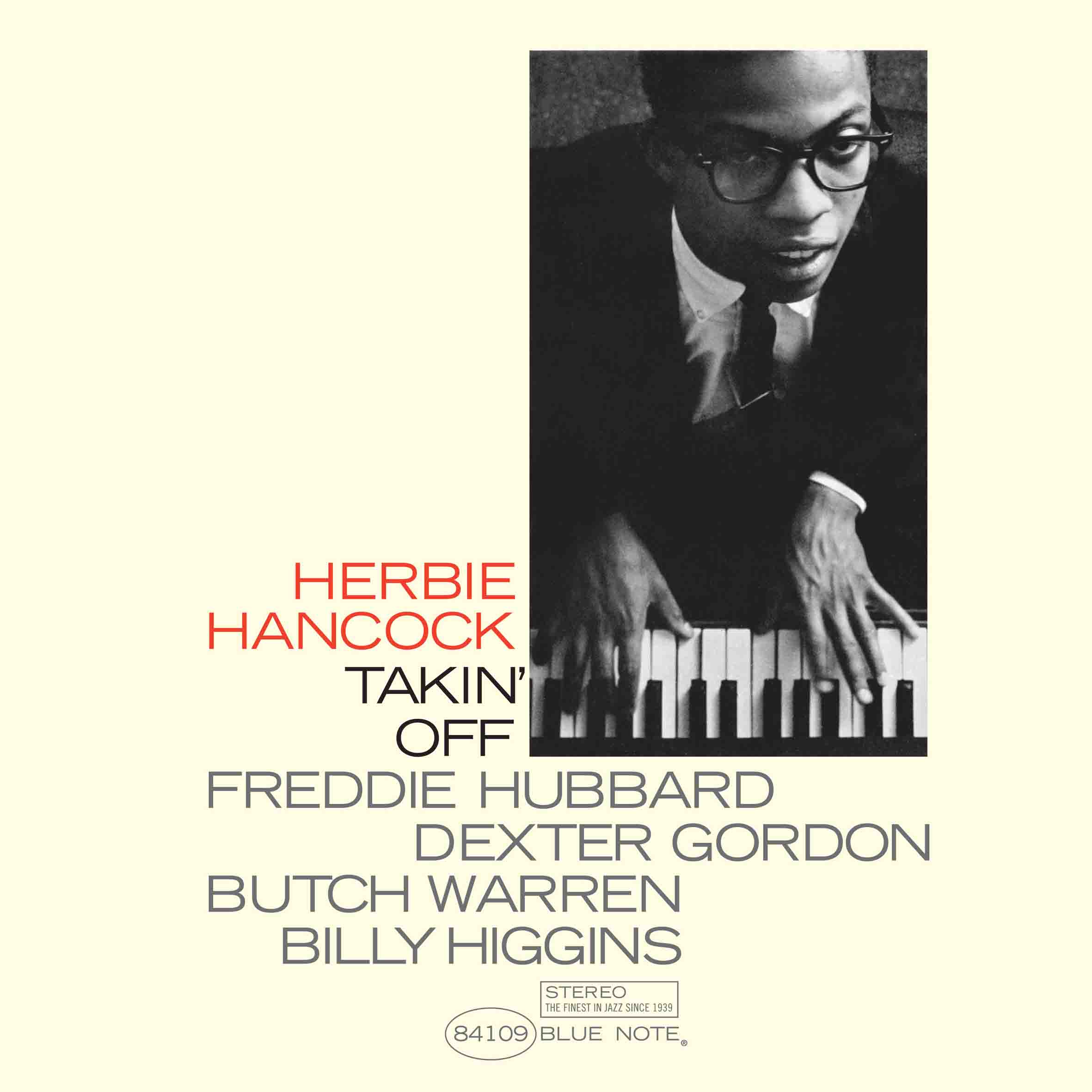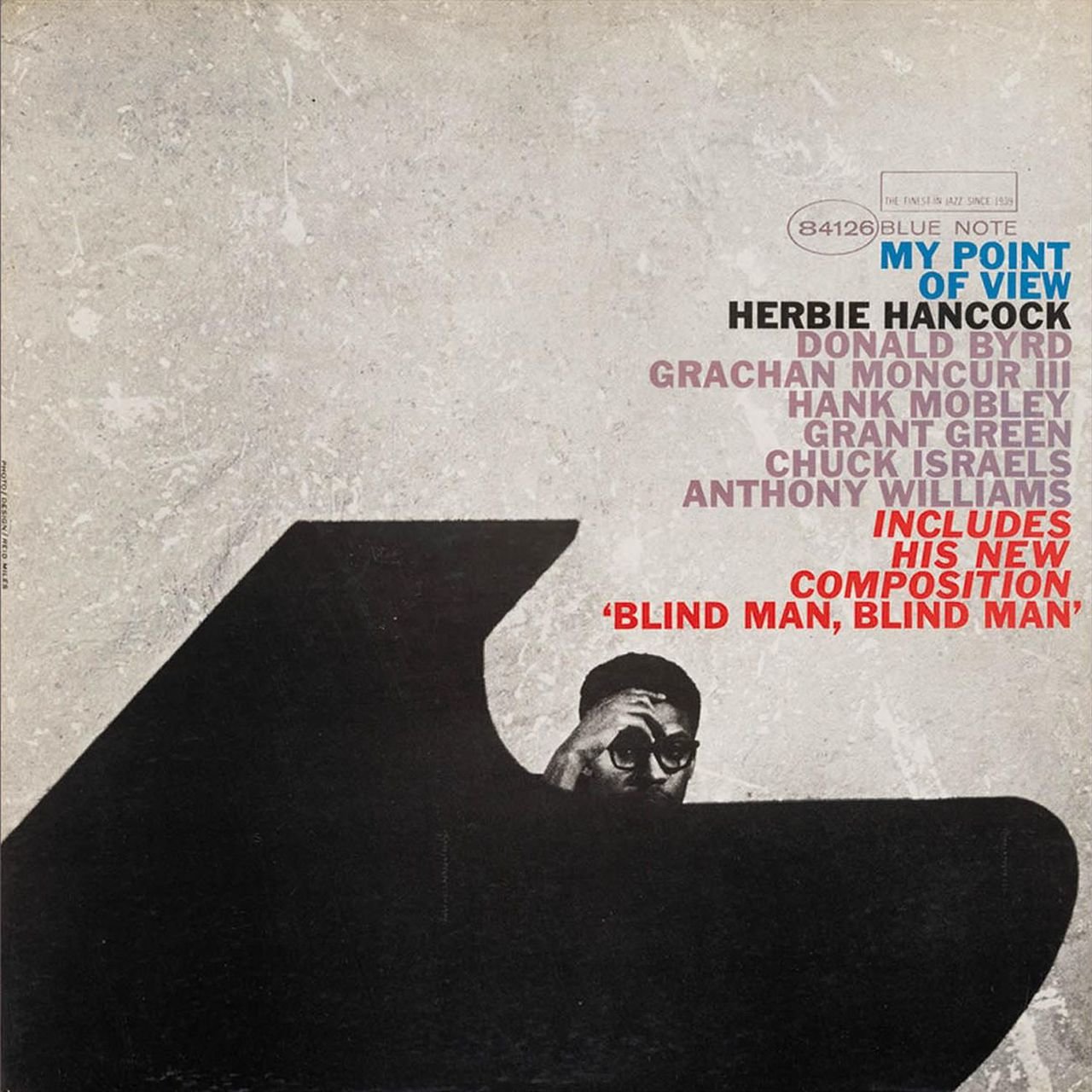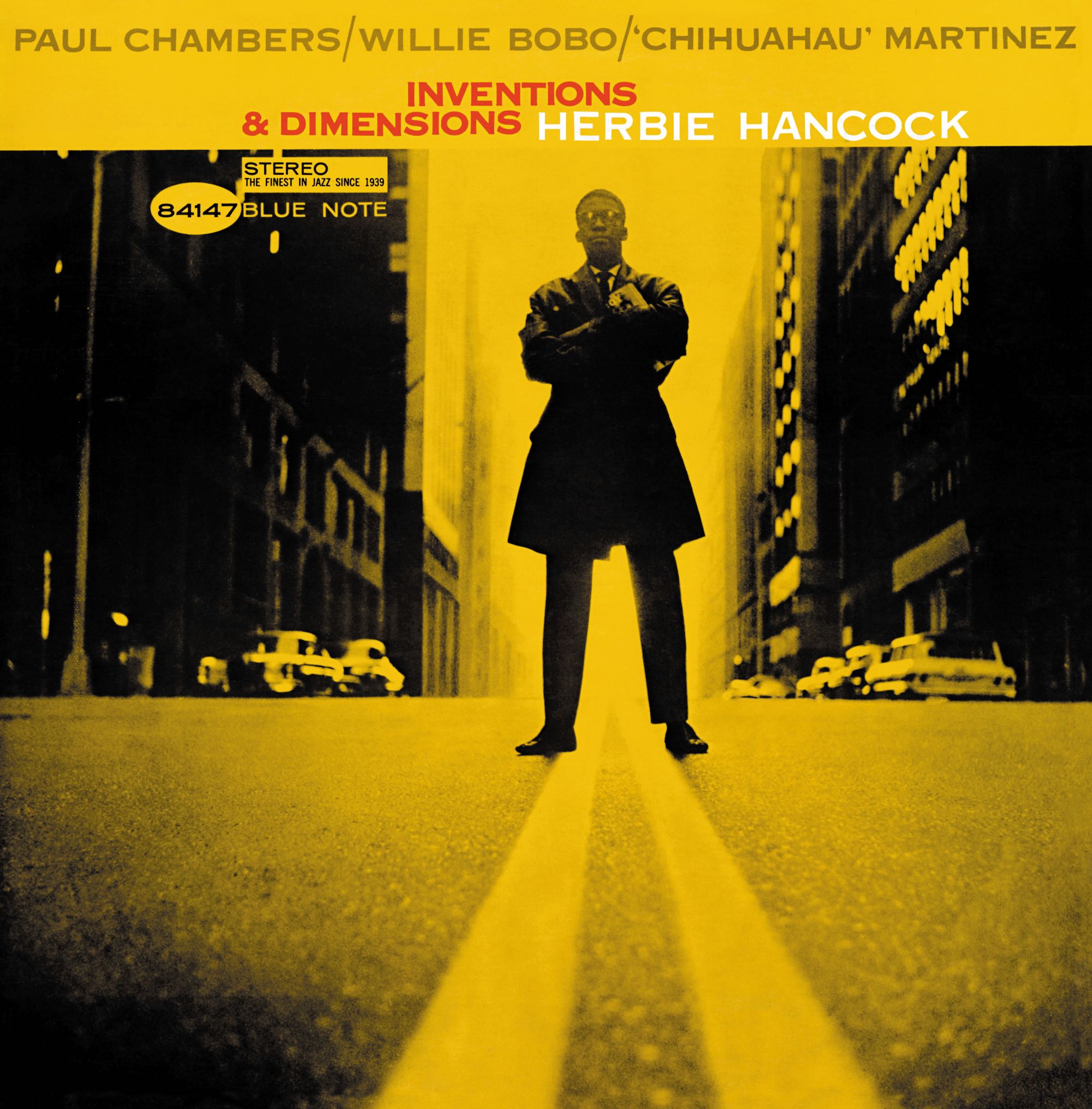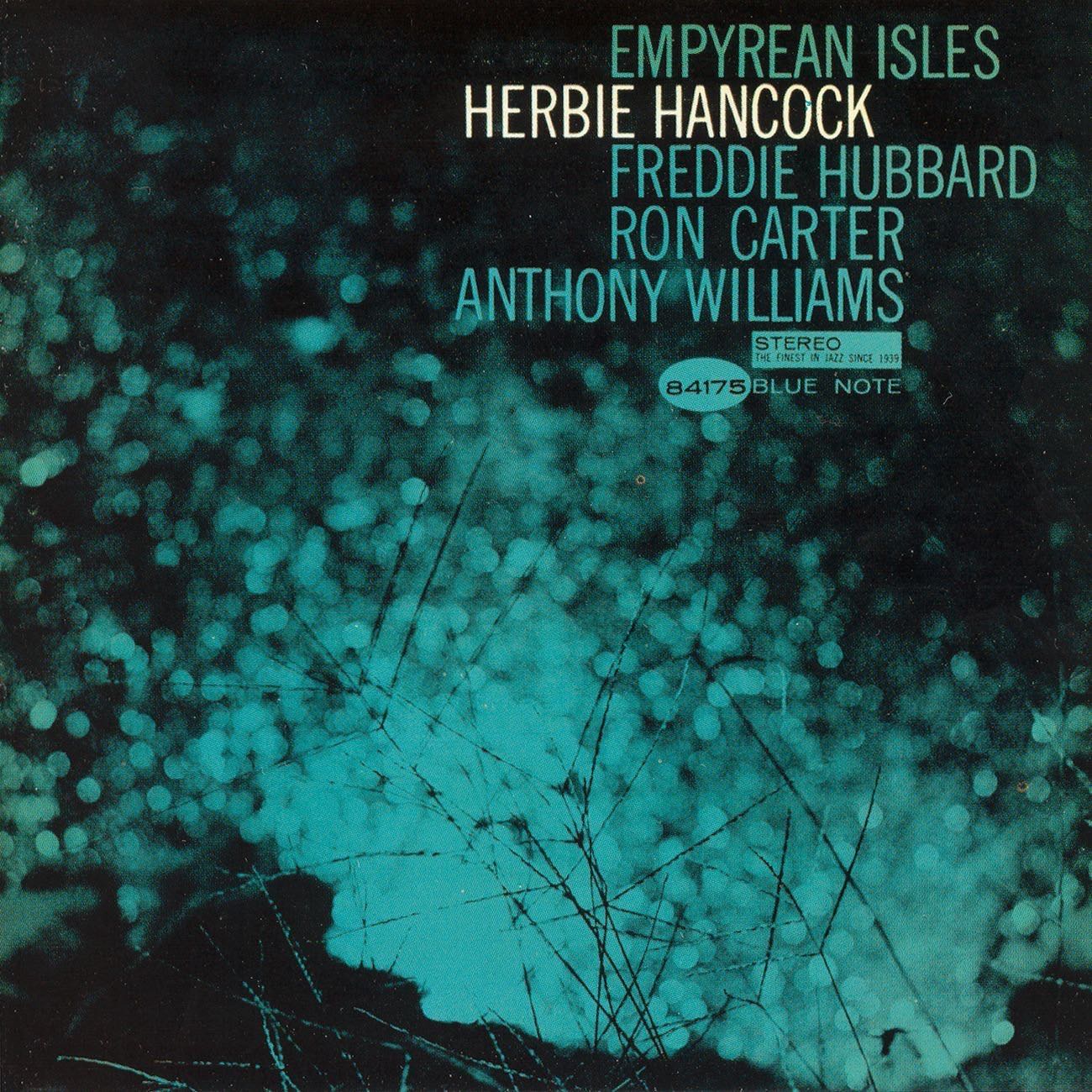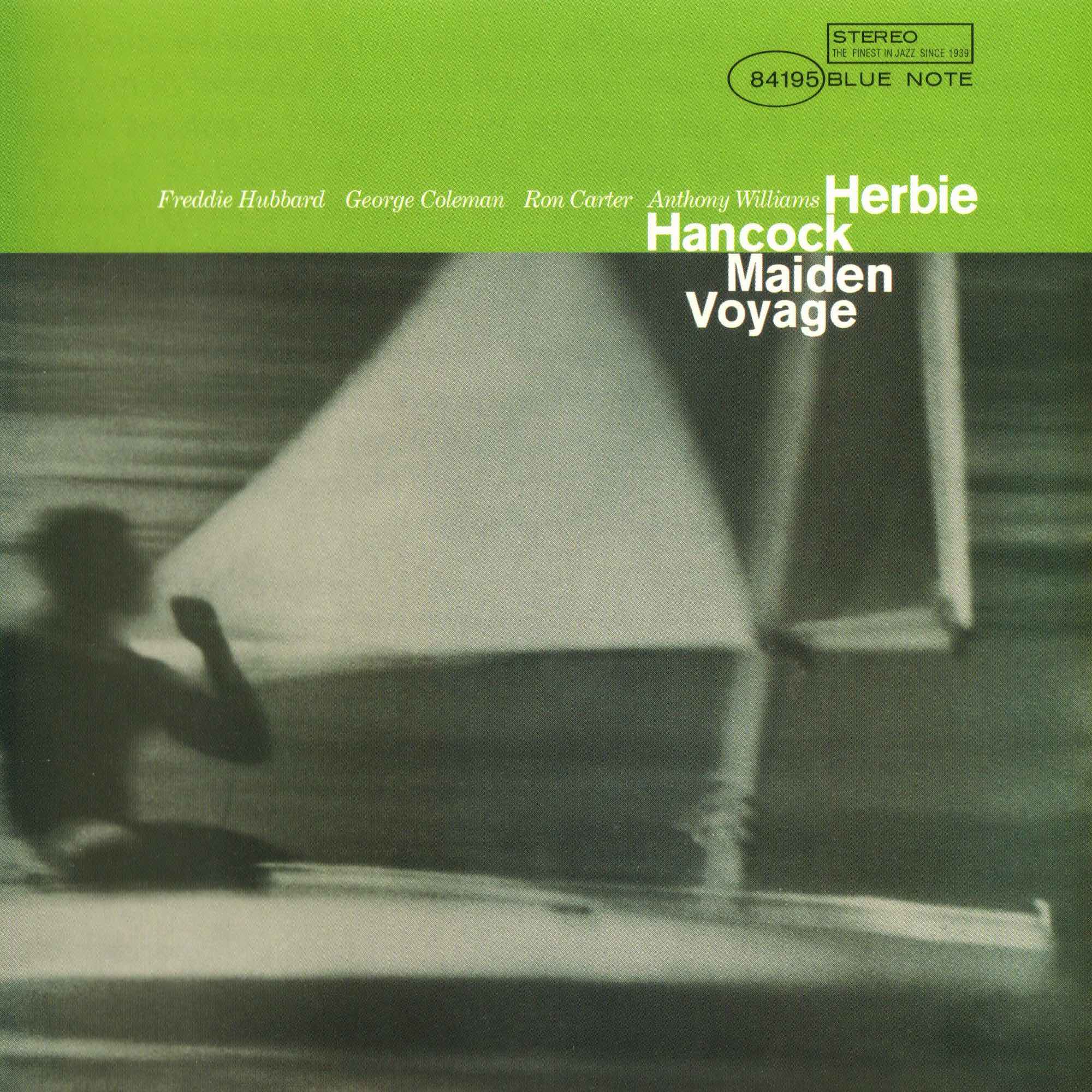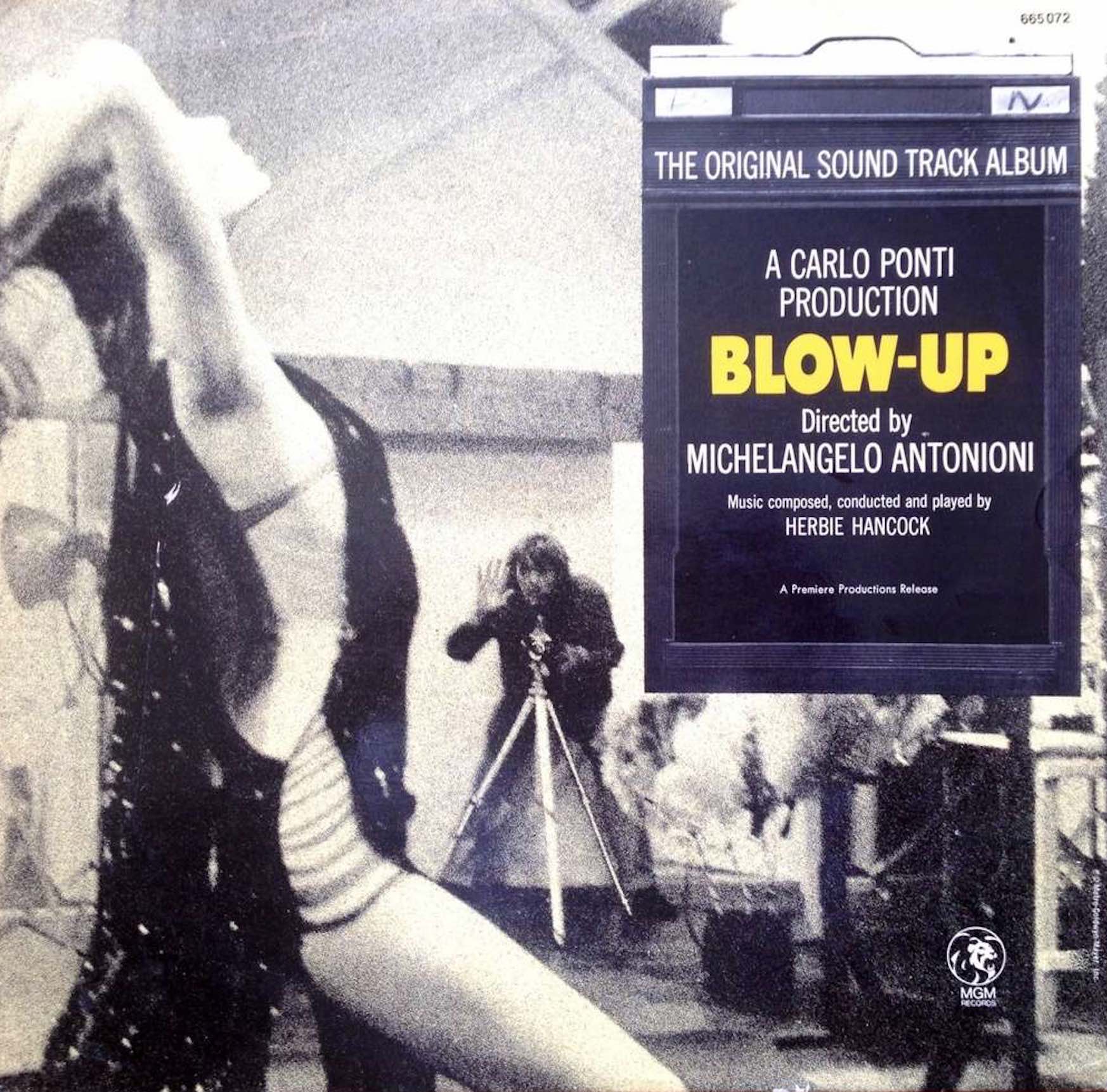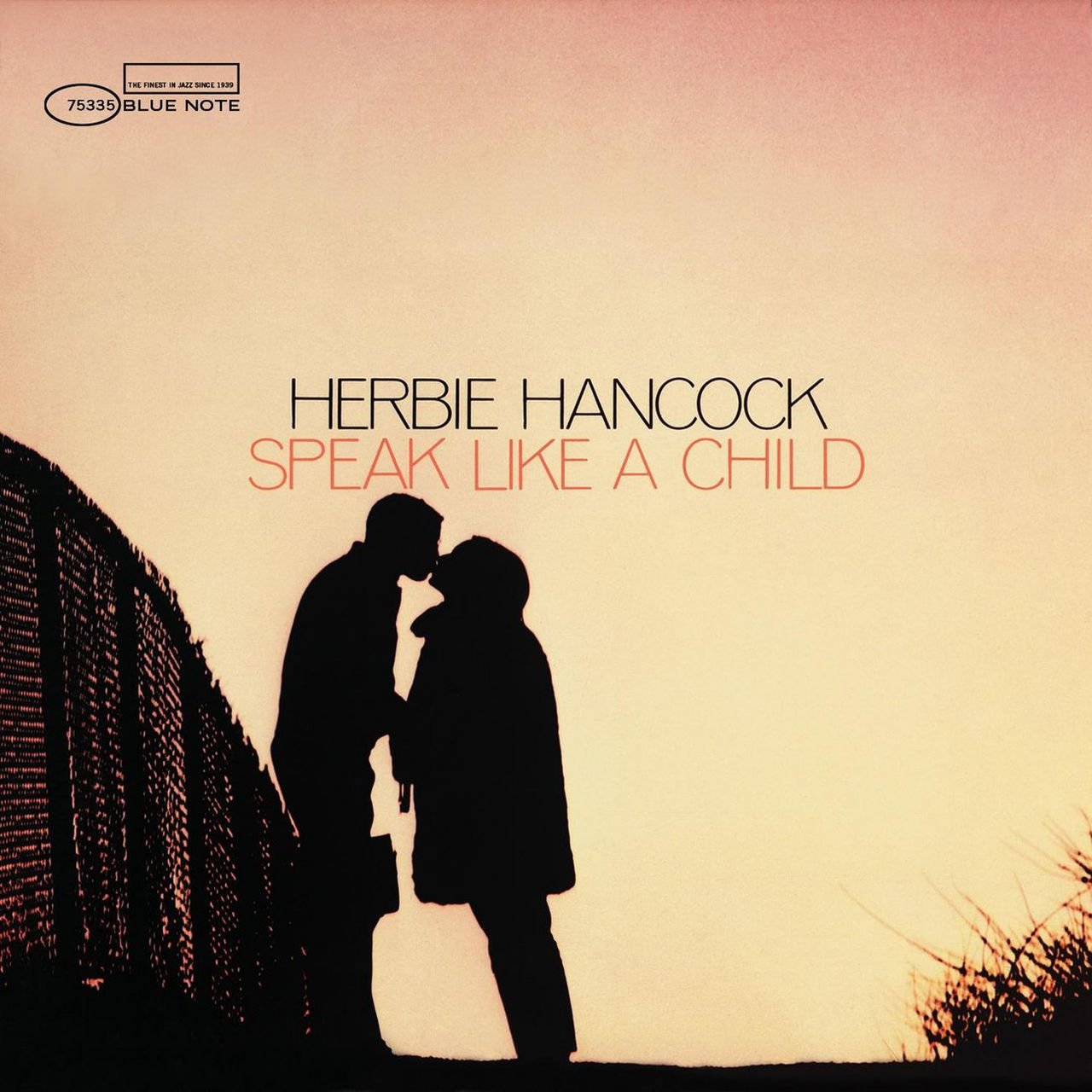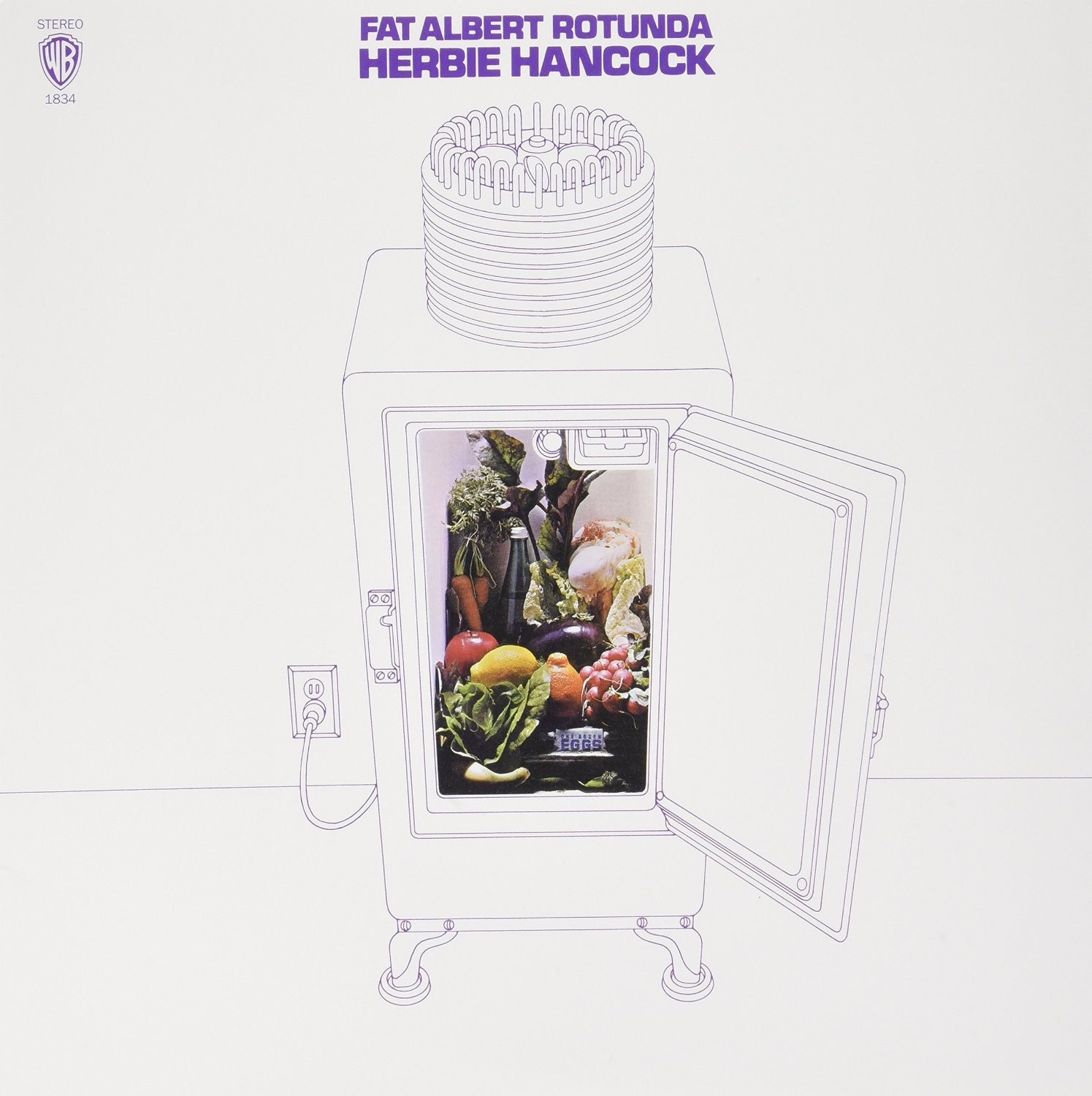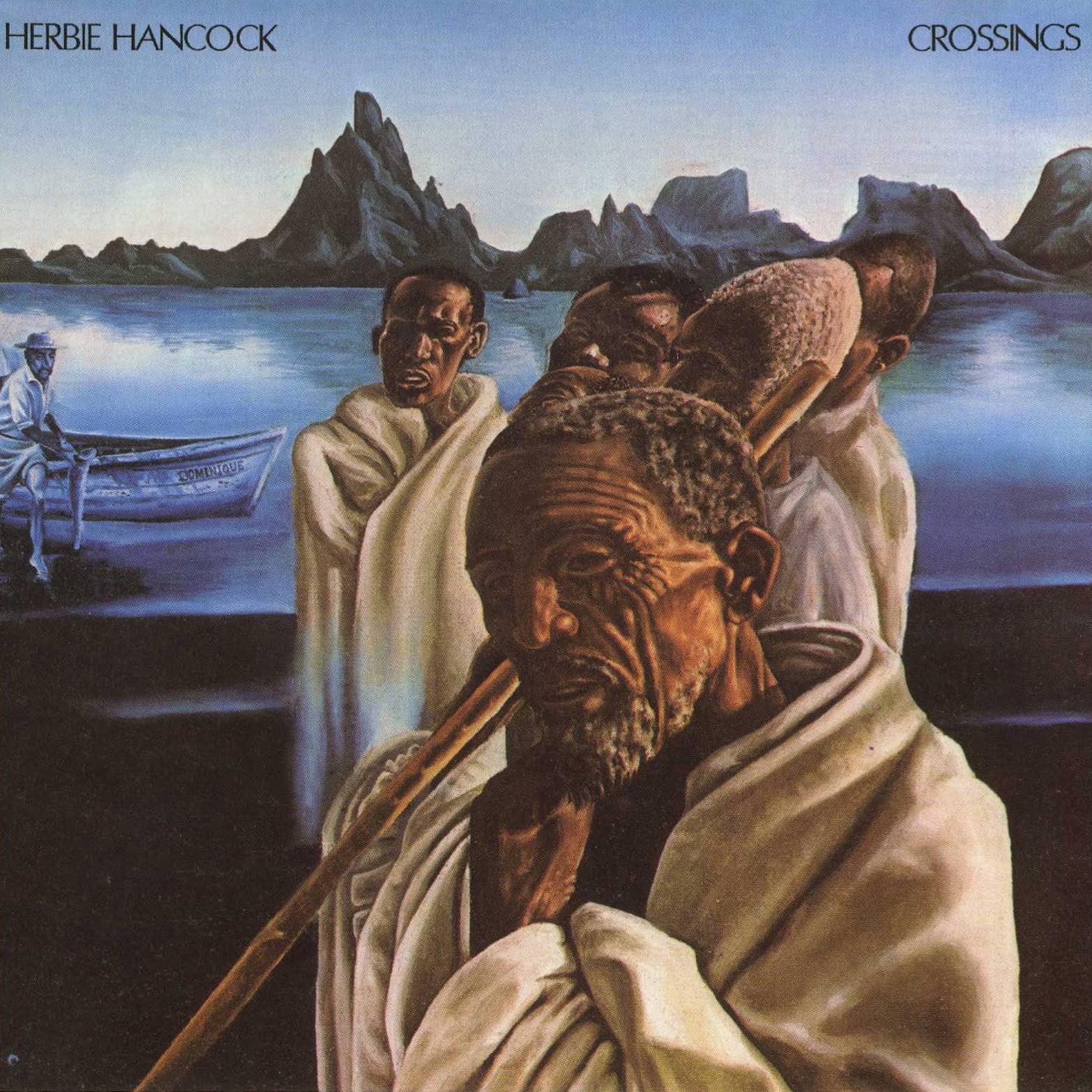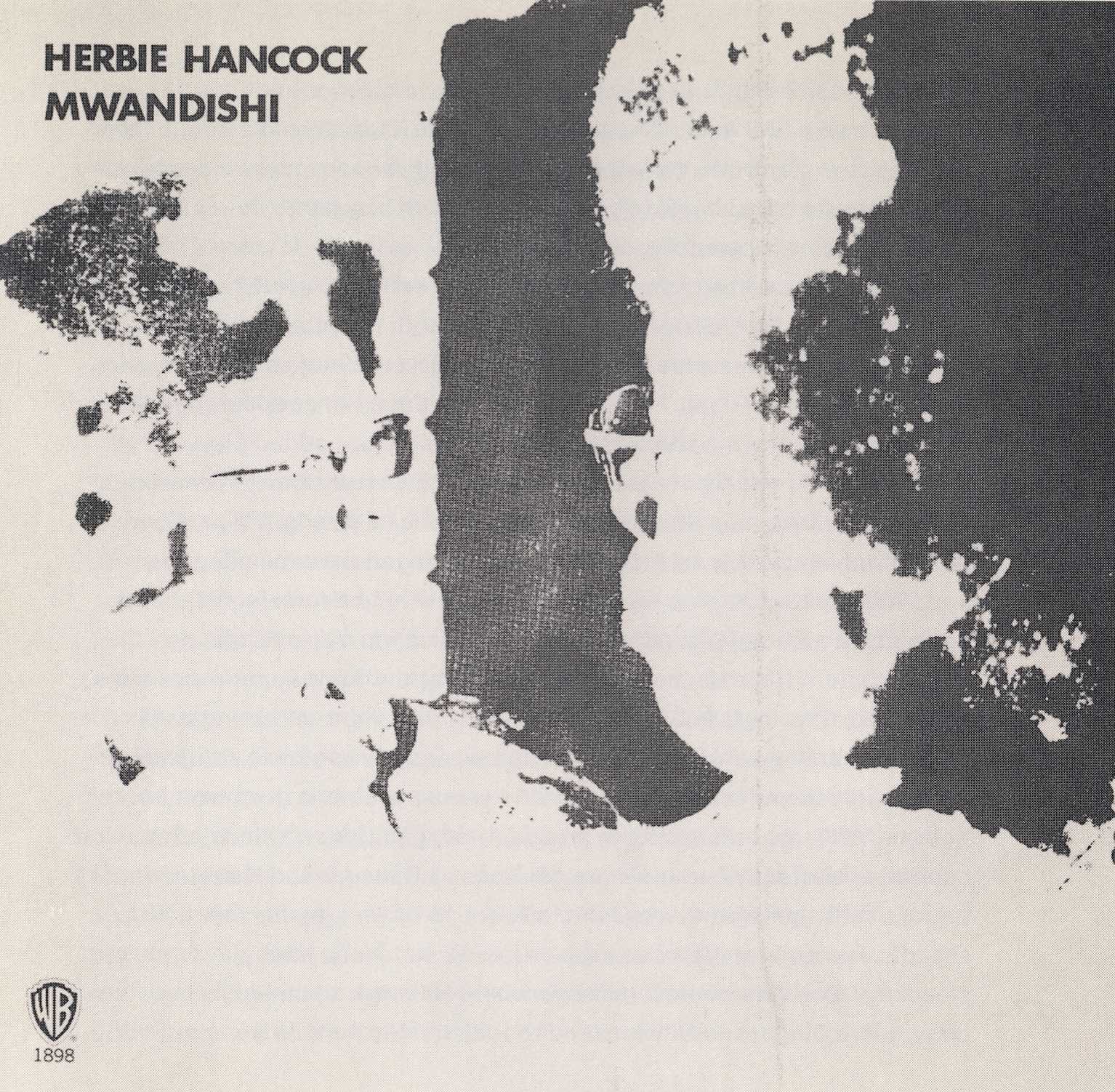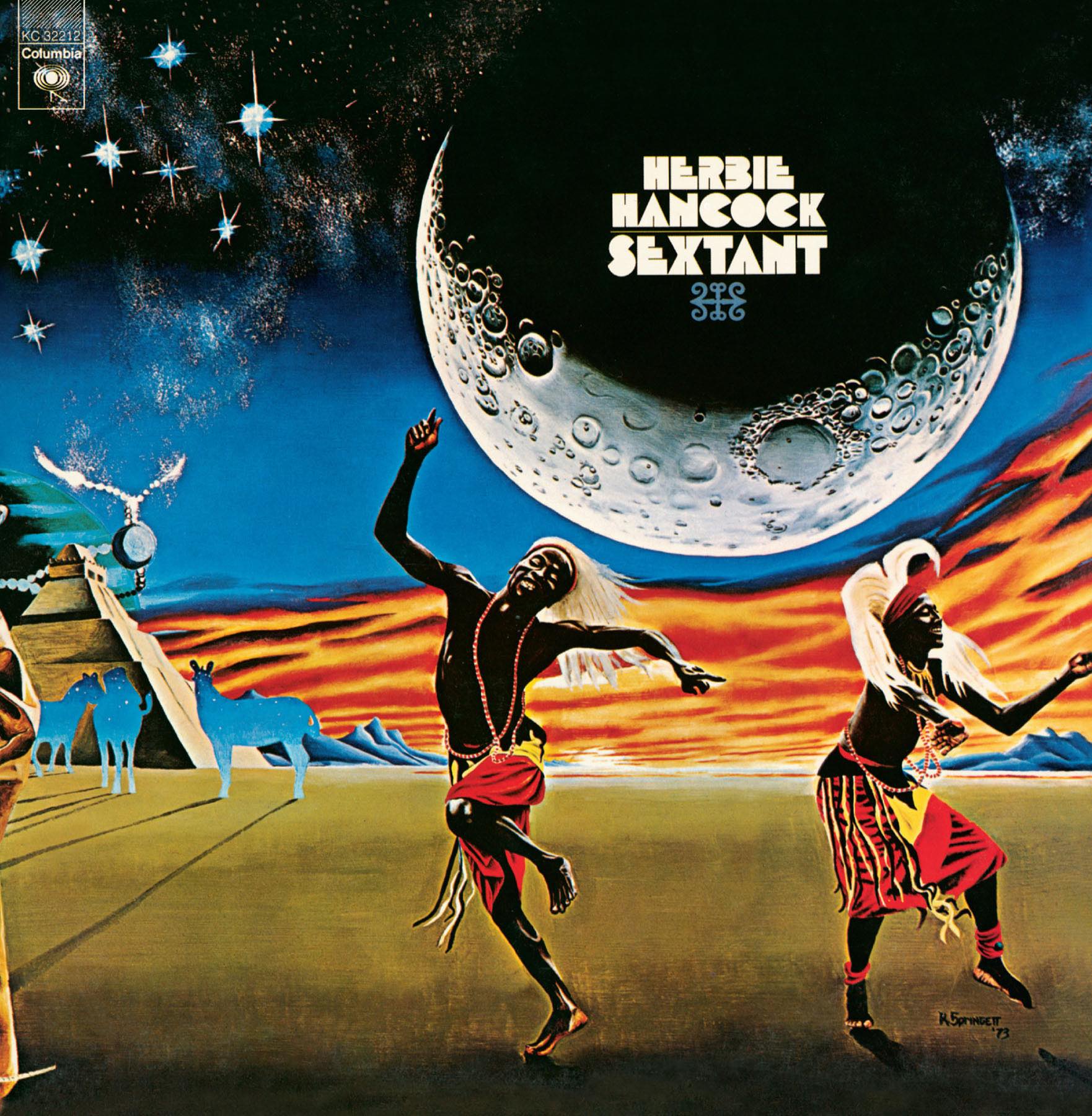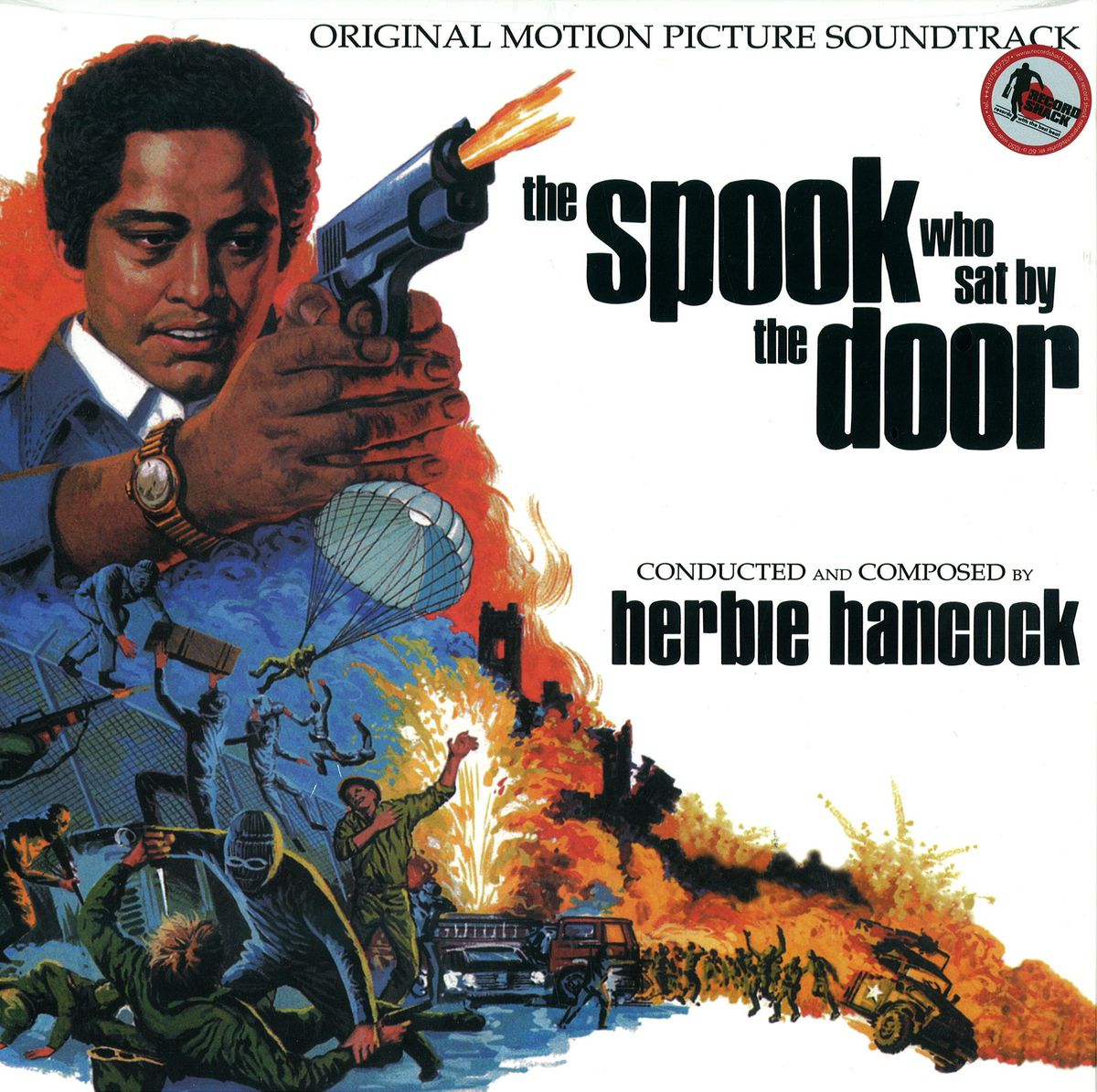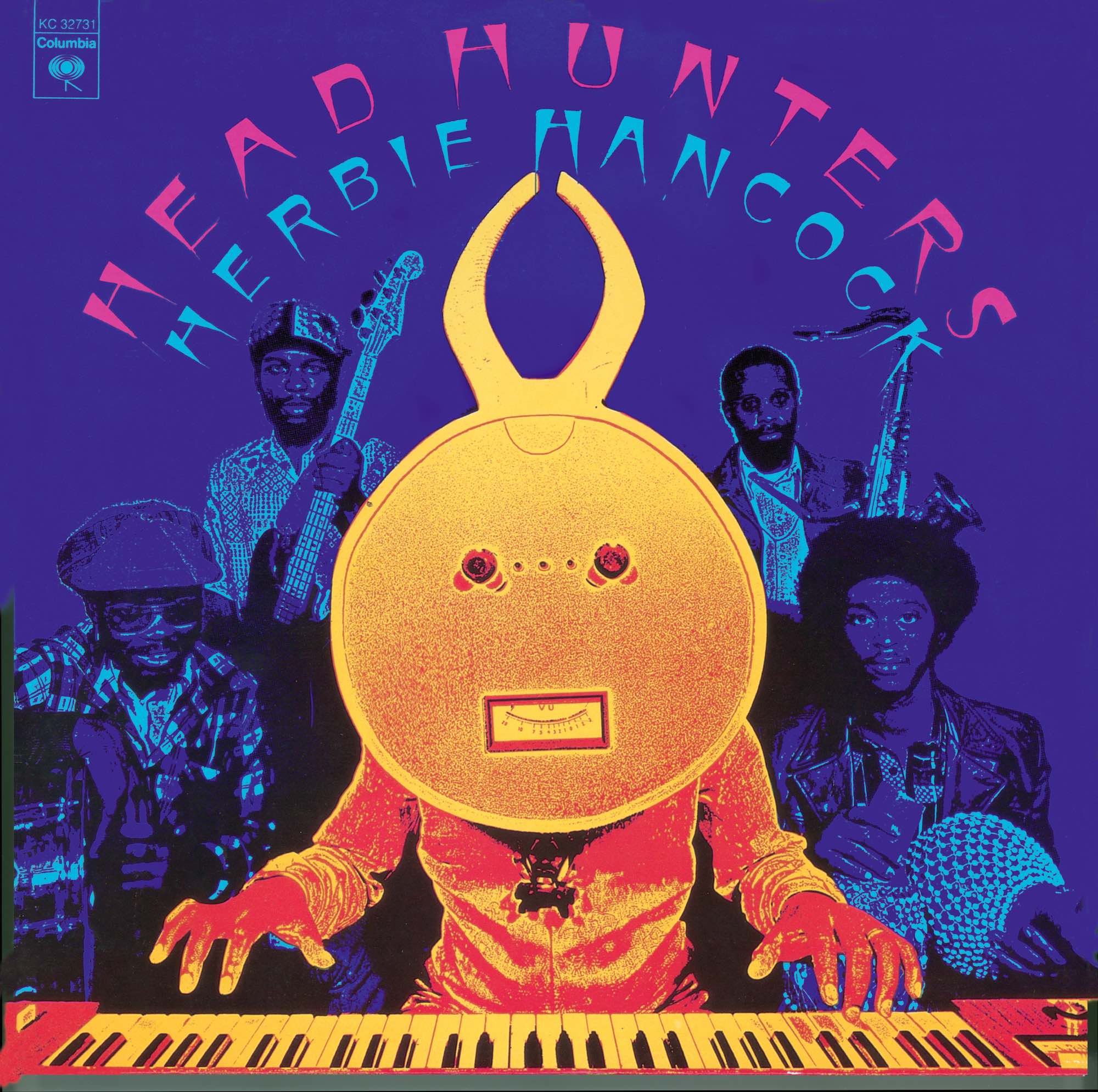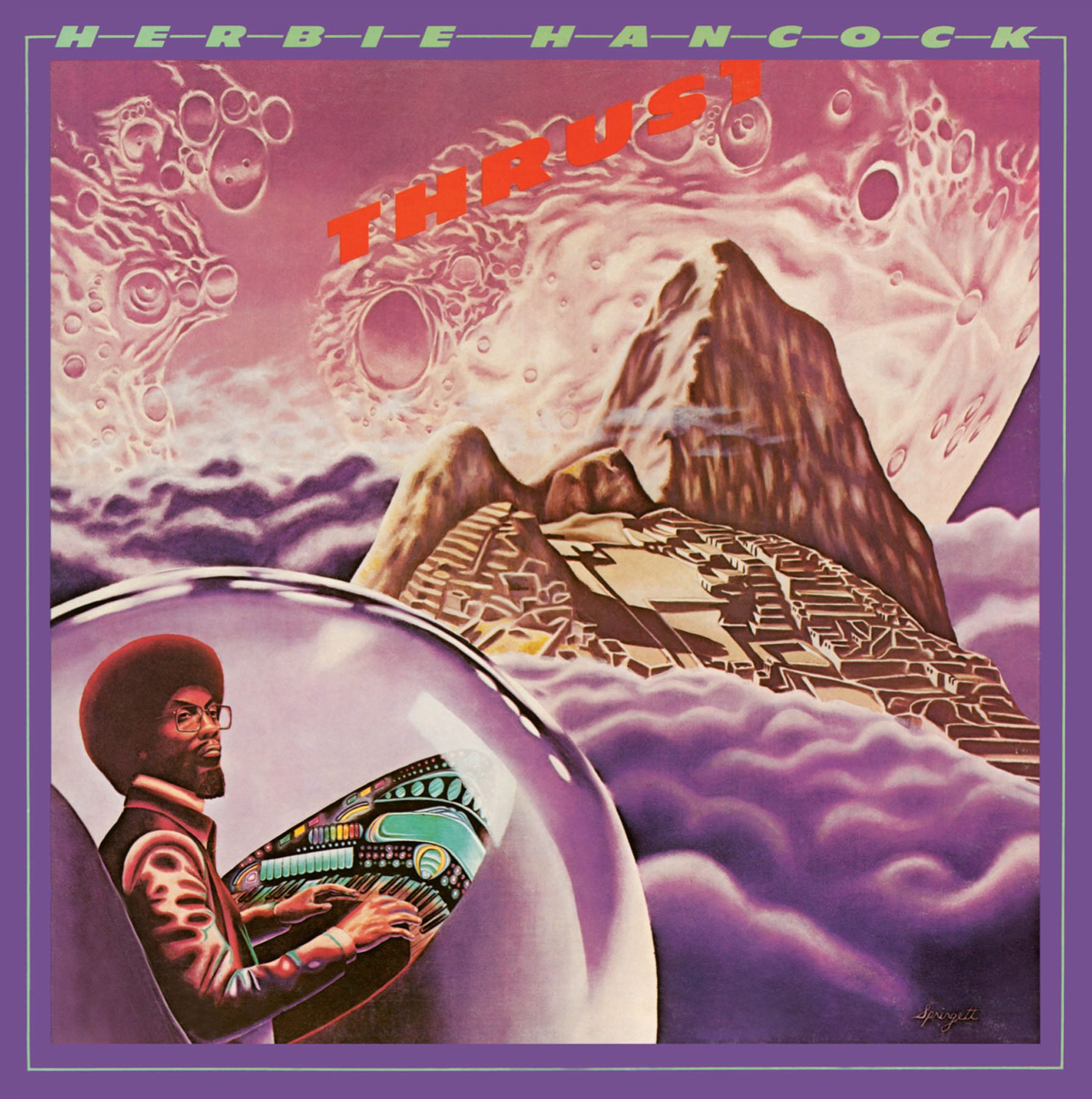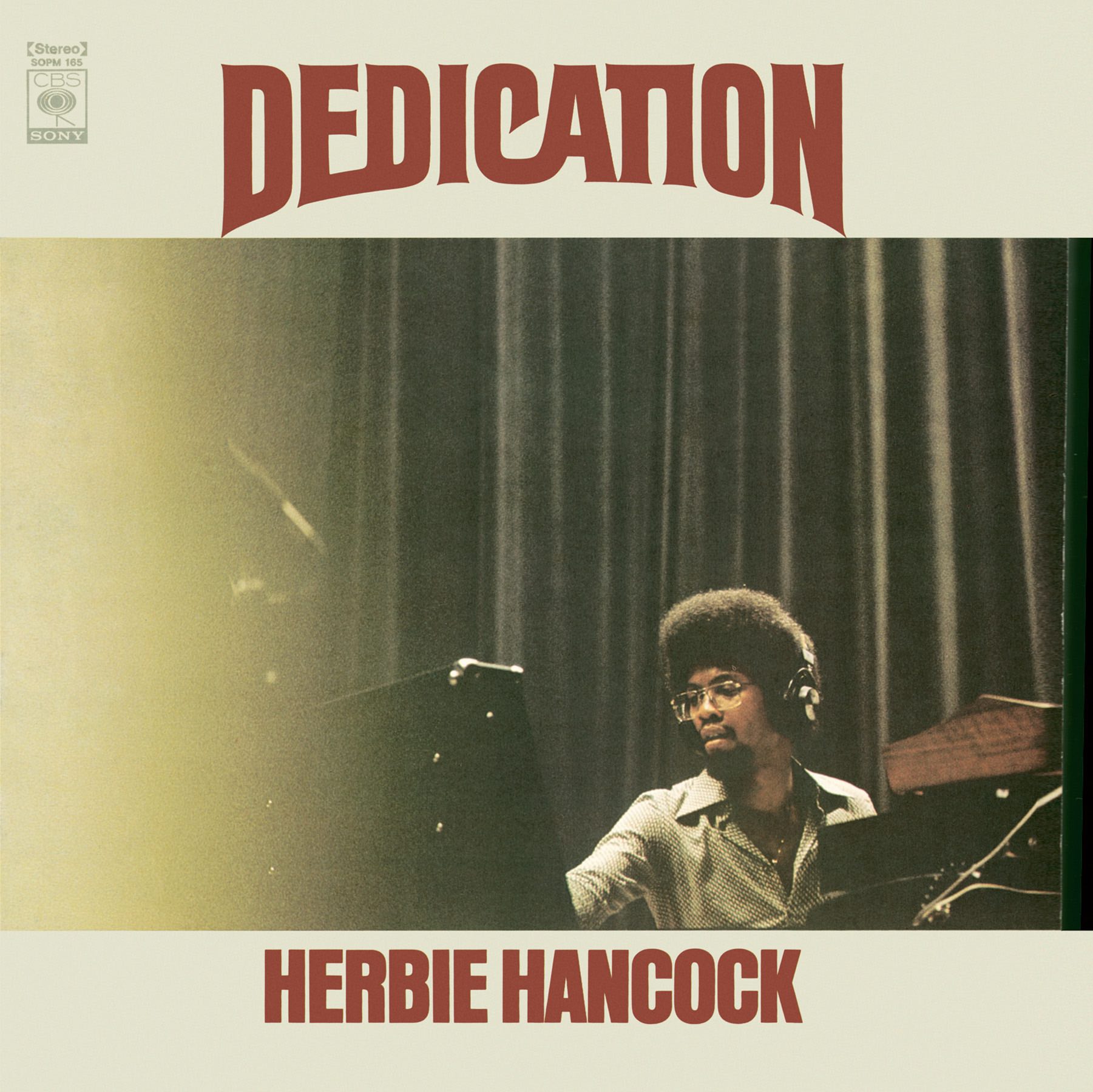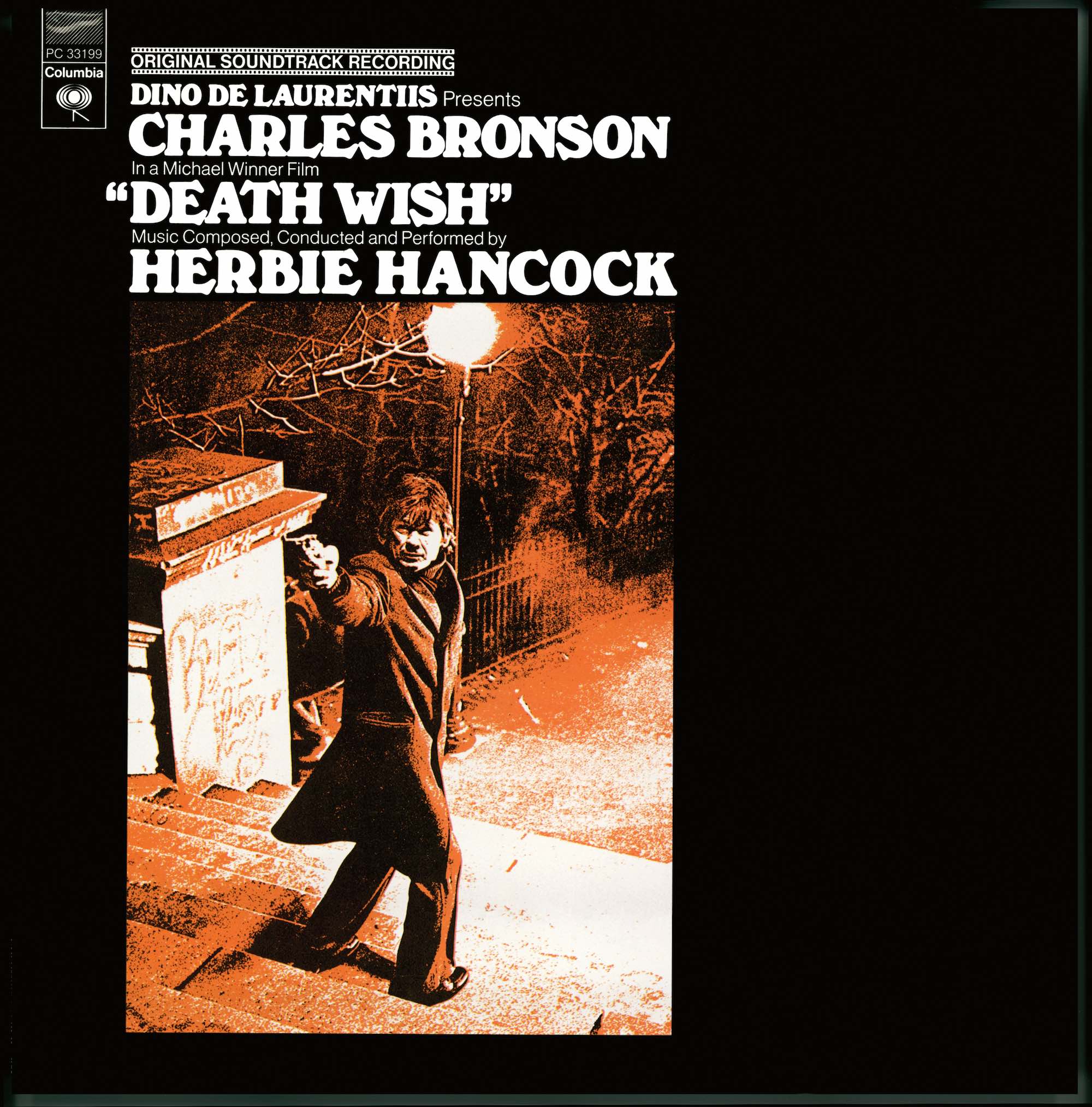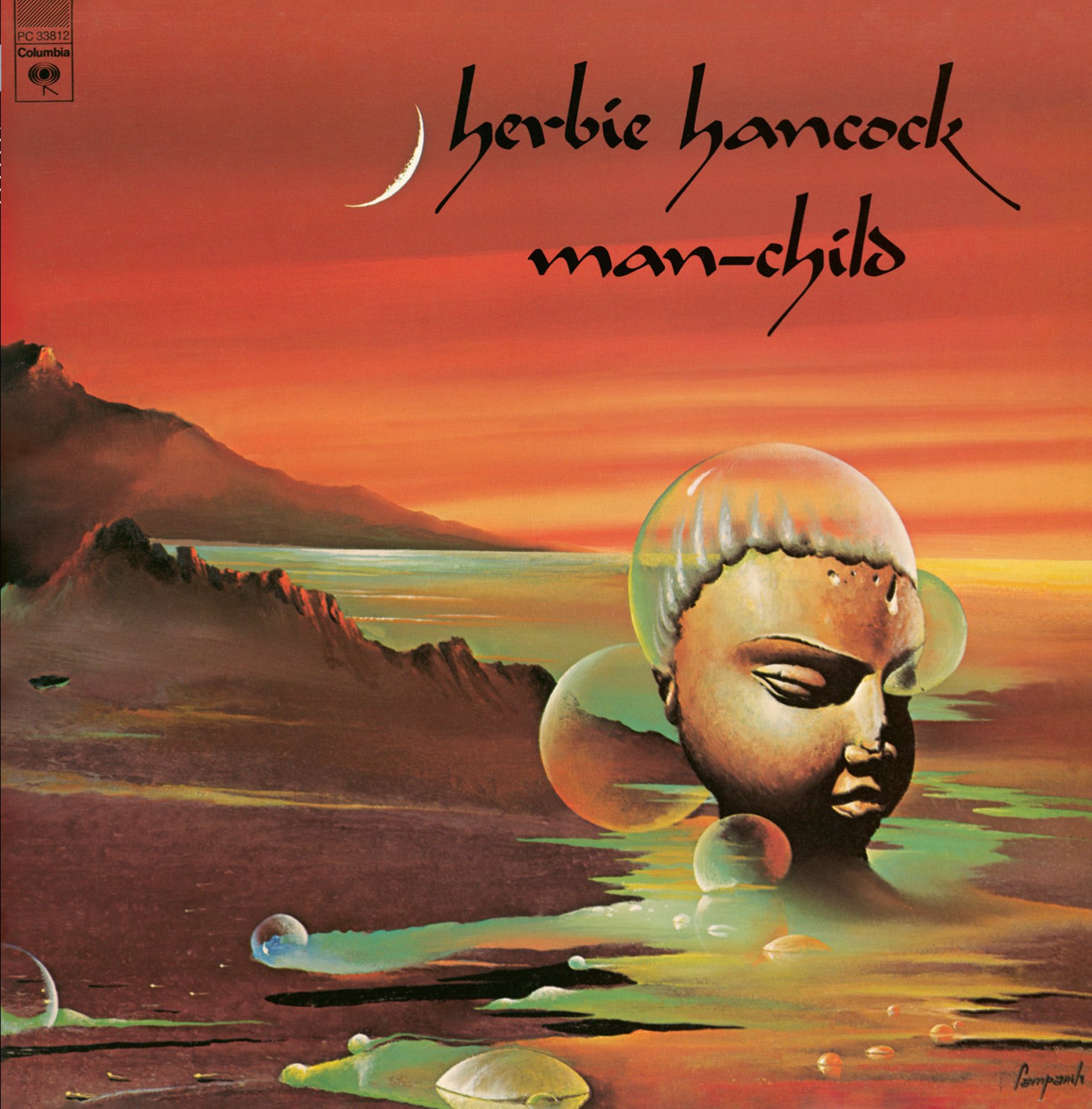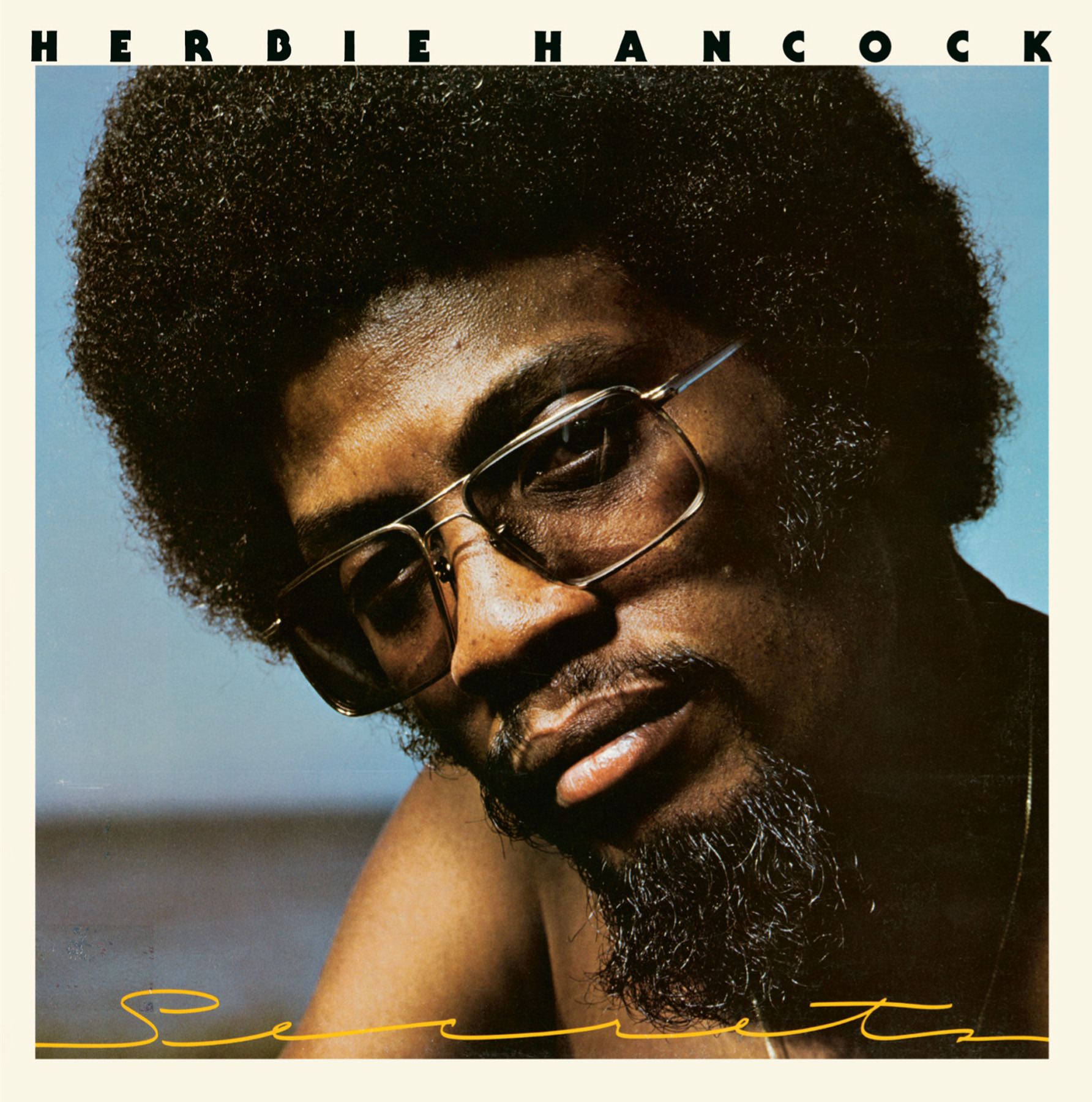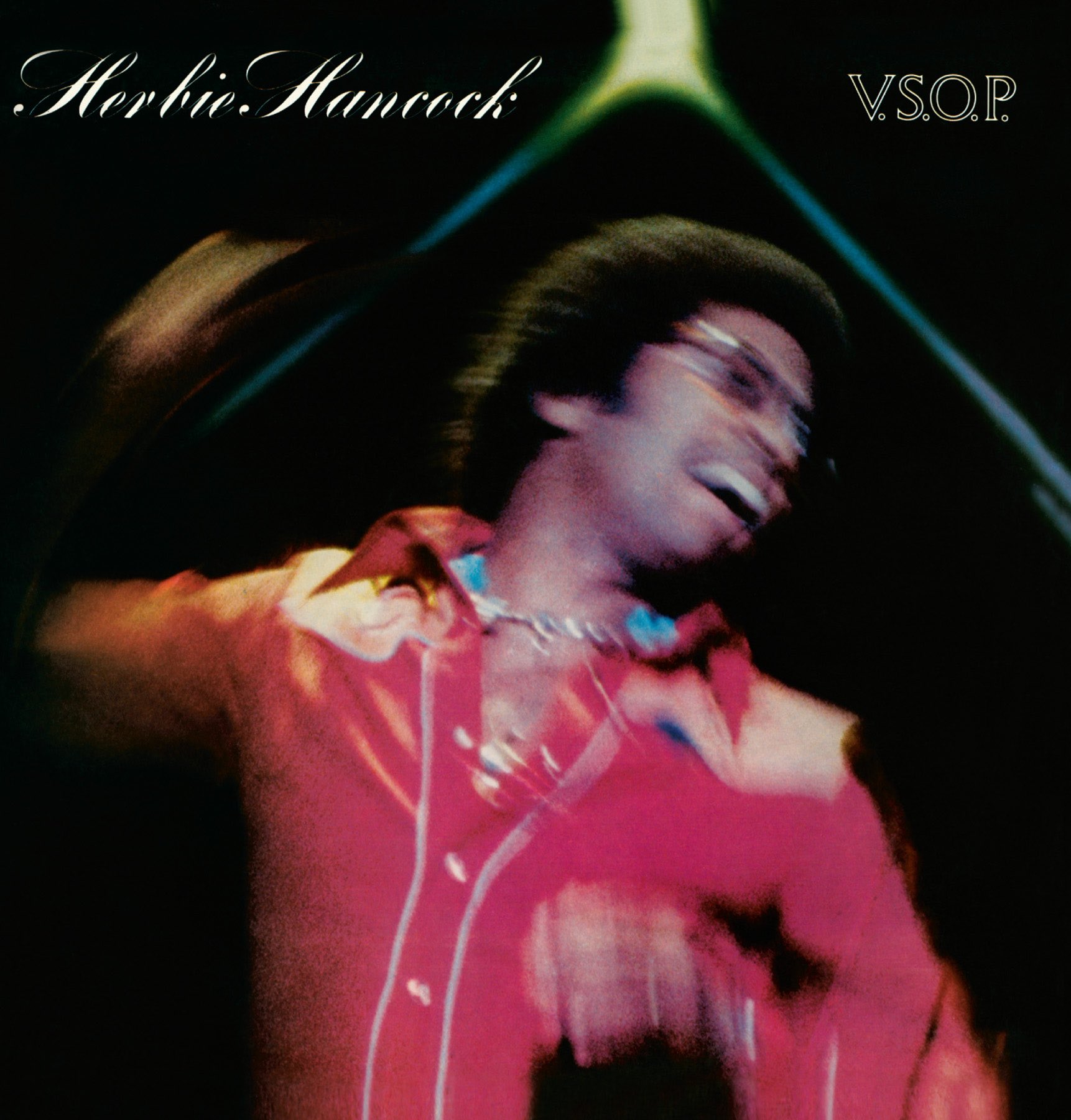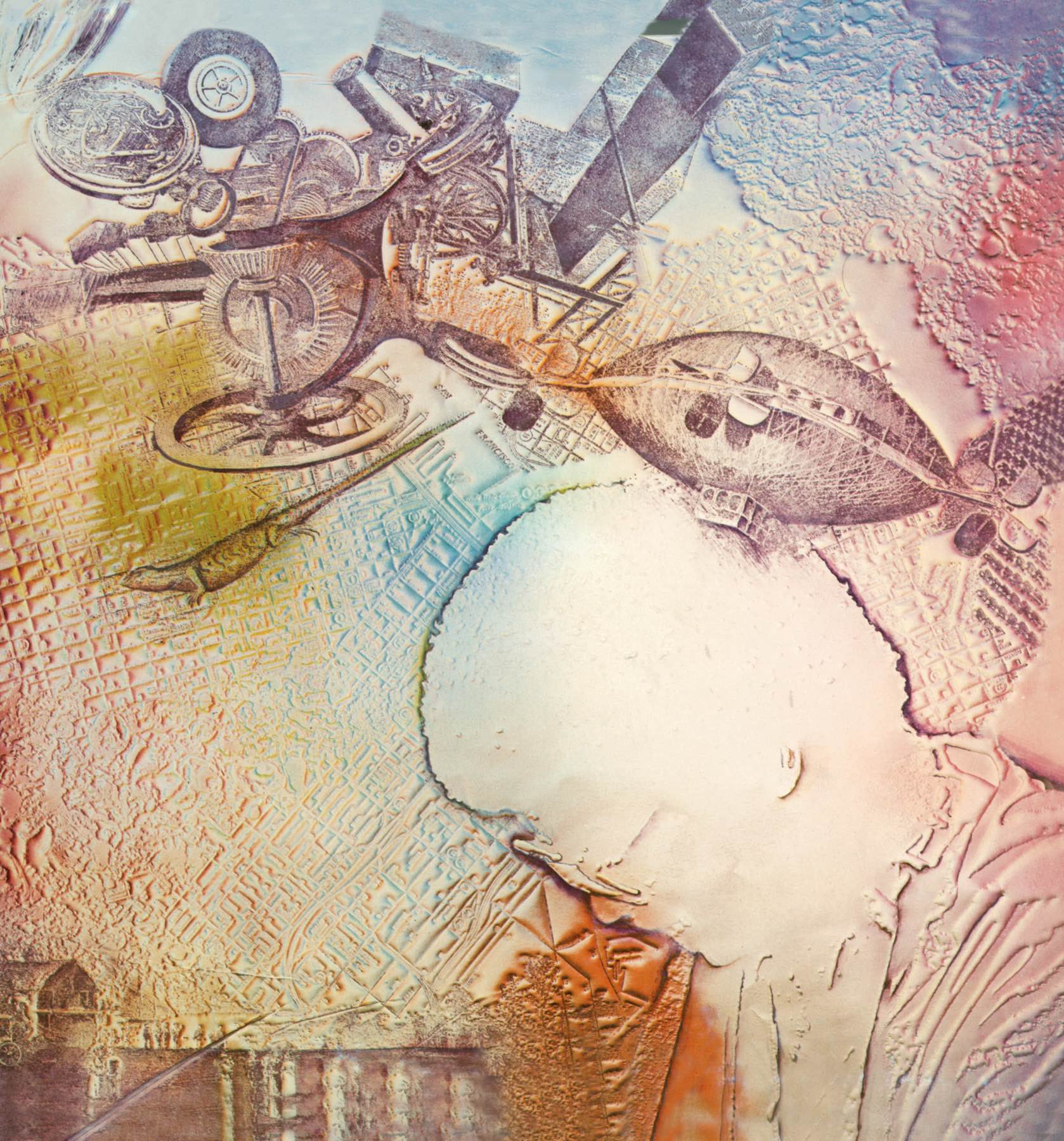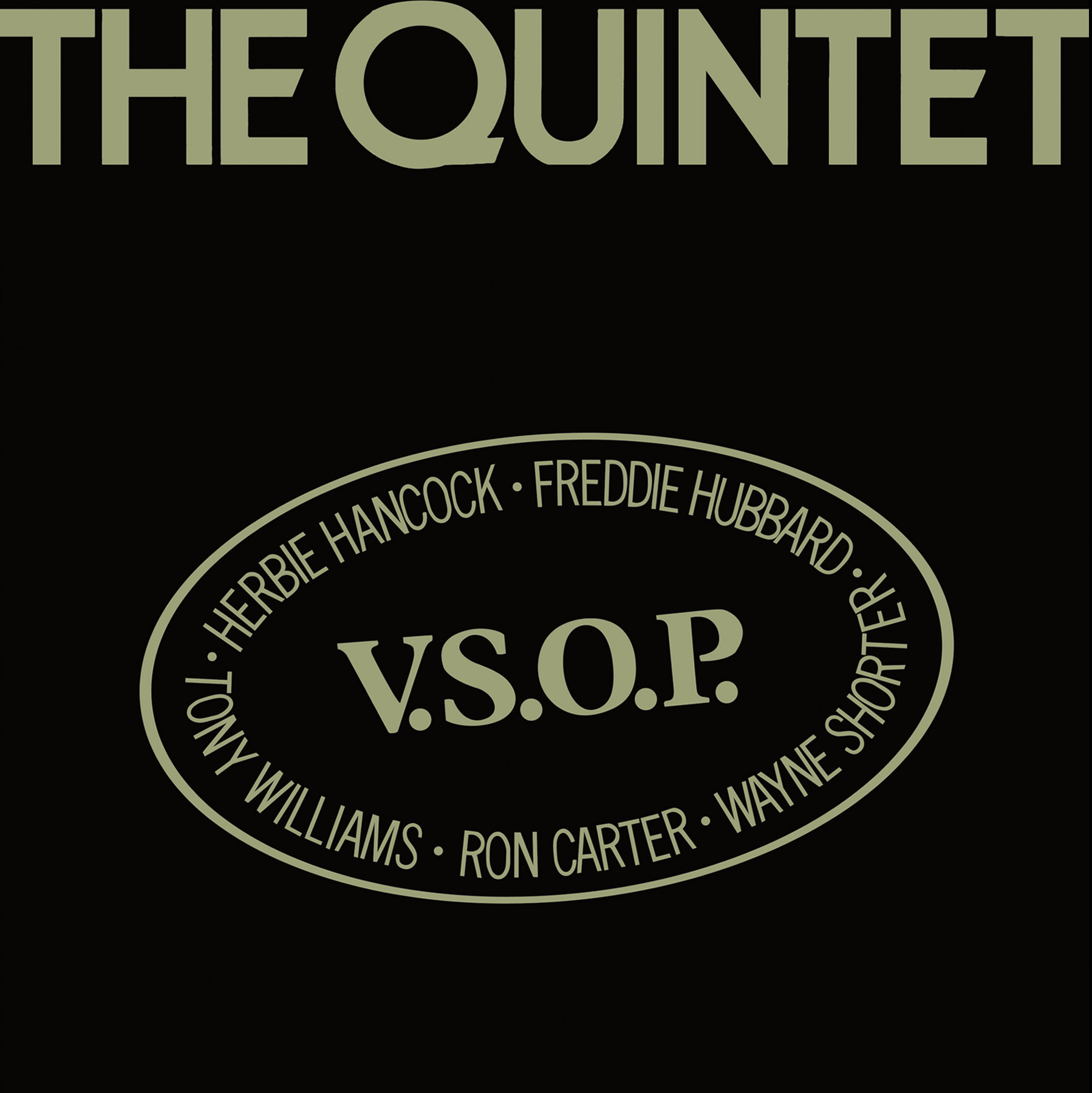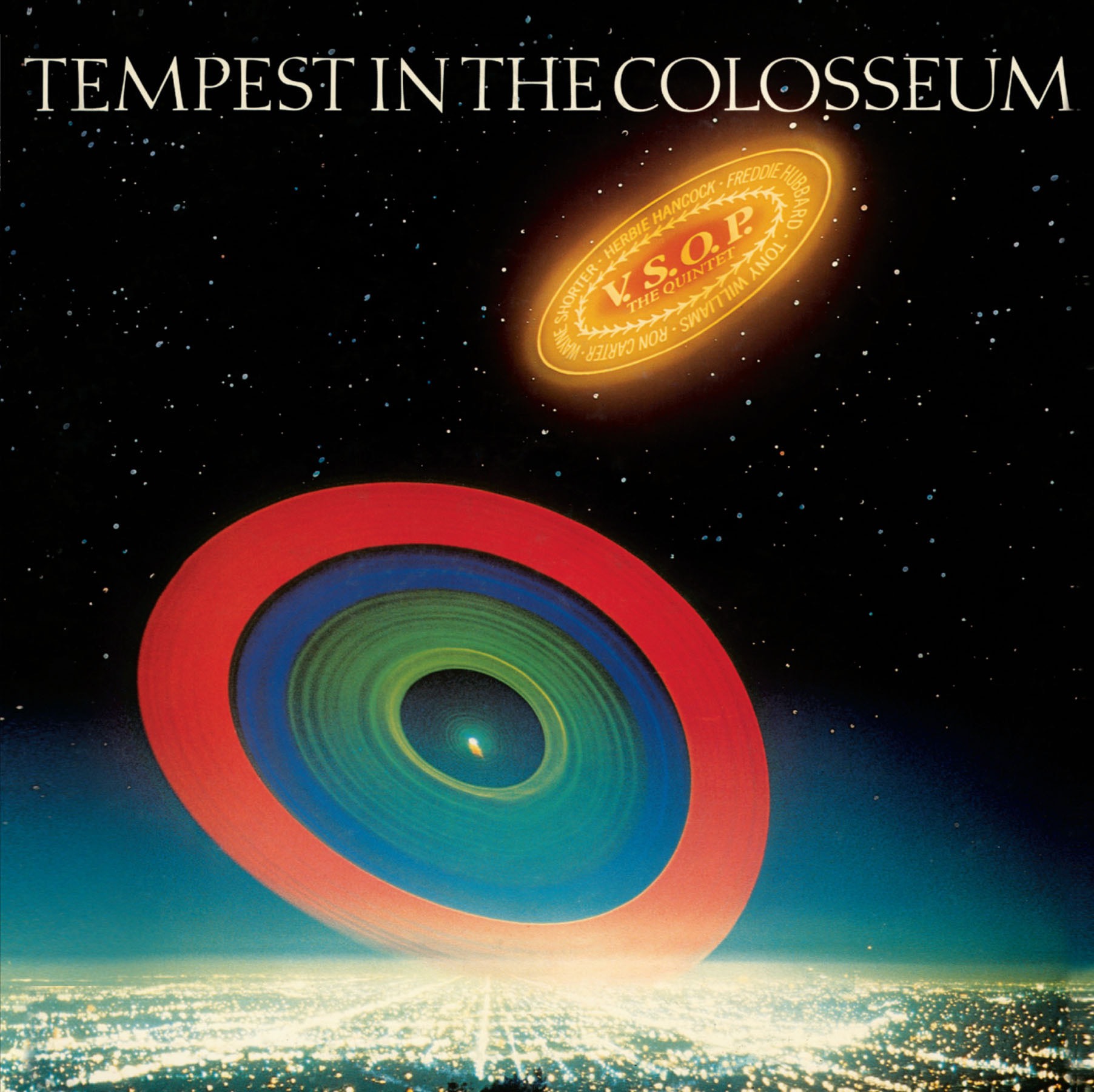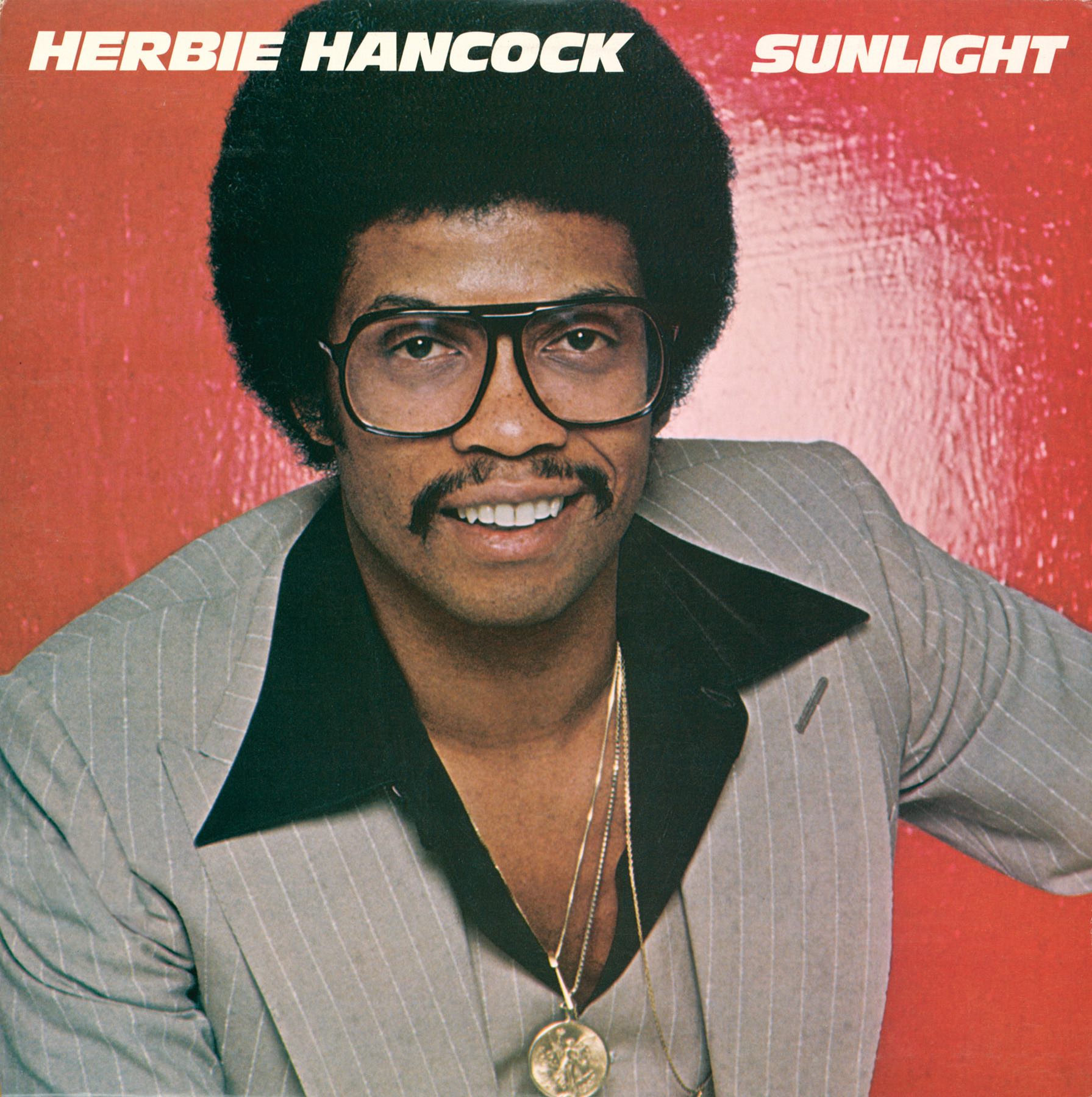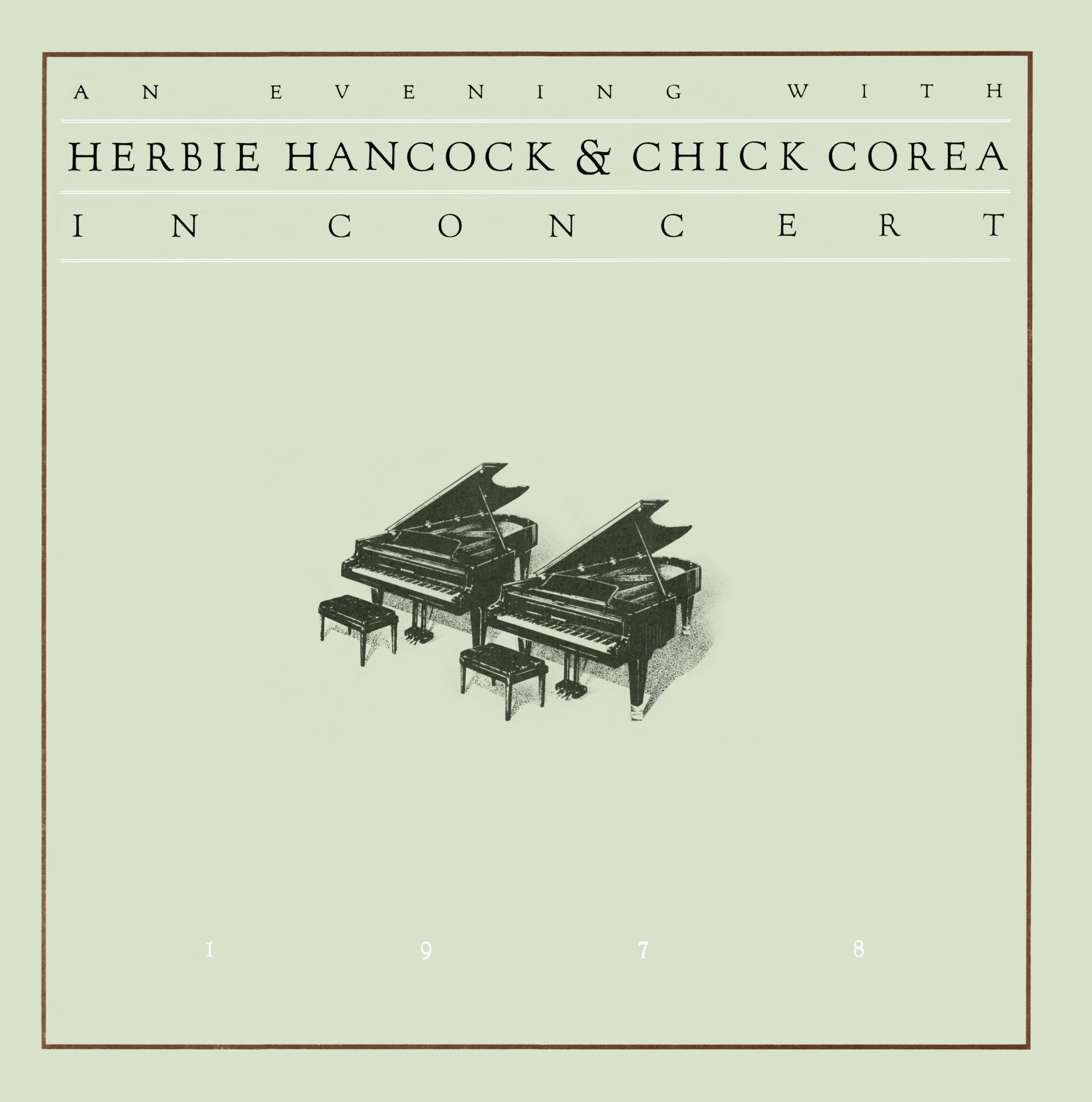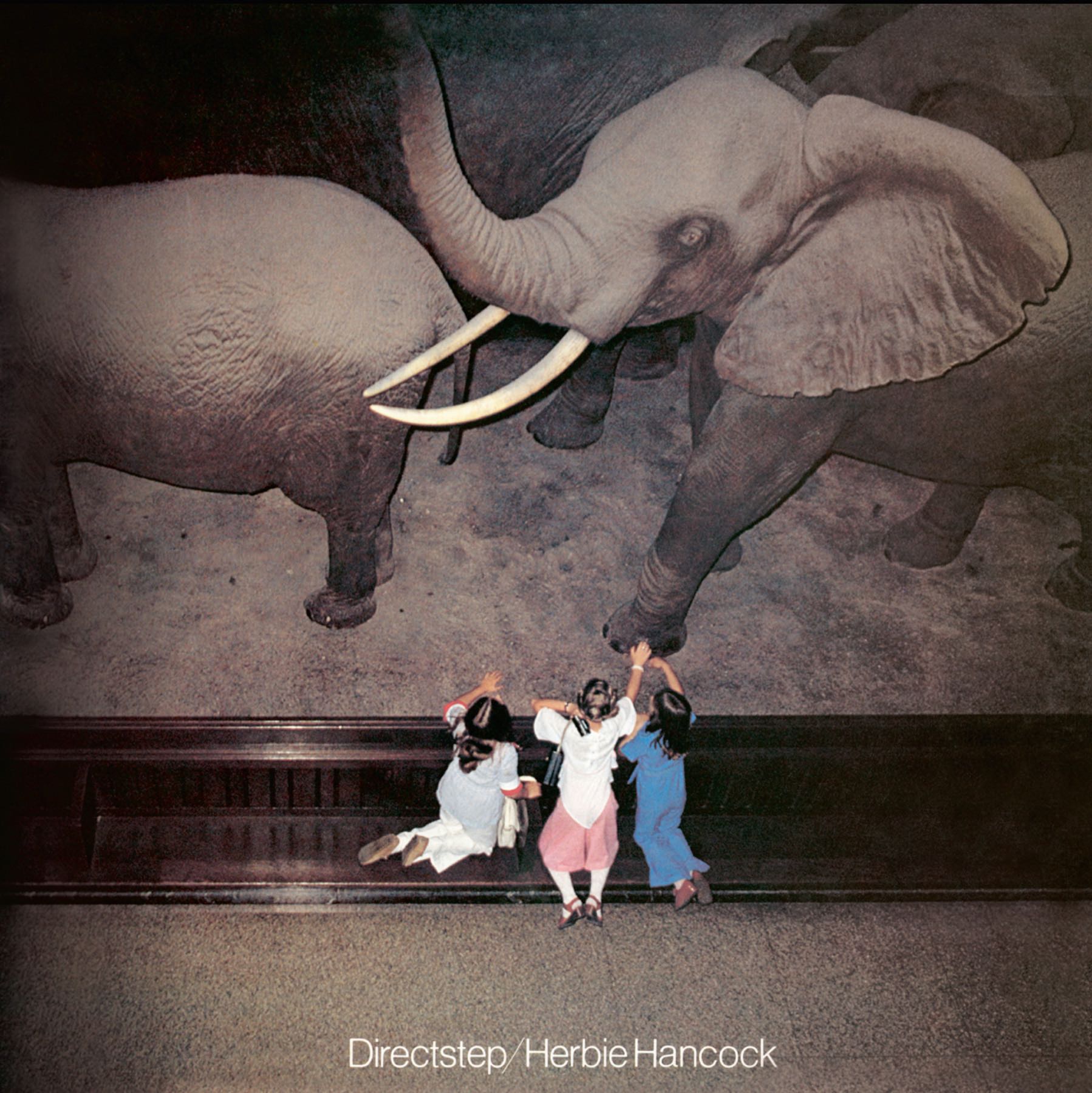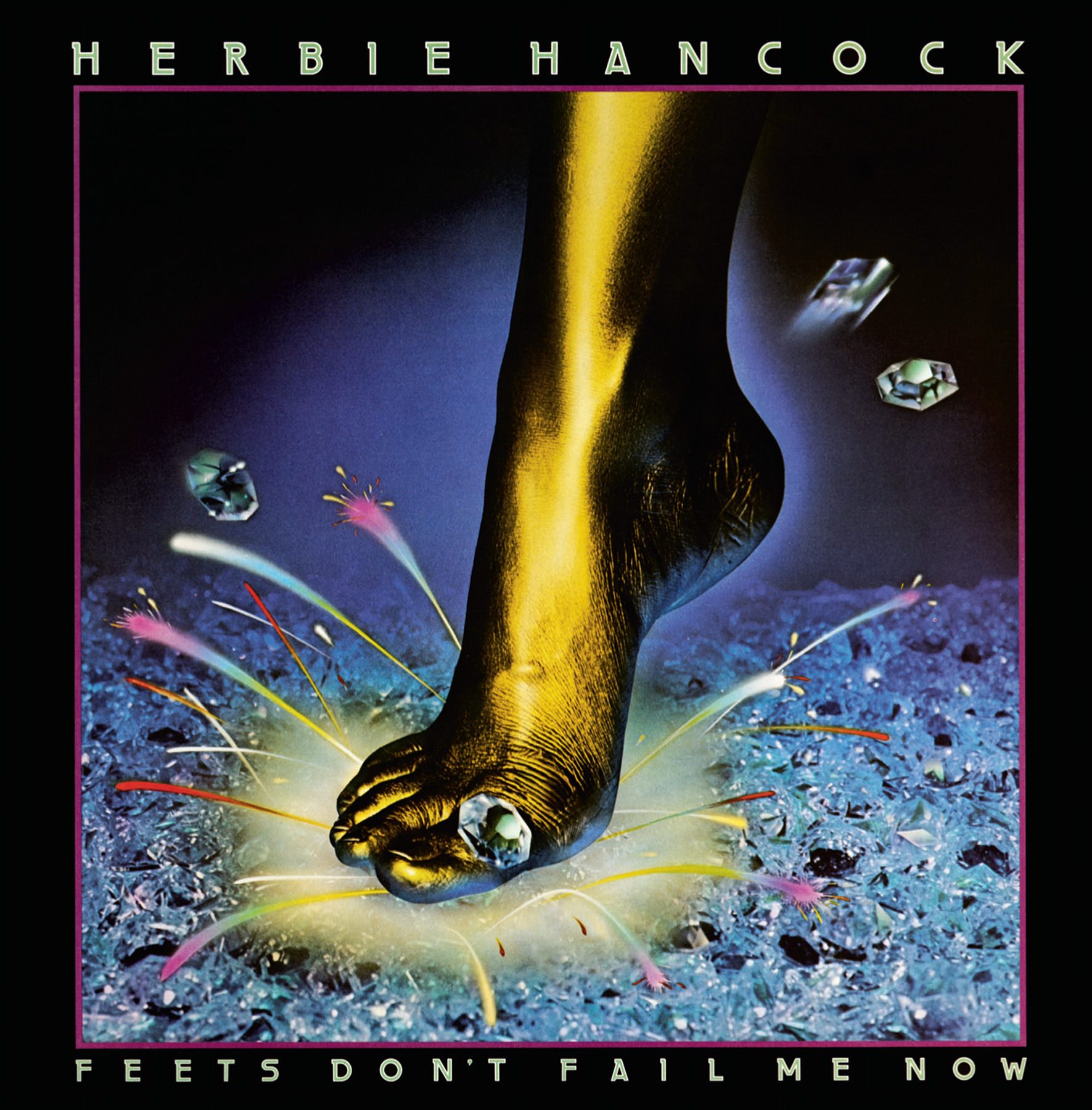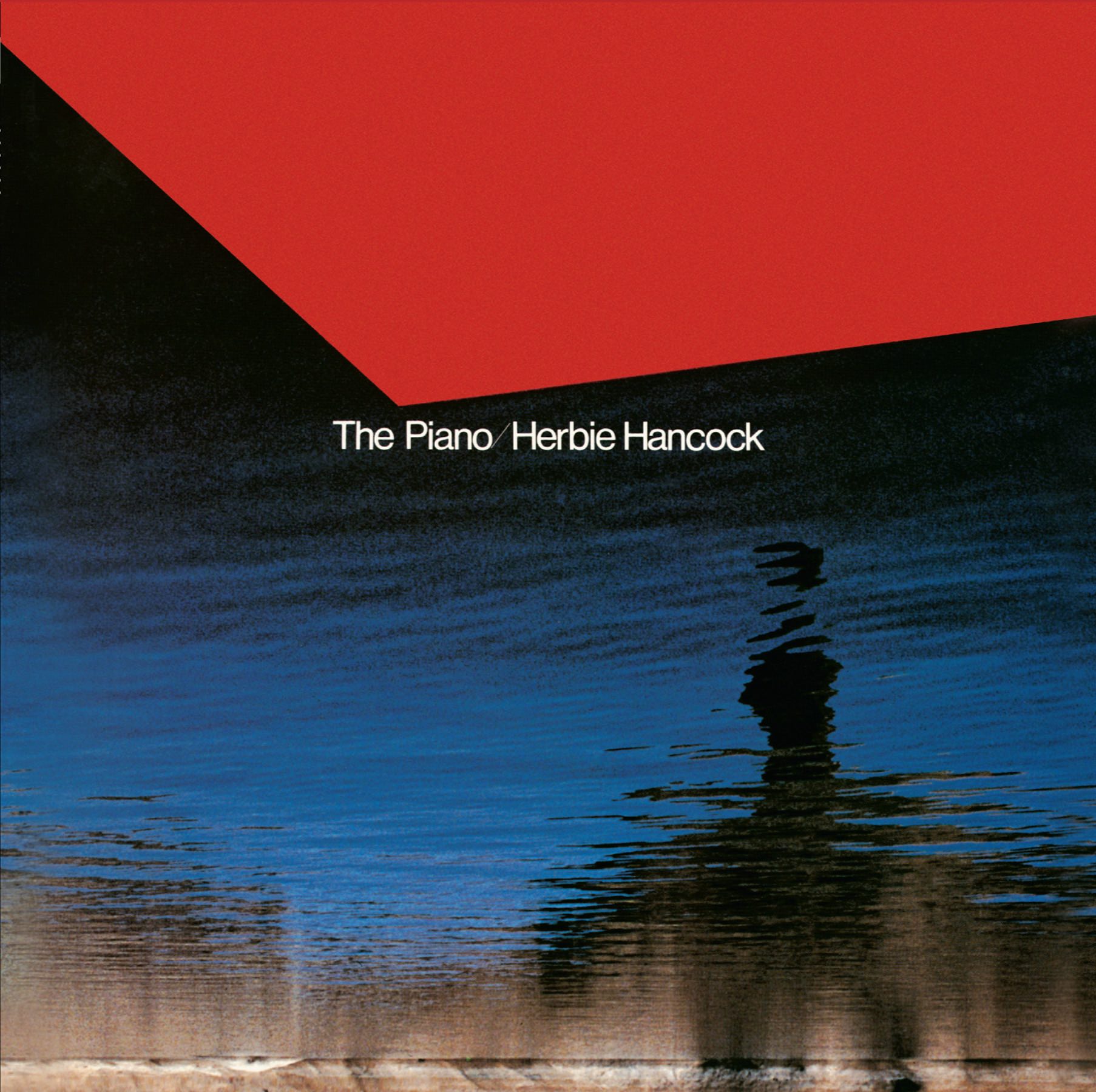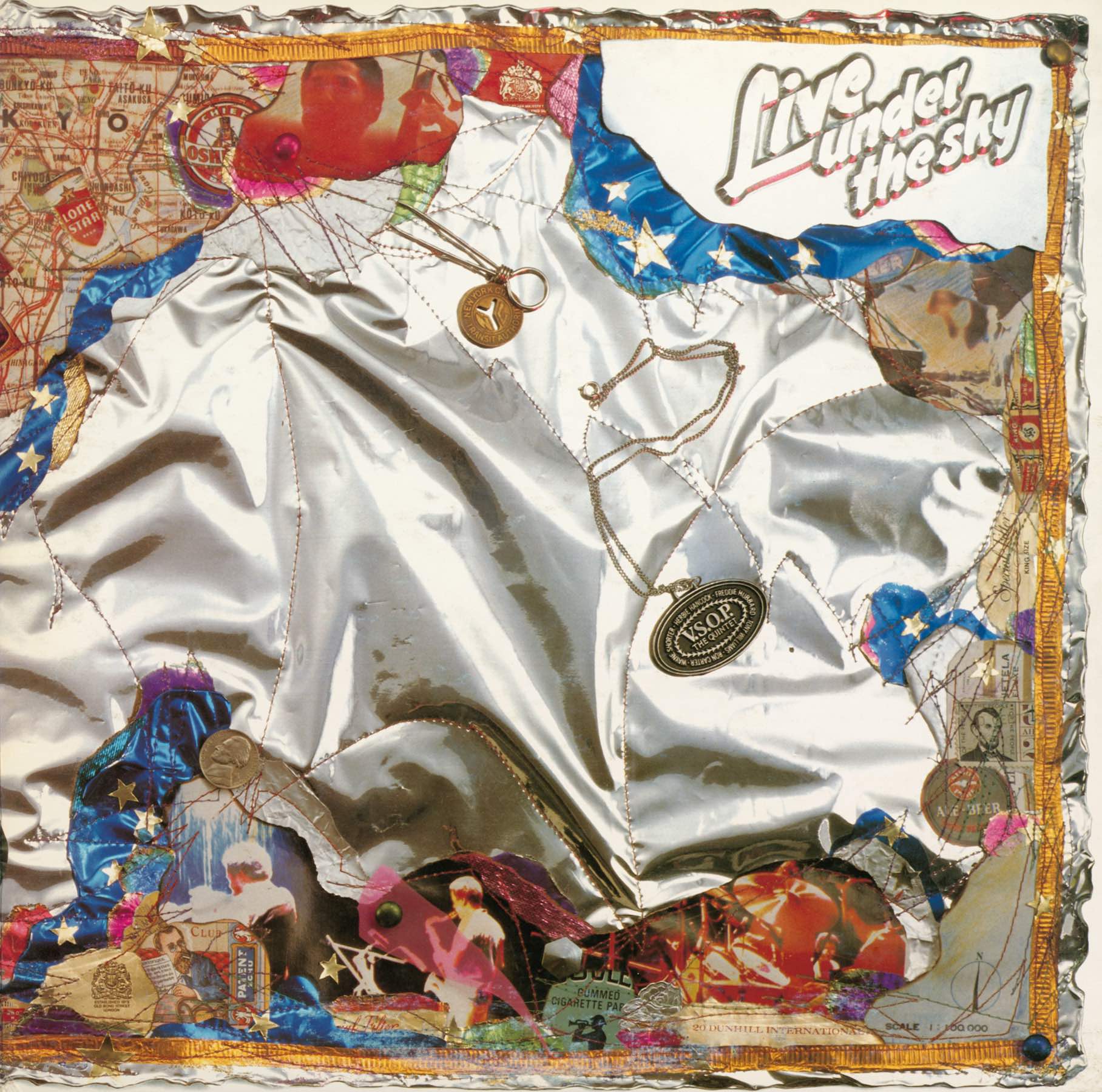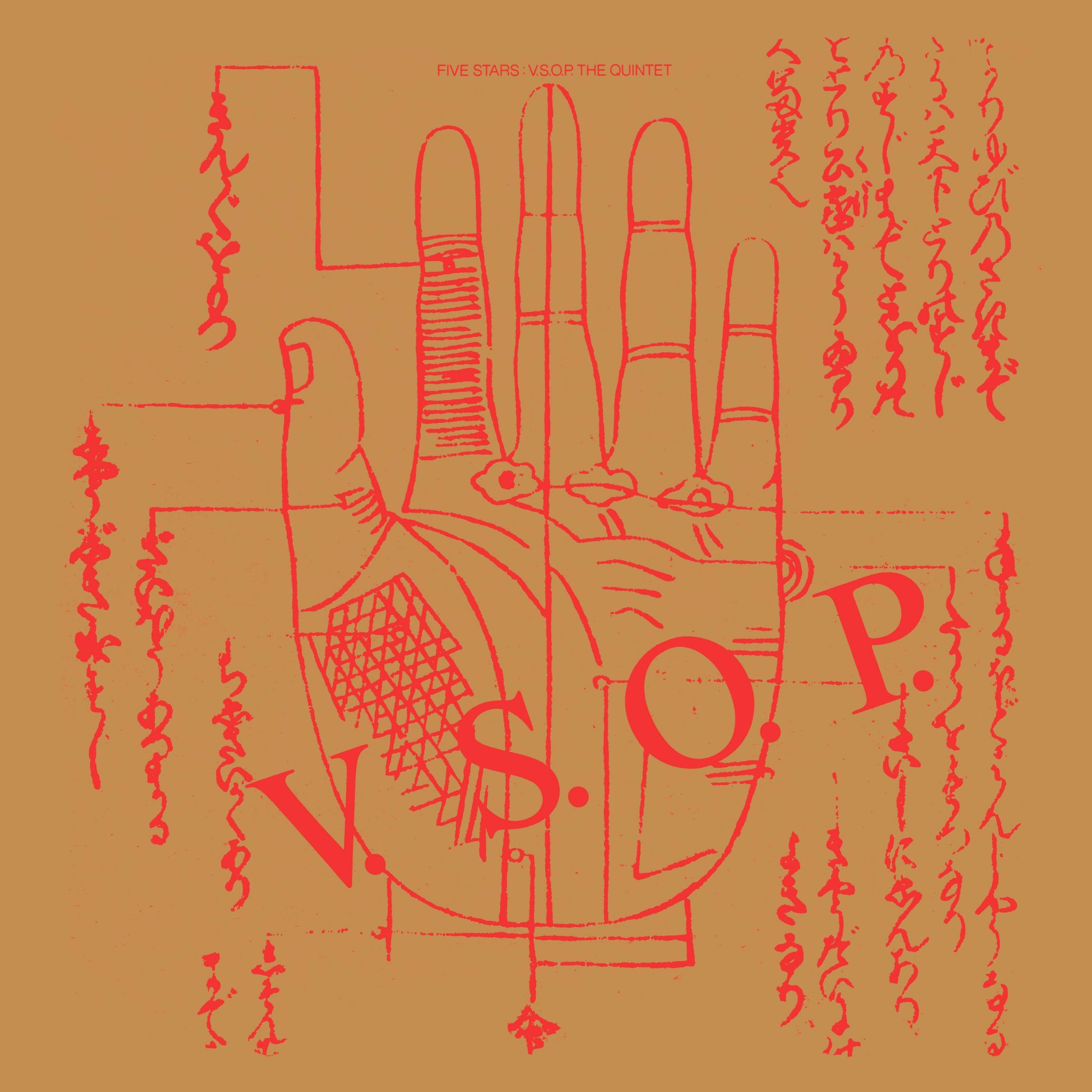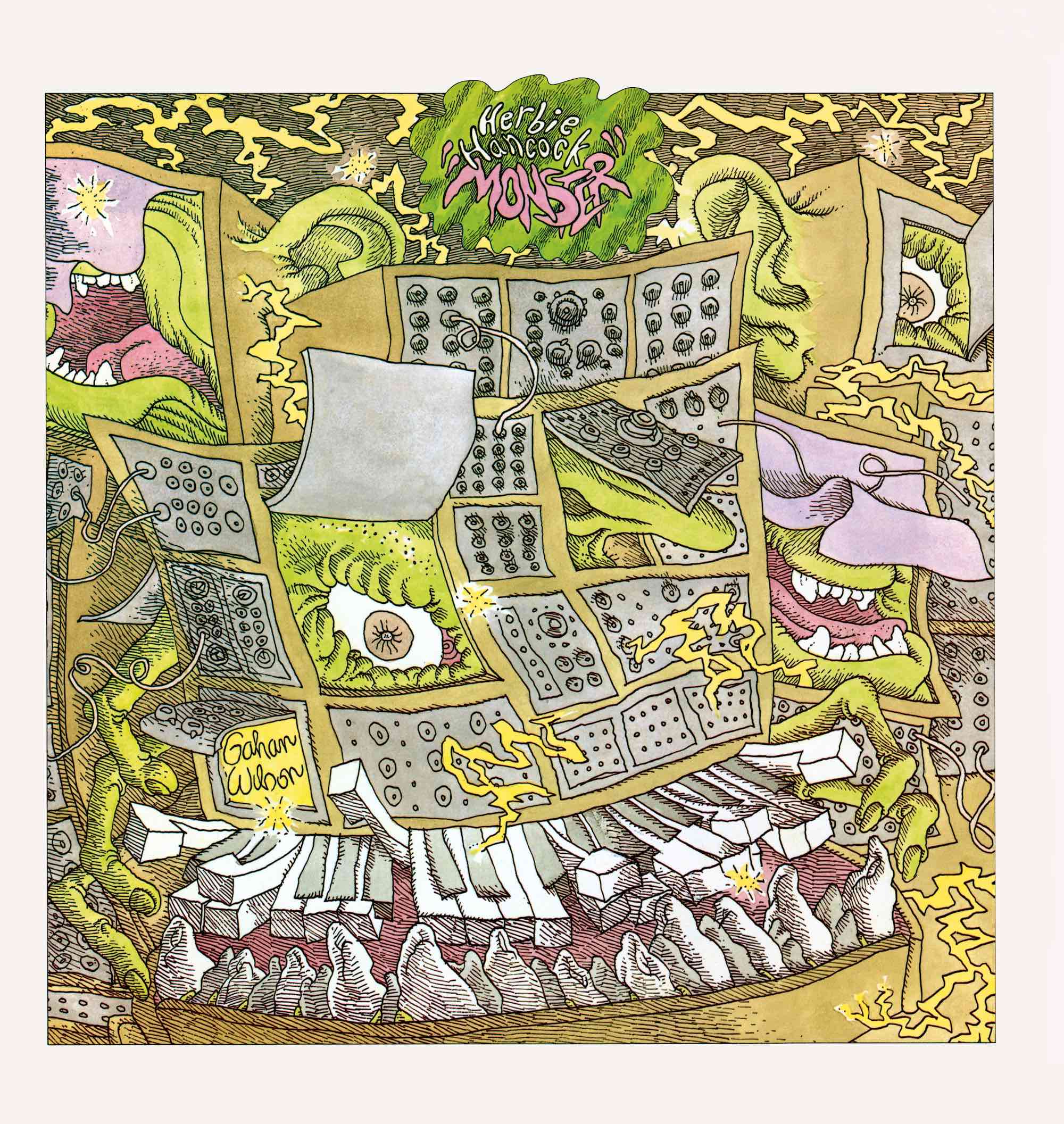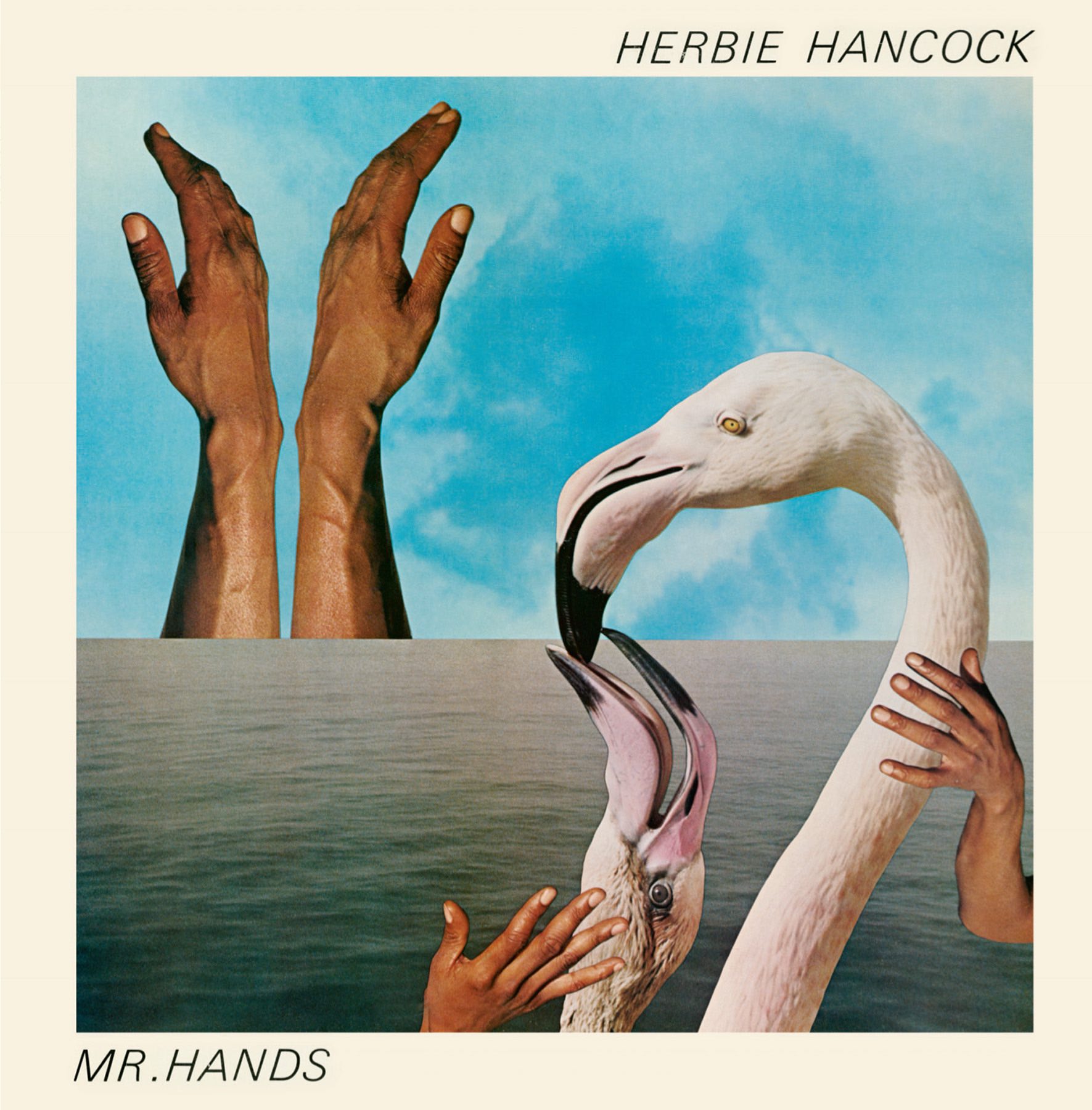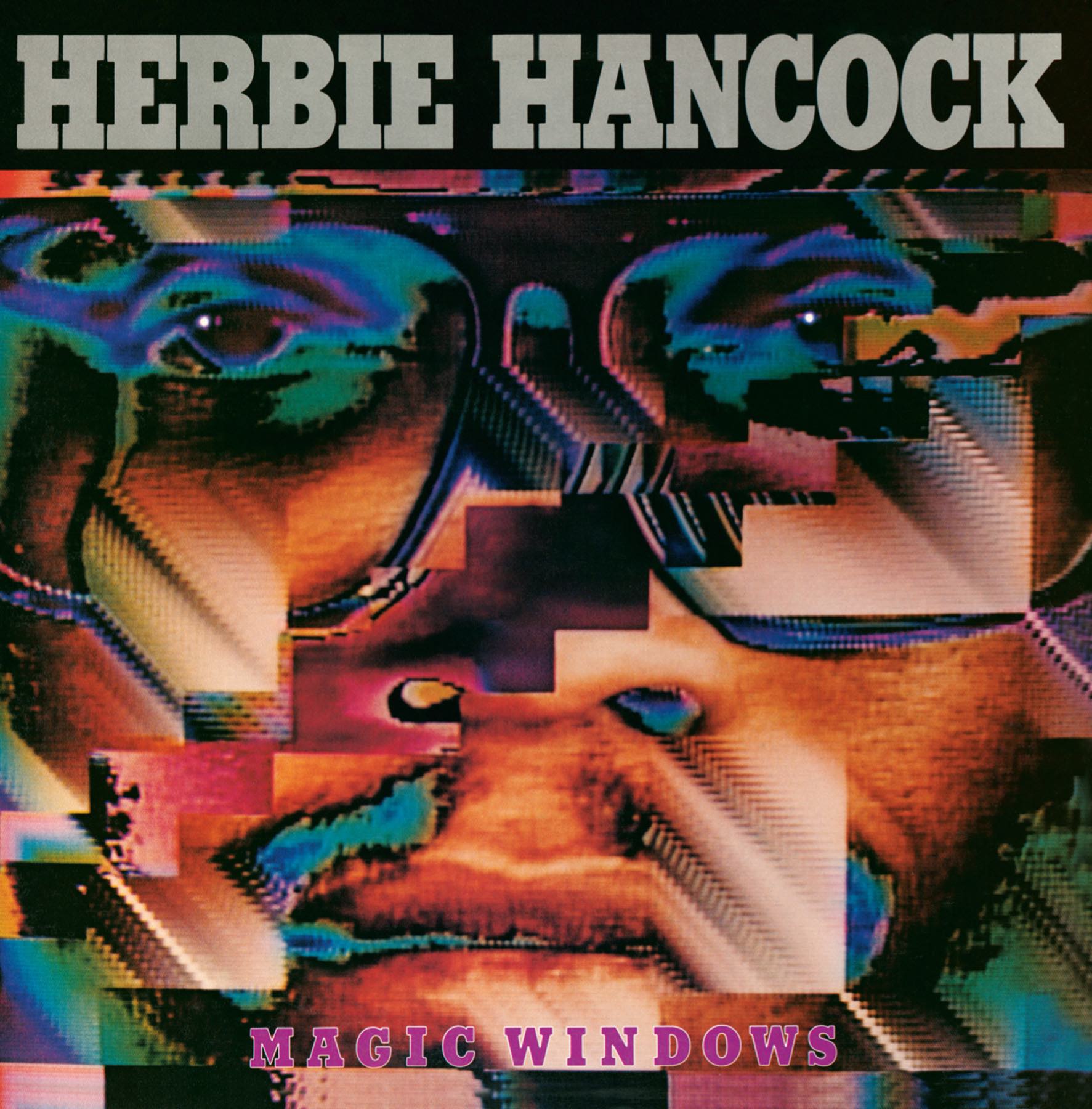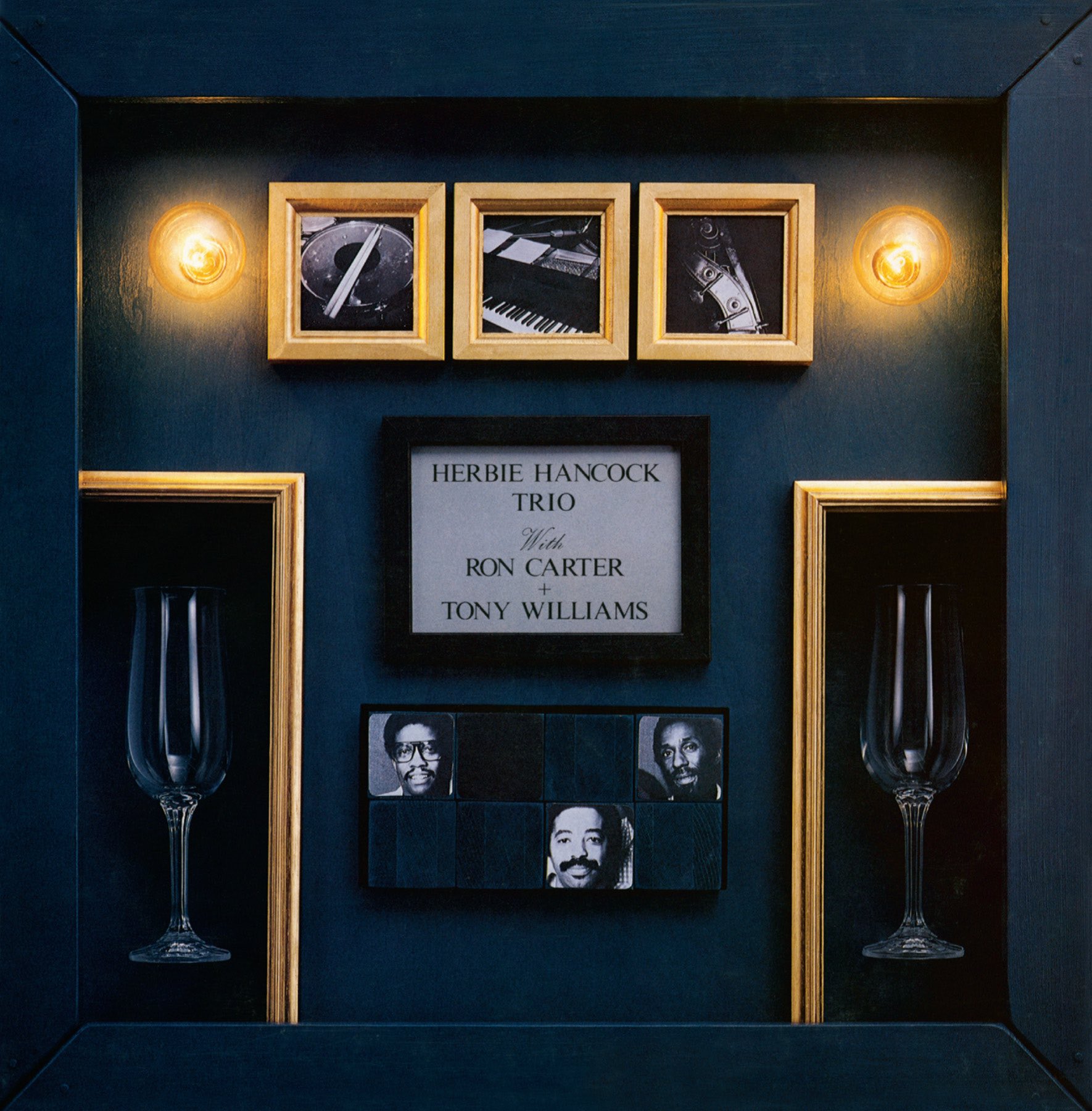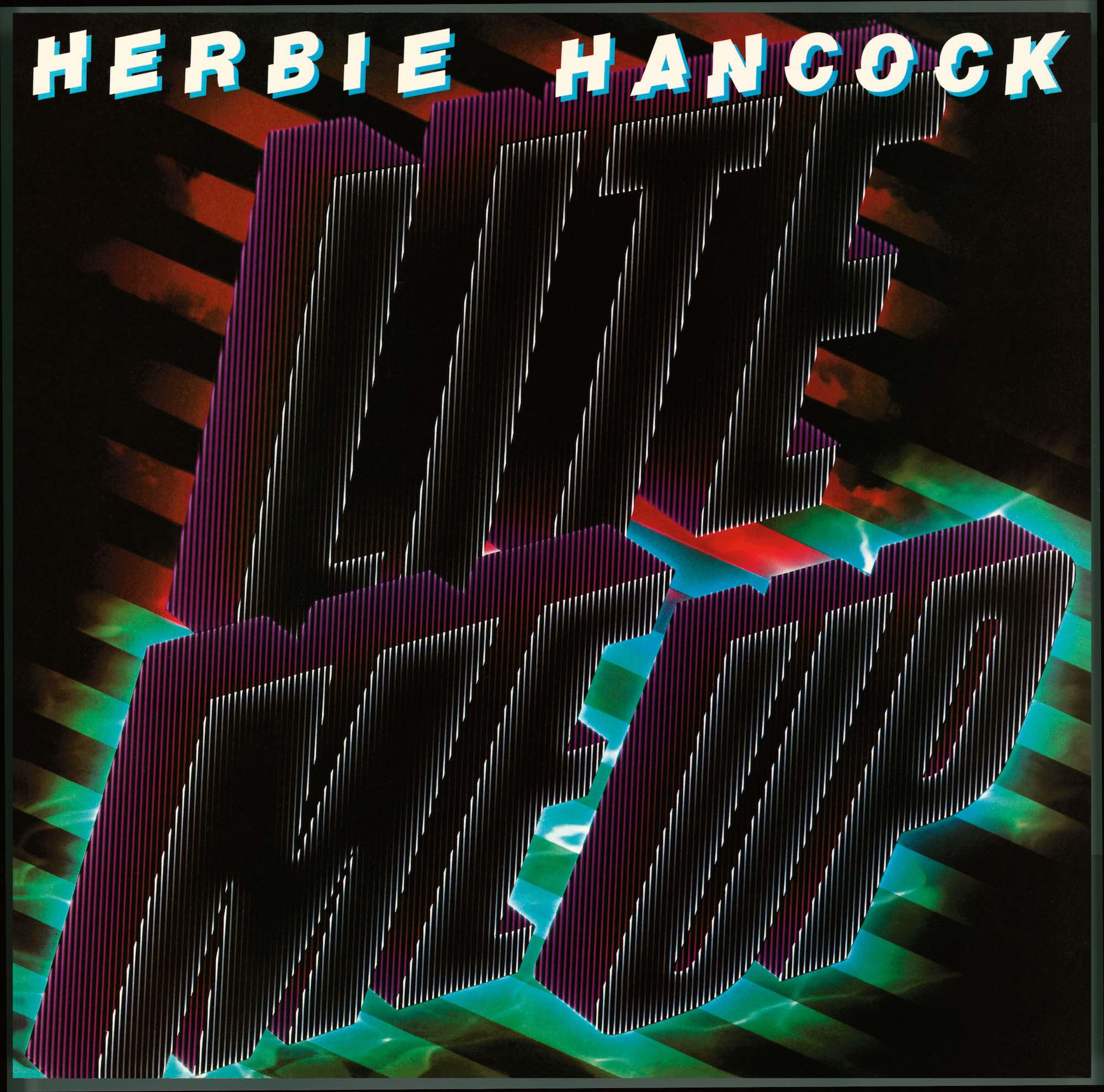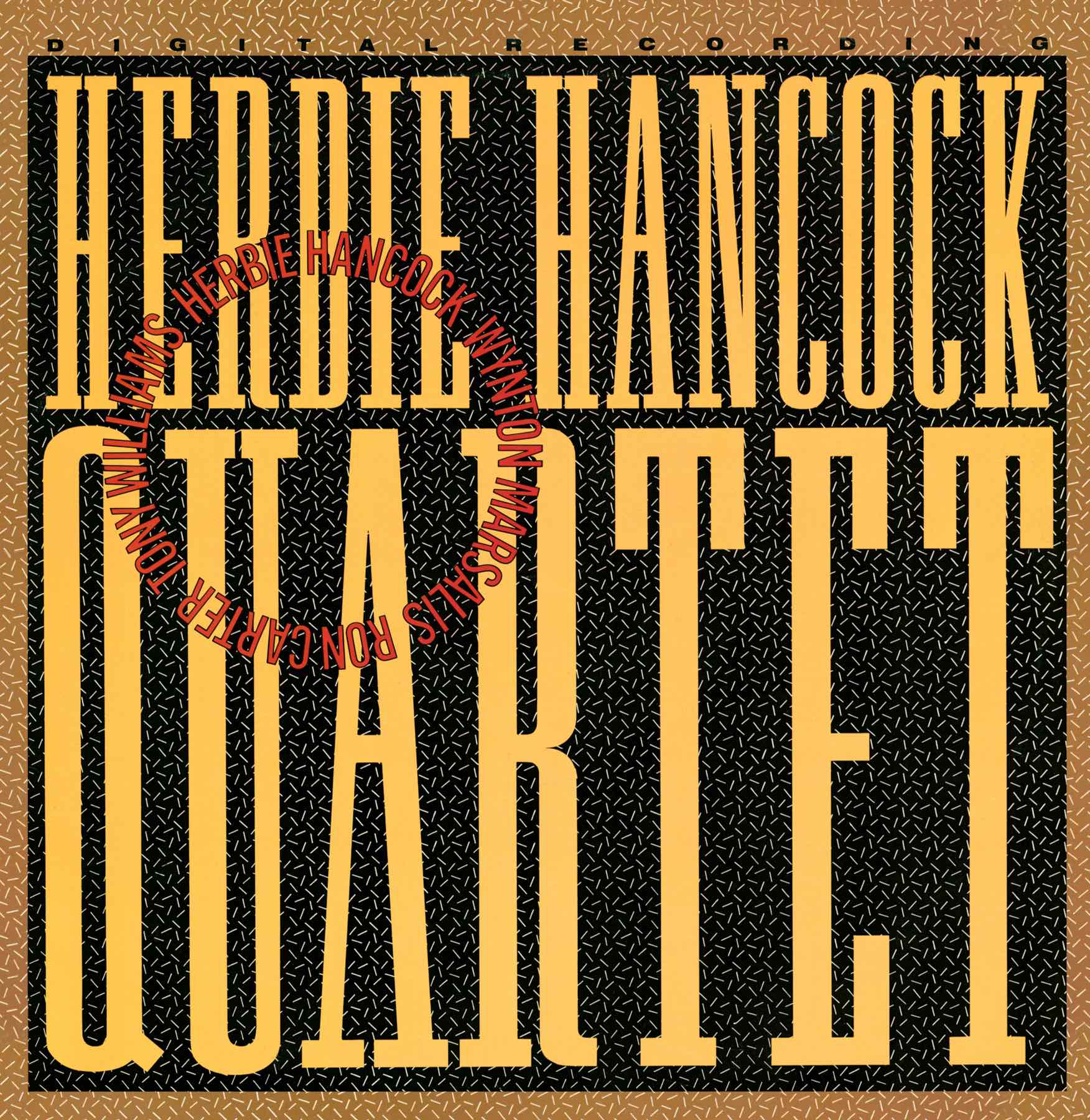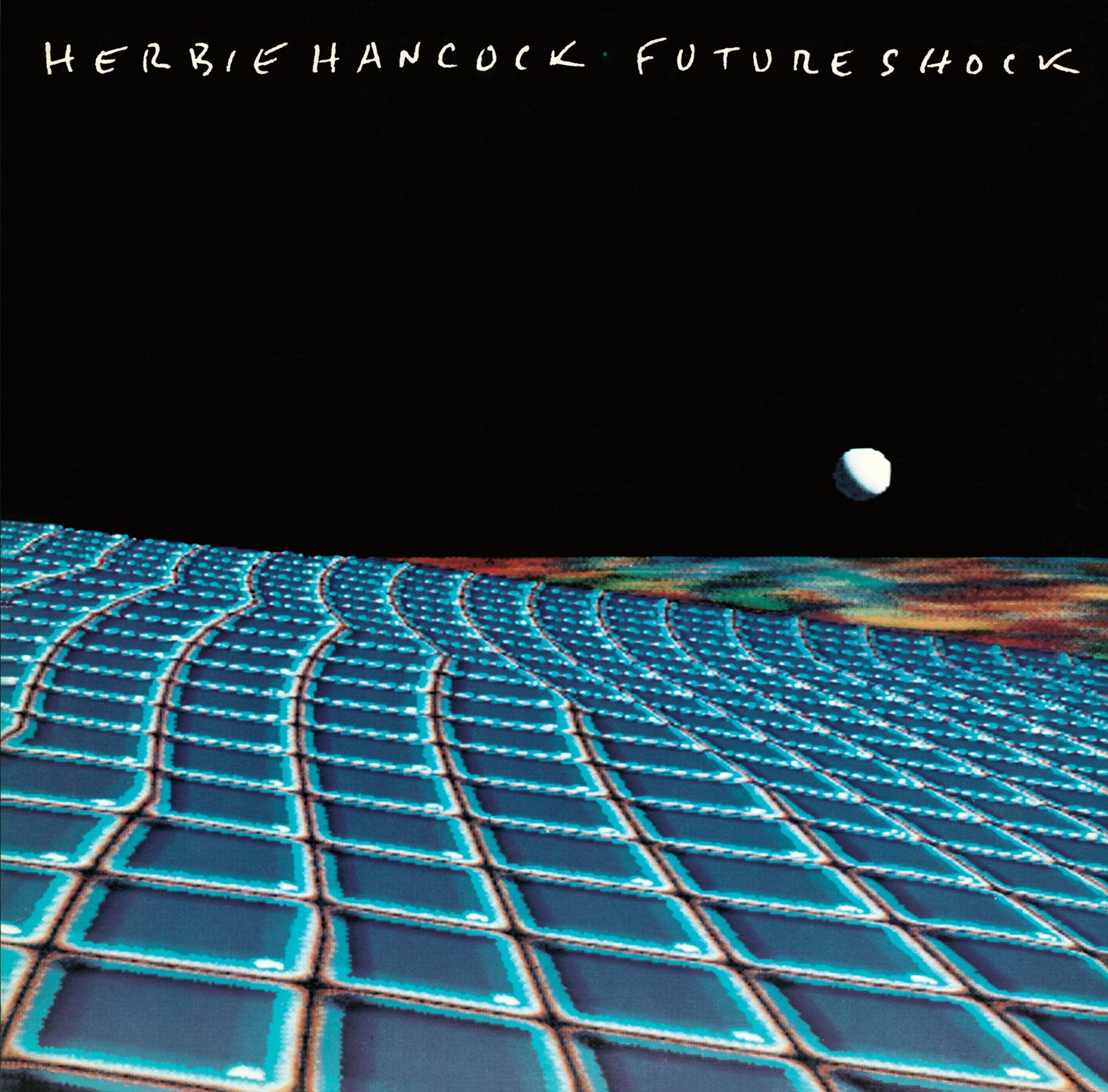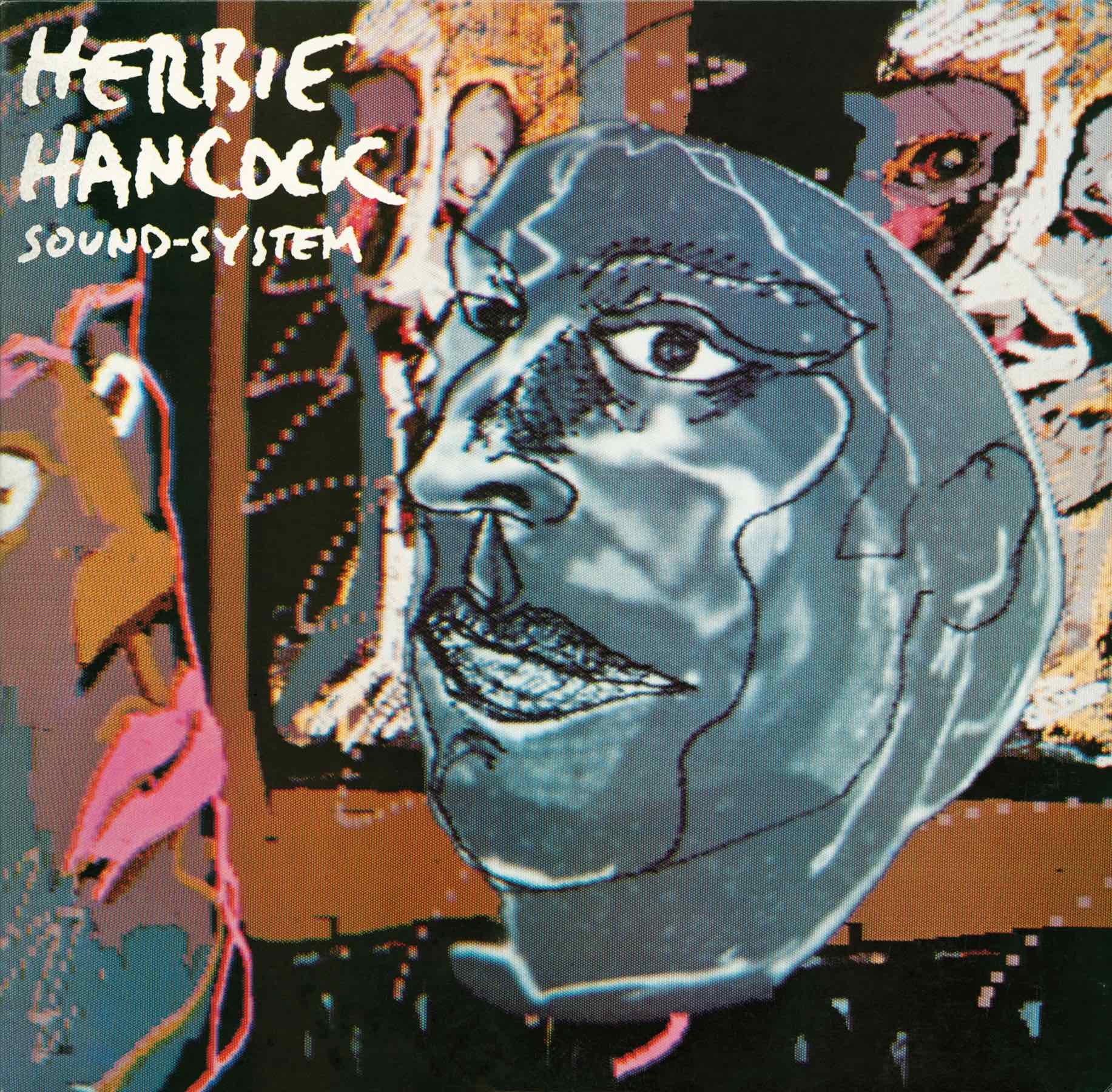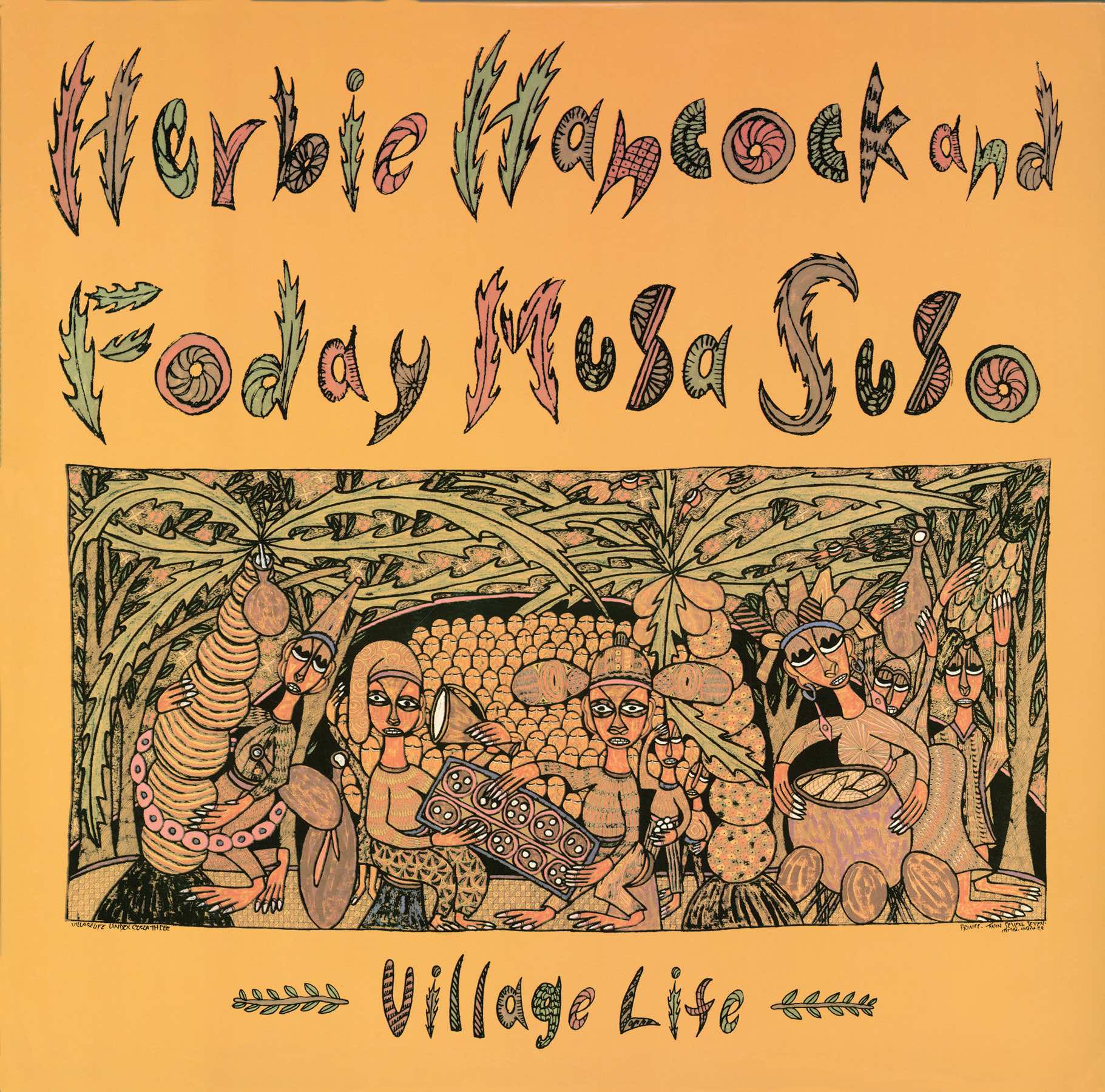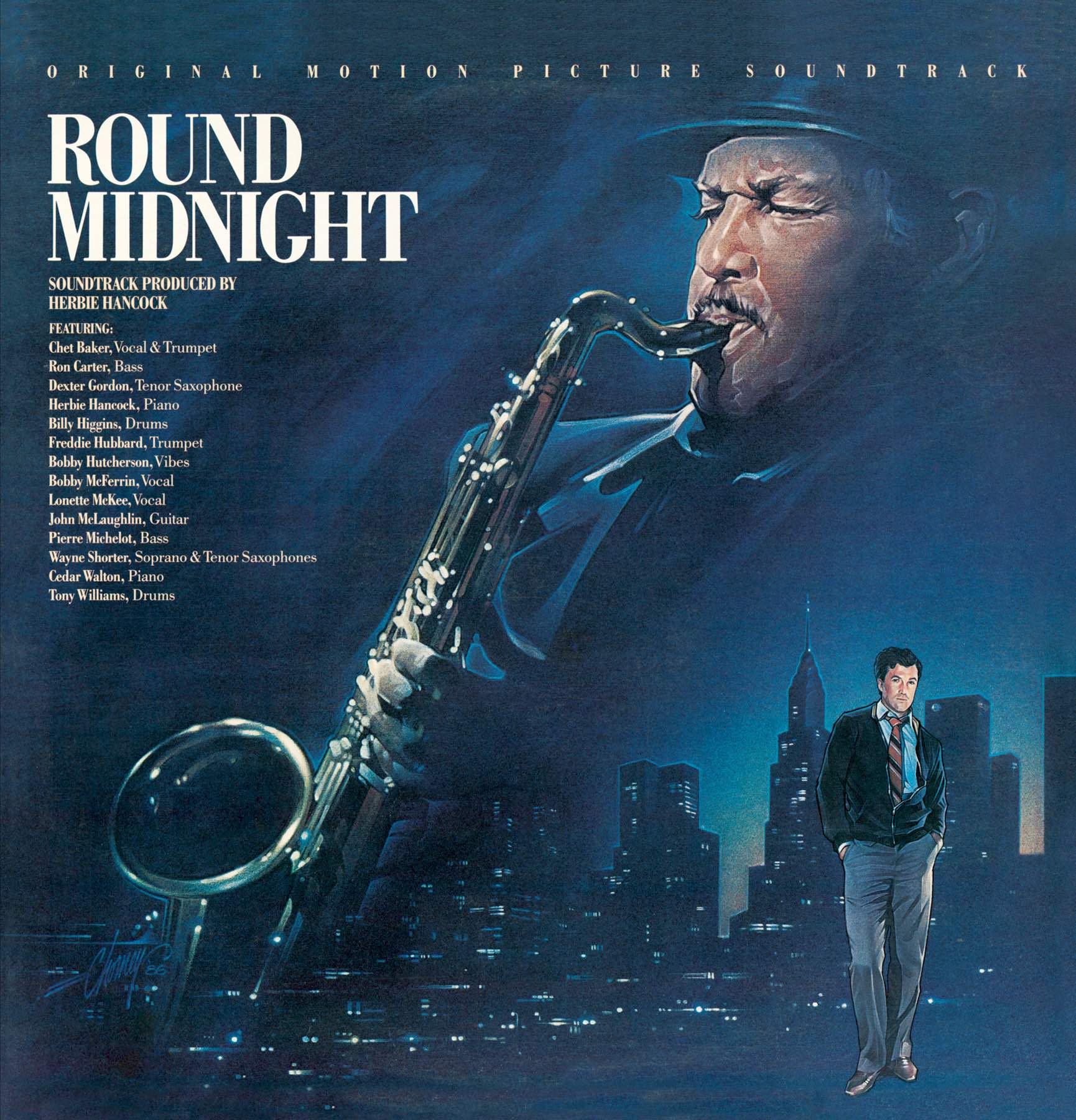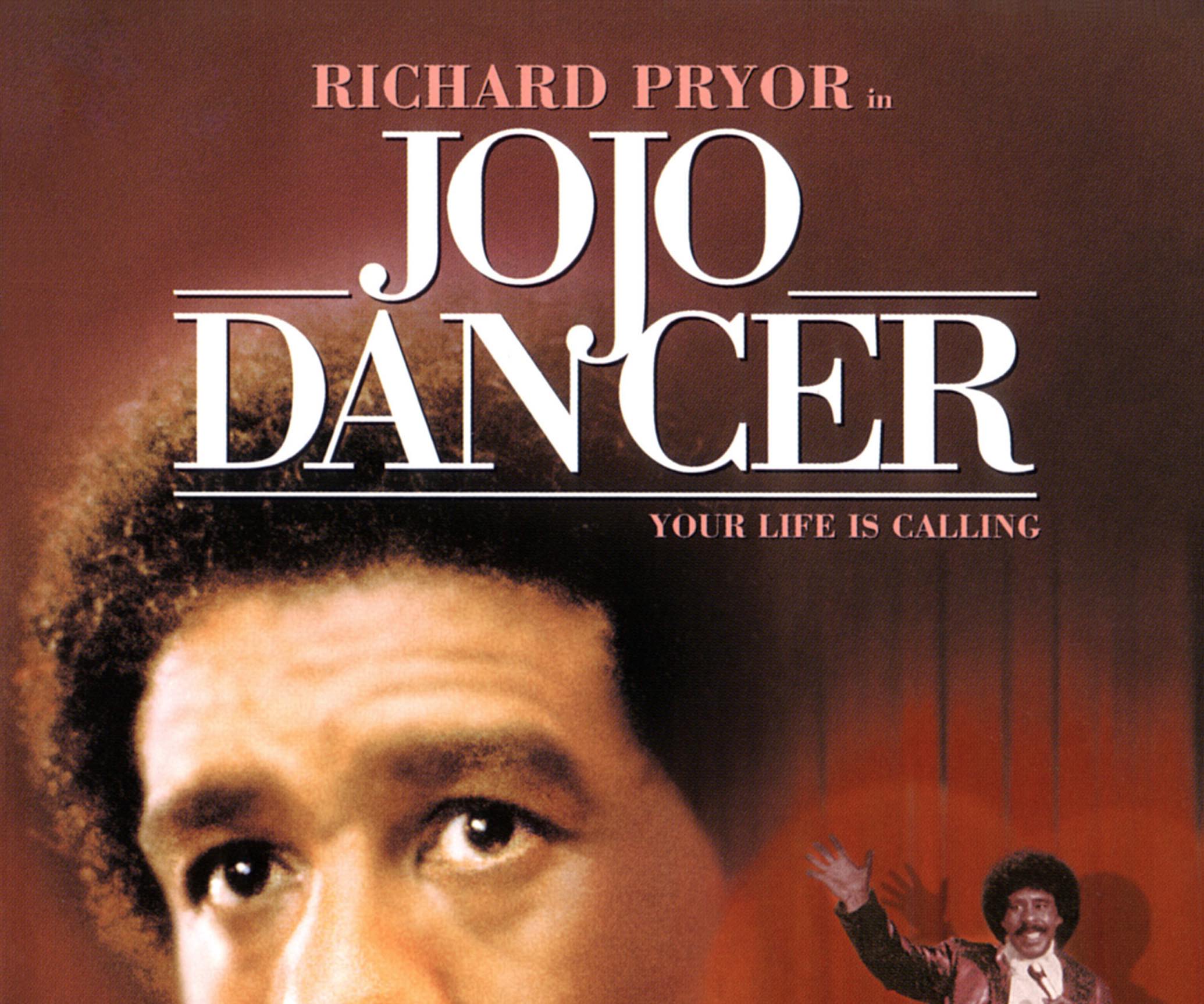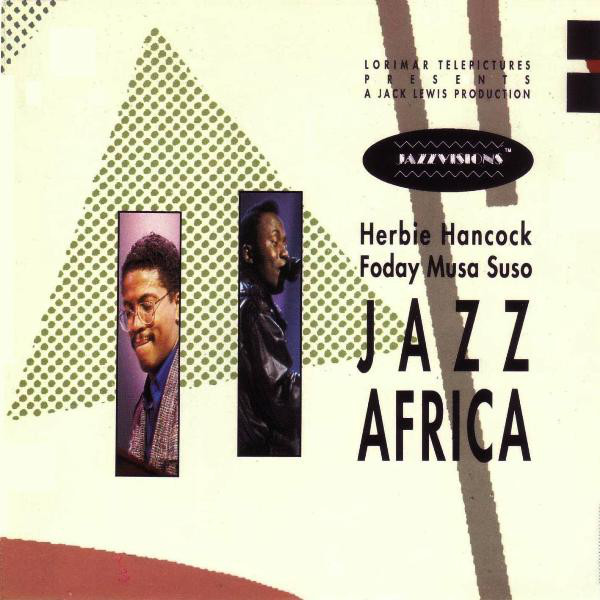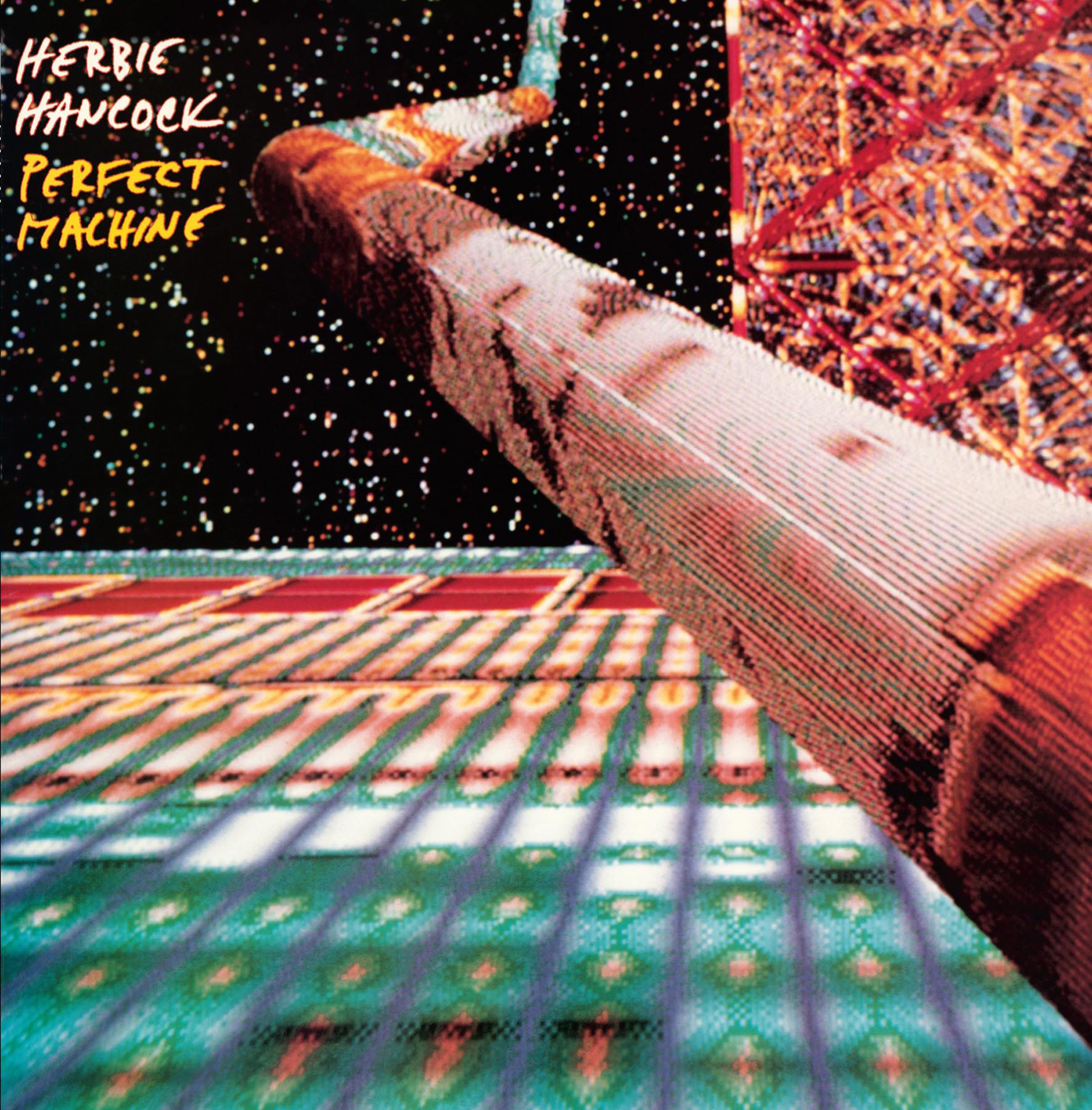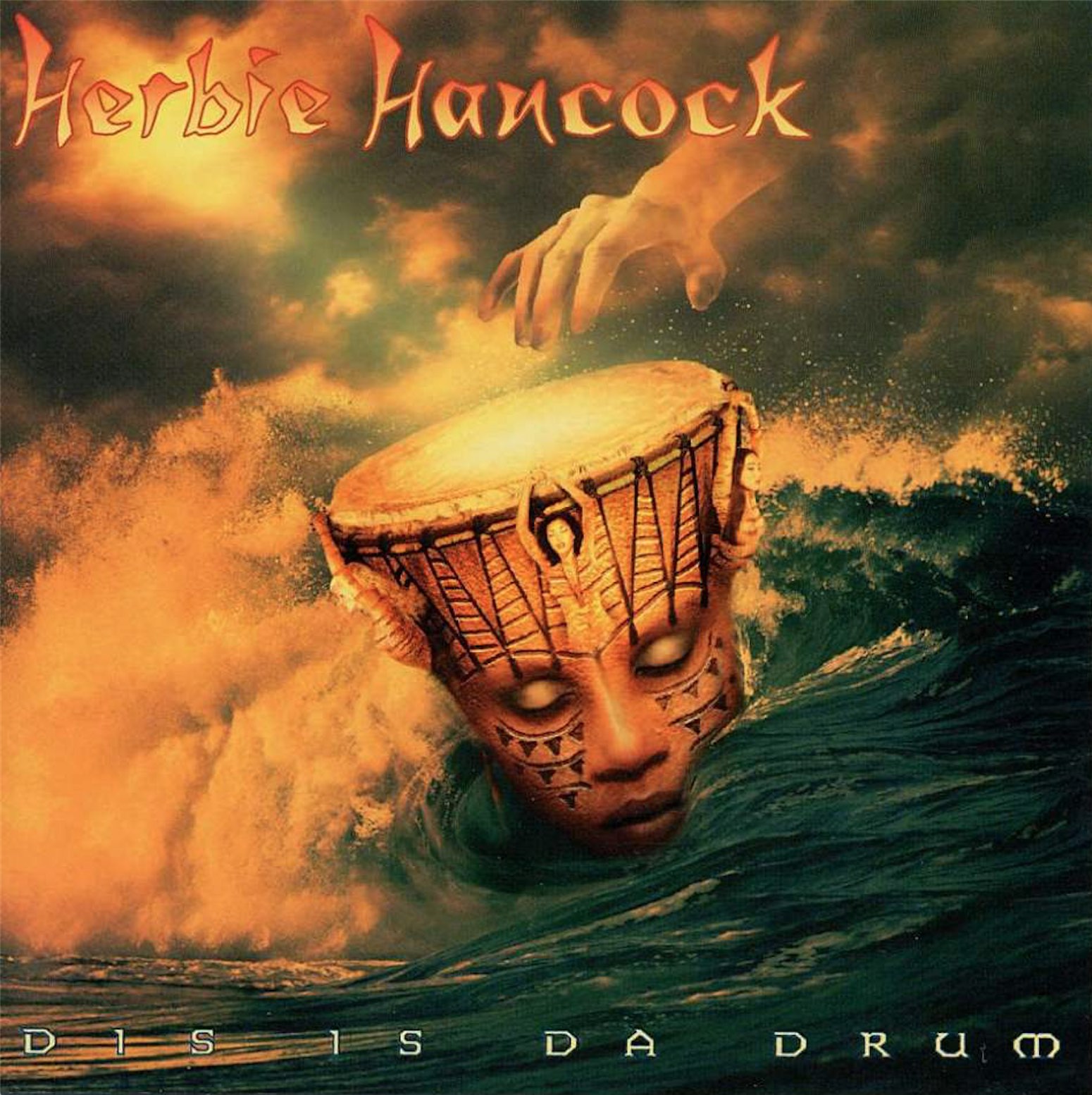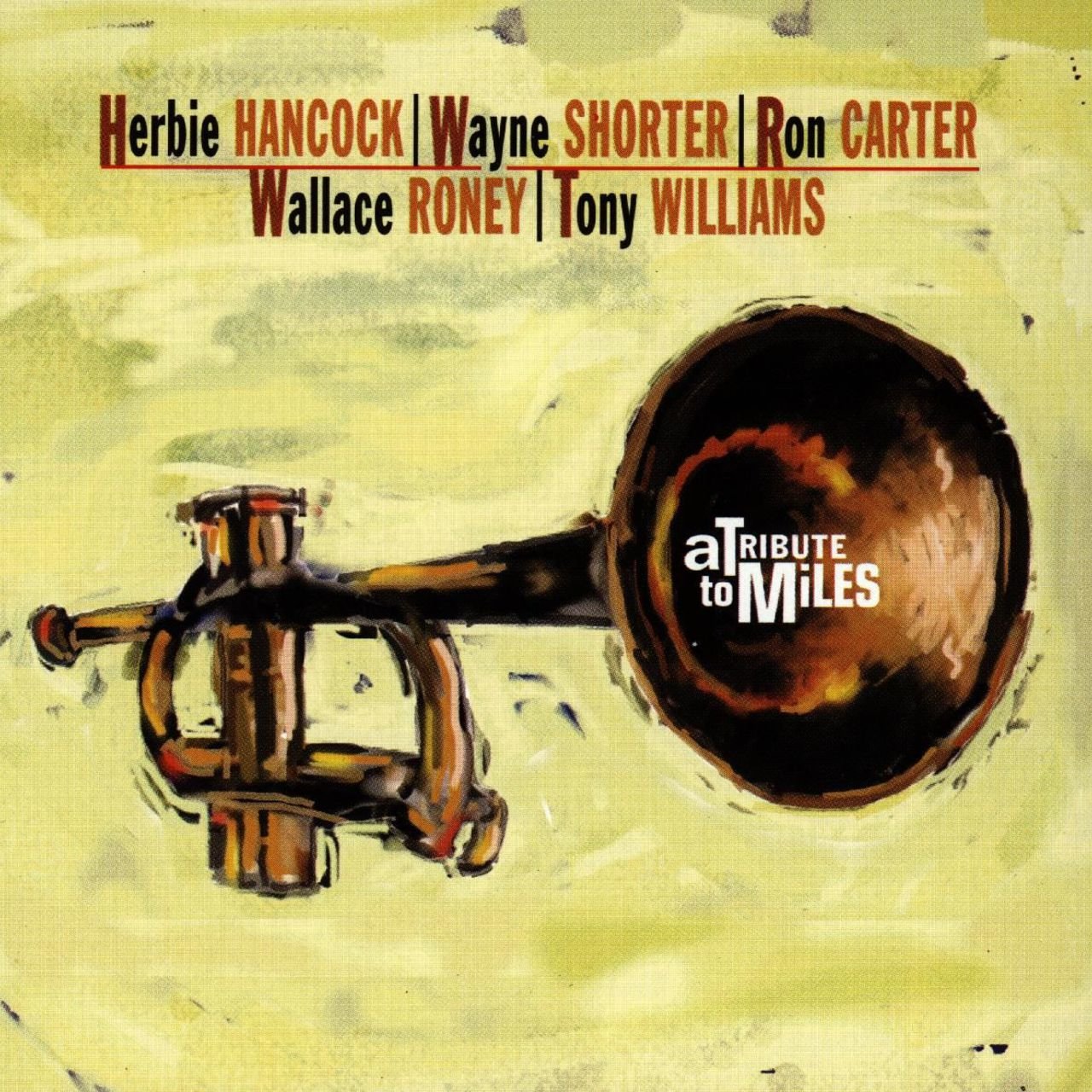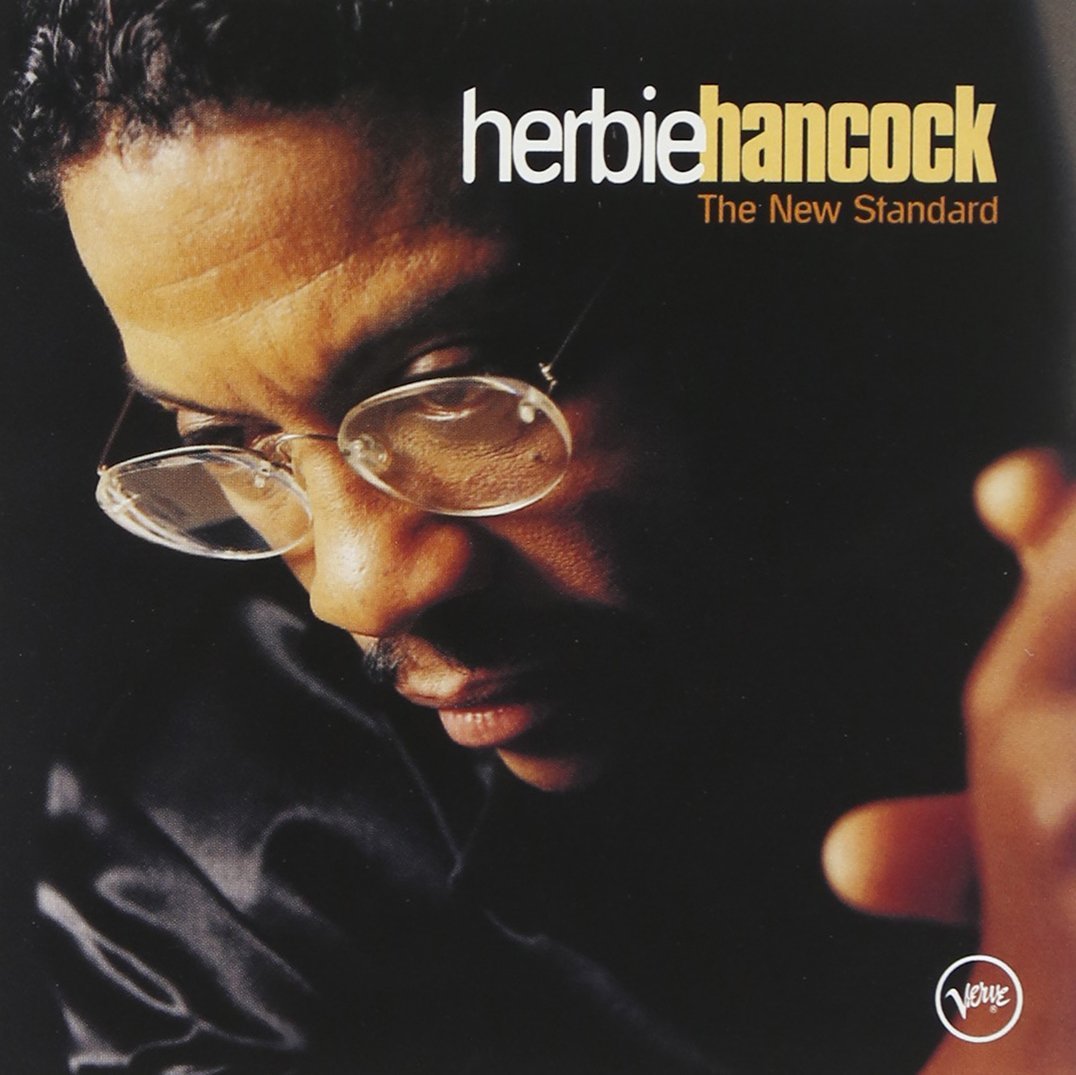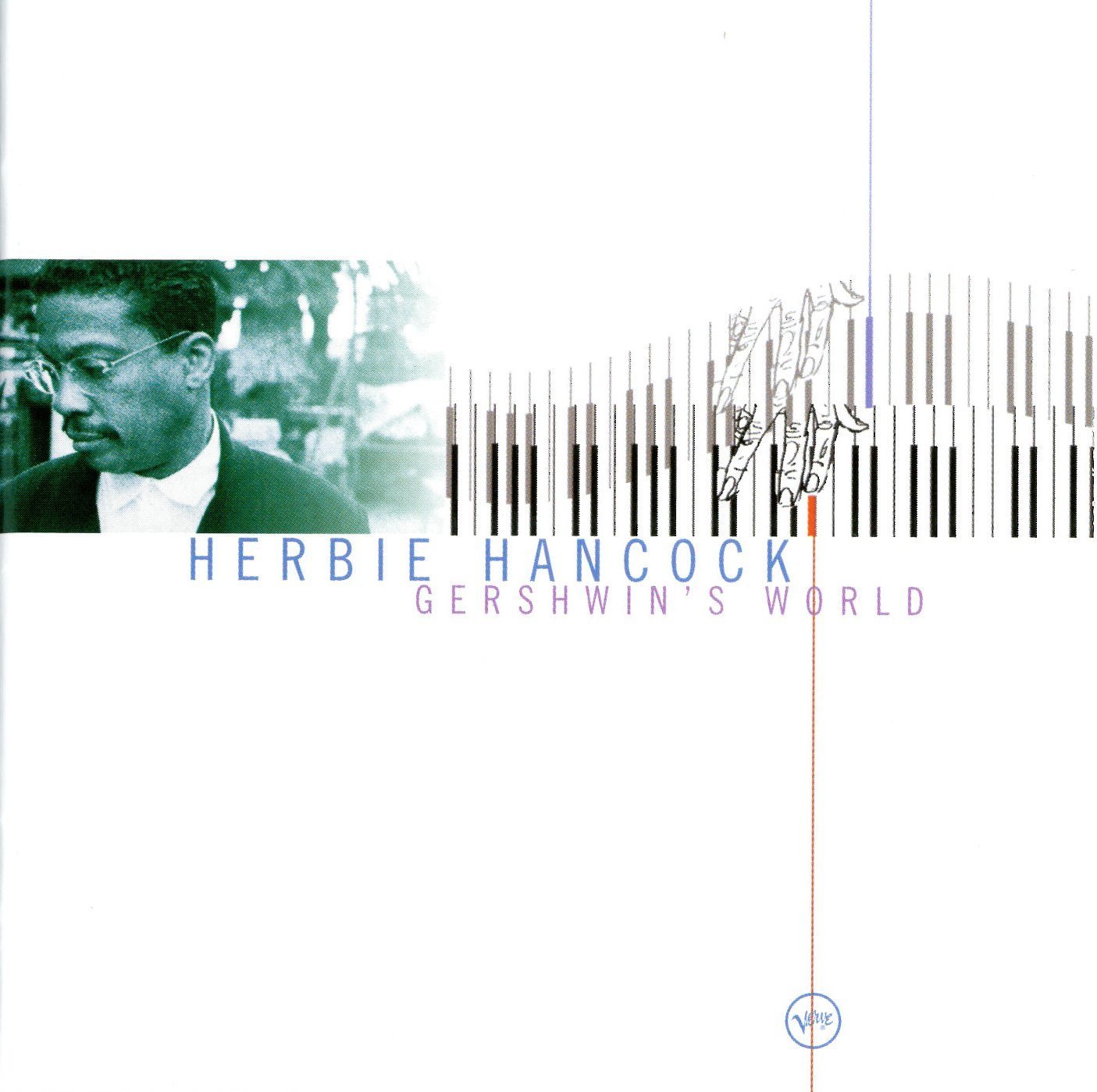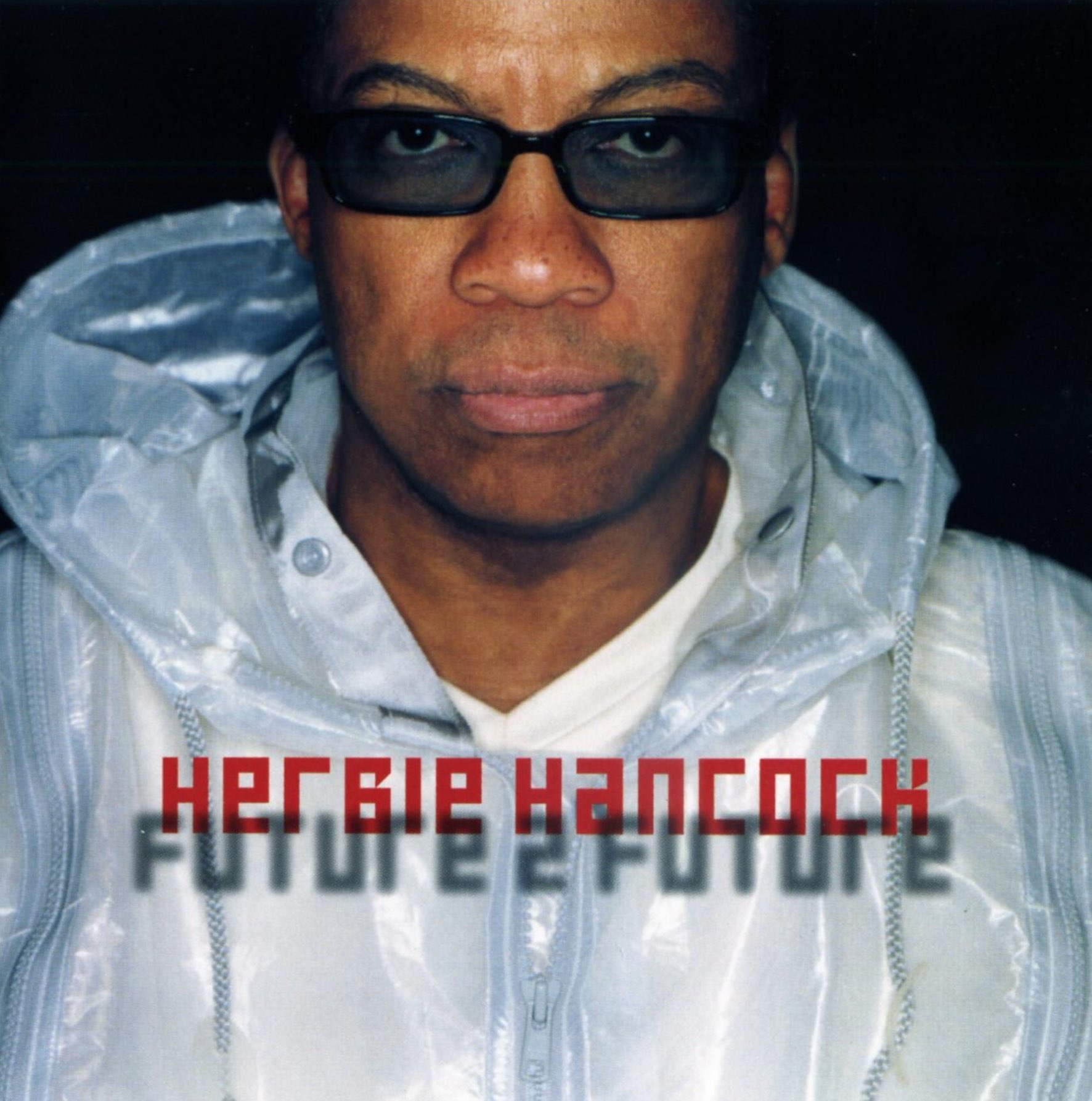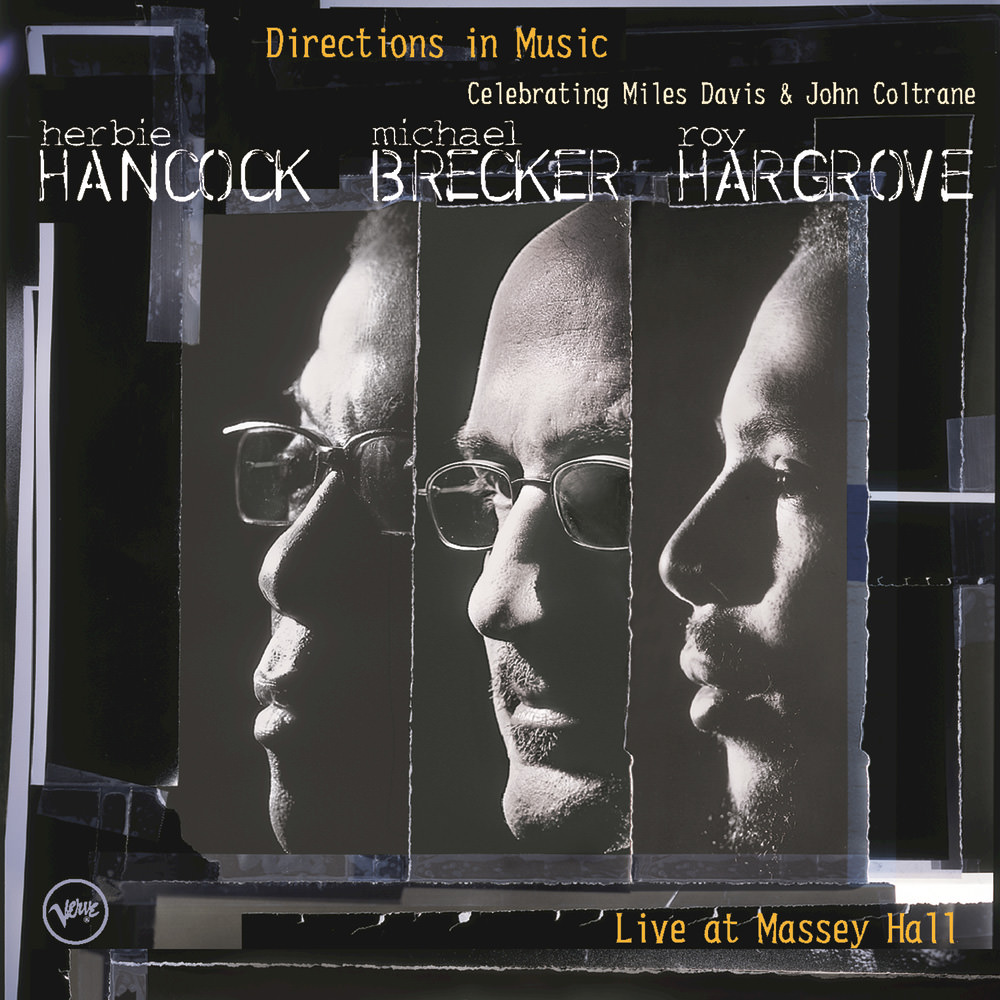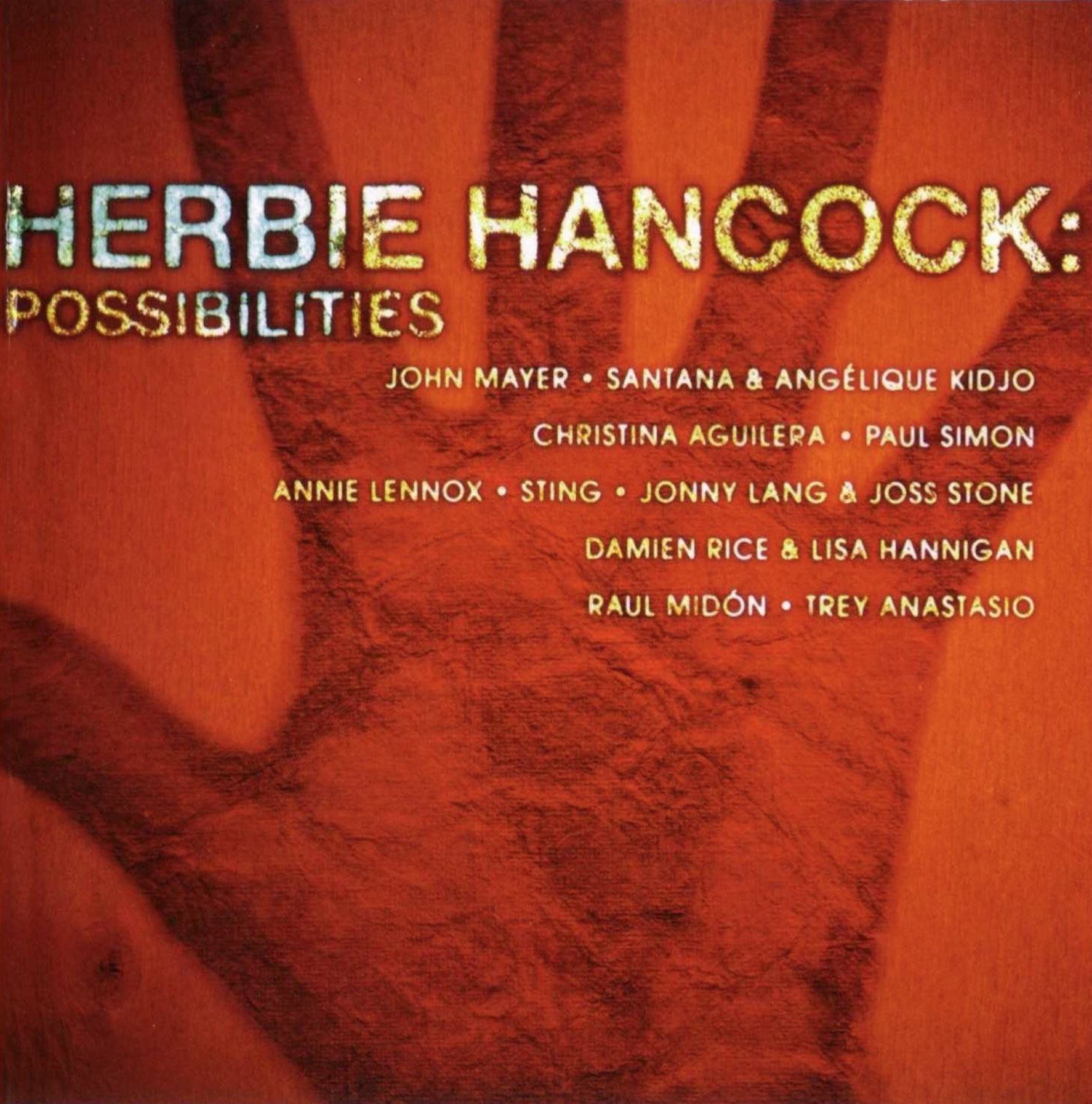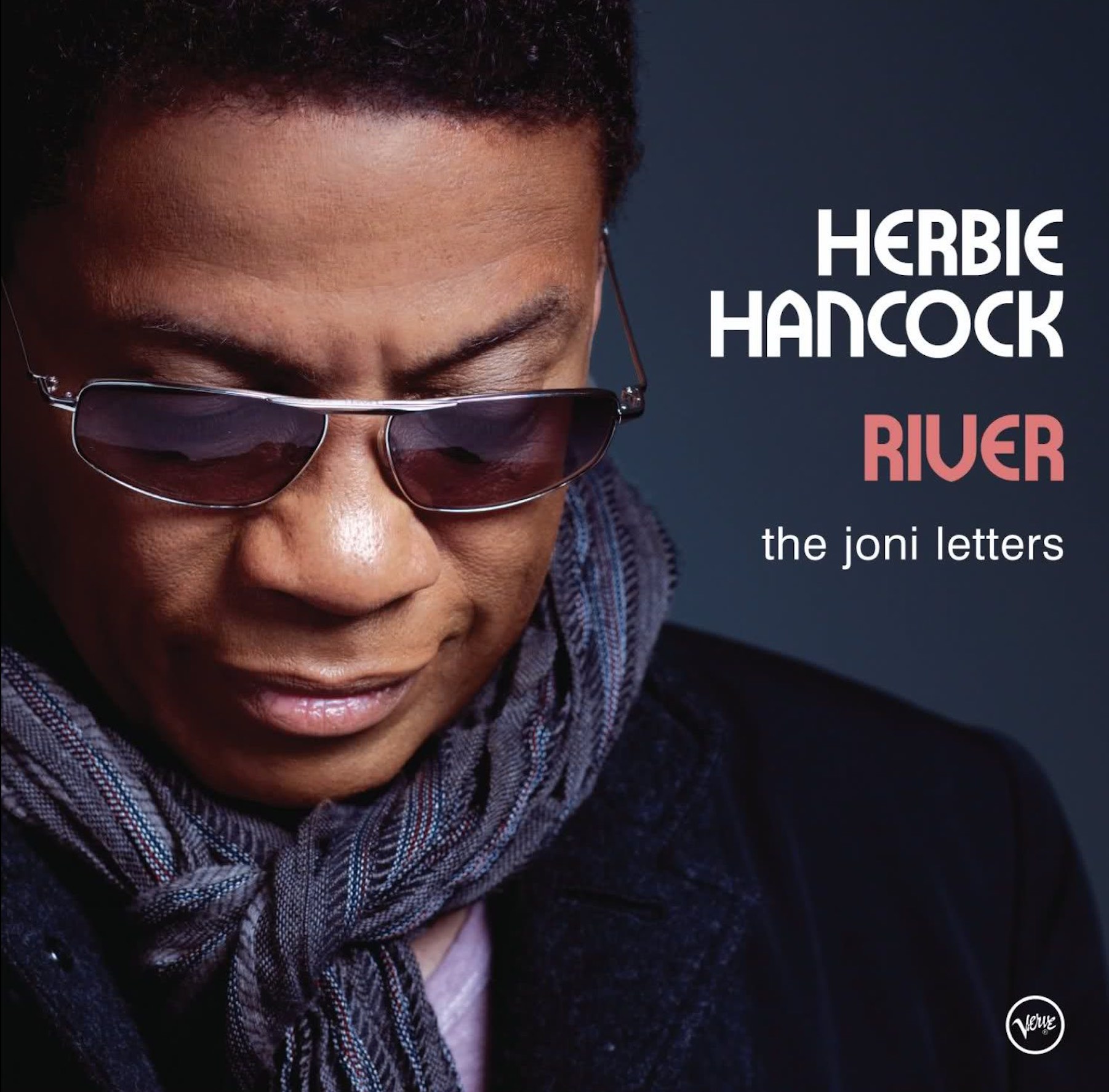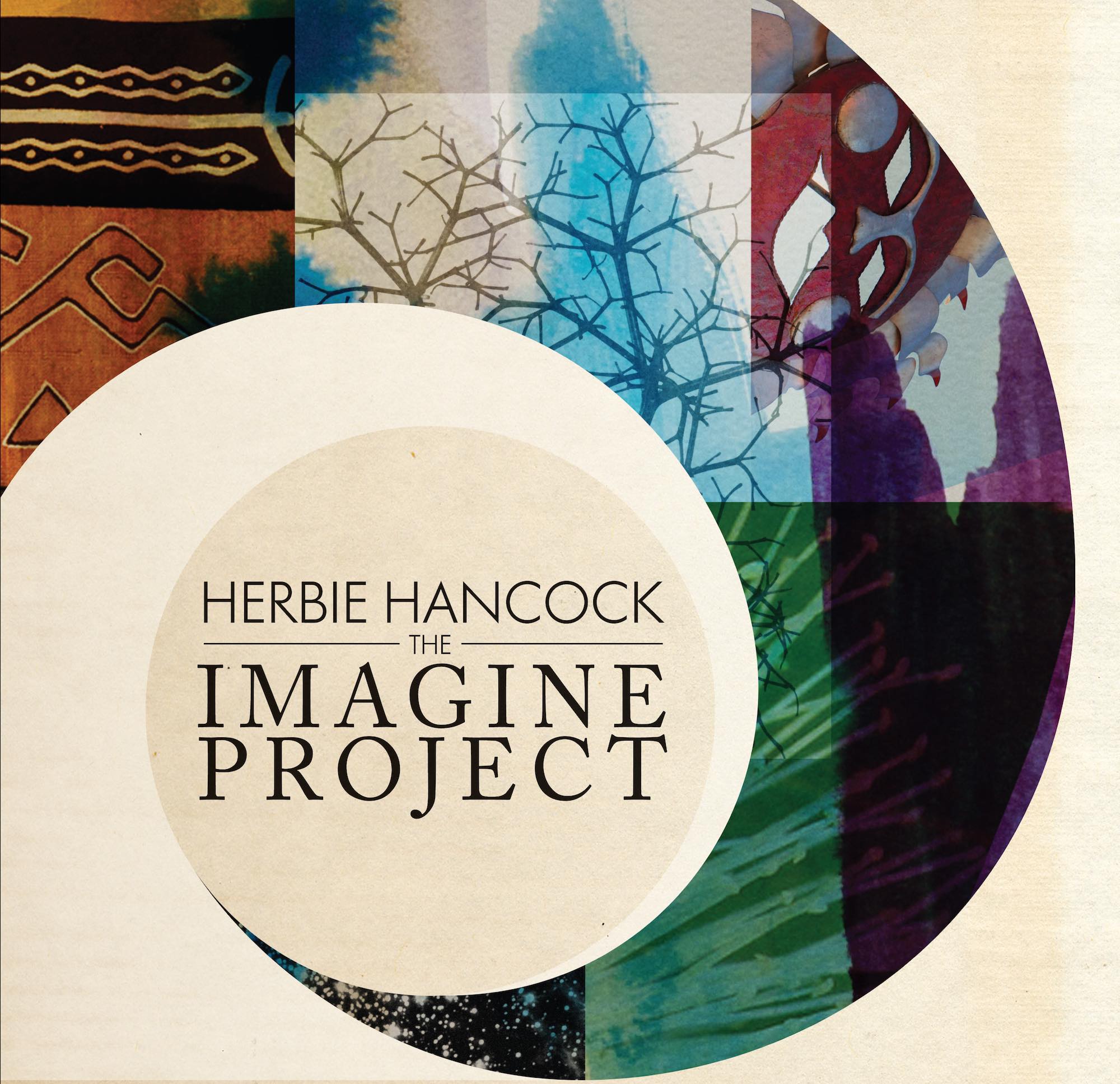AS OF JANUARY 13, 2023 FIVE HUNDRED MUSICAL ARTISTS HAVE BEEN FEATURED IN THE SOUND PROJECTIONS MAGAZINE THAT BEGAN ITS ONLINE PUBLICATION ON NOVEMBER 1, 2014.
ACCESS TO EACH ARTIST CAN BE FOUND IN THE 'BLOG ARCHIVE' (ARTISTS LISTED IN WEEKLY CHRONOLOGICAL ORDER) AND IN THE ‘LABELS’ SECTION (ARTIST NAMES, TOPICS, ETC.) ON THE RIGHT SIDE OF THE HOME PAGE. CLICK ON THESE RESPECTIVE LINKS TO ACCESS THEIR CONTENT:
https://soundprojections.blogspot.com/
https://soundprojections.blogspot.com/2014/12/herbie-hancock-b-april-12-1940_83.html
PHOTO: HERBIE HANCOCK (b. April 12, 1940)
https://www.allmusic.com/artist/herbie-hancock-mn0000957296
Herbie Hancock
(b. April 12, 1940)
Biography by Richard S. Ginell
Herbie Hancock will always be one of the most revered and controversial figures in jazz, just as his employer/mentor Miles Davis was when he was alive. Unlike Miles, who pressed ahead relentlessly and never looked back until near the very end, Hancock has cut a zigzagging forward path, shuttling between almost every development in electronic and acoustic jazz and R&B over the last third of the 20th century and into the 21st. Though grounded in Bill Evans and able to absorb blues, funk, gospel, and even modern classical influences, Hancock's piano and keyboard voices are entirely his own, with their own urbane harmonic and complex, earthy rhythmic signatures -- and young pianists cop his licks constantly. Having studied engineering and professing to love gadgets and buttons, Hancock was perfectly suited for the electronic age; he was one of the earliest champions of the Rhodes electric piano and Hohner clavinet, and would field an ever-growing collection of synthesizers and computers on his electric dates. Yet his love for the grand piano never waned, and despite his peripatetic activities all over the musical map, his piano style continued to evolve into tougher, ever more complex forms. He is as much at home trading riffs with a smoking funk band as he is communing with a world-class post-bop rhythm section -- and that drives purists on both sides of the fence up the wall.
Having taken up the piano at age seven, Hancock quickly became known as a prodigy, soloing in the first movement of a Mozart piano concerto with the Chicago Symphony at the age of 11. After studies at Grinnell College, Hancock was invited by Donald Byrd in 1961 to join his group in New York City, and before long, Blue Note offered him a solo contract. His debut album, Takin' Off, took off after Mongo Santamaria covered one of the album's songs, "Watermelon Man." In May 1963, Miles Davis asked him to join his band in time for the Seven Steps to Heaven sessions, and he remained with him for five years, greatly influencing Davis' evolving direction, loosening up his own style, and, upon Davis' suggestion, converting to the Rhodes electric piano. During that time, Hancock's solo career blossomed on Blue Note, as he poured forth increasingly sophisticated compositions like "Maiden Voyage," "Cantaloupe Island," "Goodbye to Childhood," and the exquisite "Speak Like a Child." He also played on many East Coast recording sessions for producer Creed Taylor and provided a groundbreaking score to Michelangelo Antonioni's film Blow-Up, which gradually led to further movie assignments.
Having left the Davis band in 1968, Hancock recorded an elegant funk album, Fat Albert Rotunda, and in 1969 formed a sextet that evolved into one of the most exciting, forward-looking jazz-rock groups of the era. By then deeply immersed in electronics, Hancock added Patrick Gleeson's synthesizer to his Echoplexed, fuzz-wah-pedaled electric piano and clavinet, and the recordings became spacier and more complex rhythmically and structurally, creating their own corner of the avant-garde. By 1970, all of the musicians used both English and African names (Herbie's was Mwandishi). Alas, Hancock had to break up the band in 1973 when it ran out of money, and having studied Buddhism, he concluded that his ultimate goal should be to make his audiences happy.
The next step, then, was a terrific funk group whose first album, Head Hunters, with its Sly Stone-influenced hit single, "Chameleon," became the biggest-selling jazz LP up to that time. Handling all of the synthesizers himself, Hancock's heavily rhythmic comping often became part of the rhythm section, leavened by interludes of the old urbane harmonies. Hancock recorded several electric albums of mostly superior quality in the '70s, followed by a turn into disco around the decade's end. In the meantime, Hancock refused to abandon acoustic jazz. After a one-shot reunion of the 1965 Miles Davis Quintet (Hancock, Ron Carter, Tony Williams, Wayne Shorter, and Freddie Hubbard sitting in for Miles) at New York's 1976 Newport Jazz Festival, they went on tour the following year as V.S.O.P. The near-universal acclaim of the reunions proved that Hancock was still a whale of a pianist; that Miles' loose mid-'60s post-bop direction was far from spent; and that the time for a neo-traditional revival was near, finally bearing fruit in the '80s with Wynton Marsalis and his ilk. V.S.O.P. continued to hold sporadic reunions through 1992, though the death of the indispensable Williams in 1997 cast much doubt as to whether these gatherings would continue.
Hancock continued his chameleonic ways in the '80s: scoring an MTV hit in 1983 with the scratch-driven, electro-influenced single "Rockit" (accompanied by a striking video); launching an exciting partnership with Gambian kora virtuoso Foday Musa Suso that culminated in the swinging 1986 live album Jazz Africa; doing film scores, and playing festivals and tours with the Marsalis brothers, George Benson, Michael Brecker, and many others. After his 1988 techno-pop album, Perfect Machine, Hancock left Columbia (his label since 1973), signed a contract with Qwest that came to virtually nothing (save for A Tribute to Miles in 1992), and finally made a deal with Polygram in 1994 to record jazz for Verve and release pop albums on Mercury.
Well into a youthful middle age, Hancock's curiosity, versatility, and capacity for growth showed no signs of fading, and in 1998 he issued Gershwin's World. His curiosity with the fusion of electronic music and jazz continued with 2001's Future 2 Future, but he also continued to explore the future of straight-ahead contemporary jazz with 2005's Possibilities. An intriguing album of jazz treatments of Joni Mitchell compositions called River: The Joni Letters was released in 2007 and won a Grammy for Album of the Year in 2008. Two years later, Hancock released his The Imagine Project album, recorded in seven countries with a host of collaborators including Dave Matthews, Juanes, and Wayne Shorter. He was also named Creative Chair for the New Los Angeles Philharmonic. In 2013, he was the recipient of a Kennedy Center Honors award, acknowledged for his contribution to American performing arts. An expanded tenth anniversary edition of River: The Joni Letters was released in 2017, and he continues to perform regularly.
https://www.allaboutjazz.com/musicians/herbie-hancock/
Herbie Hancock
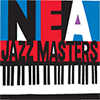
Herbie Hancock is a true icon of modern music. Throughout his explorations, he has transcended limitations and genres while still maintaining his unique, unmistakable voice. Herbie's success at expanding the possibilities of musical thought has placed him in the annals of this century's visionaries. With an illustrious career spanning five decades, he continues to amaze audiences and never ceases to expand the public's vision of what music, particularly jazz, is all about today.
Herbie Hancock's creative path has moved fluidly between almost every development in acoustic and electronic jazz and R&B since 1960. He has attained an enviable balance of commercial and artistic success, arriving at a point in his career where he ventures into every new project motivated purely by the desire to expand the boundaries of his creativity.
There are few artists in the music industry who have gained more respect and cast more influence than Herbie Hancock. As the immortal Miles Davis said in his autobiography, "Herbie was the step after Bud Powell and Thelonious Monk, and I haven't heard anybody yet who has come after him."
Born in Chicago in 1940, Herbie was a child piano prodigy who performed a Mozart piano concerto with the Chicago Symphony Orchestra at the tender age of 11. He began playing jazz in high school, initially influenced by Oscar Peterson and Bill Evans. Also at this time, an additional passion for electronic science began to develop. As a result, he took a double major in music and electrical engineering at Grinnell College.
In 1960, at age 20, Herbie was discovered by trumpeter Donald Byrd, who asked him to join his group. Byrd also introduced Herbie to Alfred Lion of Blue Note Records, and after two years of session work with the likes of Phil Woods and Oliver Nelson, he signed to the legendary label as a solo artist. His 1963 debut album, Takin’ Off, was an immediate success, producing “Watermelon Man,” a big hit on jazz and R&B radio. Also in 1963, Herbie received the call that was to change his life and secure his place in jazz history. Miles Davis invited Herbie to join the Miles Davis Quintet. During his five years with Davis, Herbie and his colleagues thrilled audiences and recorded classic after classic, including the albums ESP, Nefertiti, and Sorcerer. Most jazz critics and fans regard this group, which also included Wayne Shorter (tenor sax), Ron Carter (bass), and Tony Williams (drums), as the greatest small jazz group of the 1960s. Even after he left Davis' group, Herbie still made appearances on Davis' groundbreaking recordings In a Silent Way and Bitches Brew, which heralded the birth of jazz-fusion.
Simultaneous with his work for Miles, Herbie's own solo career blossomed on Blue Note, creating such classic albums as Maiden Voyage, Empyrean Isles, and Speak Like a Child. In 1966, he composed the score to Michelangelo Antonioni's film, Blow Up. This led to a successful career in feature film and television music, including music for Bill Cosby’s Emmy-winning Hey, Hey, Hey, It’s Fat Albert and many other film scores in following years.
1970s: The Headhunters and VSOP
After leaving Miles Davis in 1968, Herbie stepped full-time into the new electronic jazz-funk that was sweeping the world. Herbie gathered a new band called The Headhunters and, in 1973, recorded Head Hunters—a hugely successful crossover hit which became the first jazz album to go platinum. With its Sly Stone-influenced hit single "Chameleon," this album (and its follow-up, Thrust) signaled once and for all that Herbie Hancock would not be pigeonholed or categorized.
By mid-decade, Herbie was playing for stadium-sized crowds all over the world and had no fewer than four albums in the pop charts at once. In total, Herbie had eleven albums in the pop charts during the 1970s. What's even more remarkable about Herbie's ’70s output is the inspiration and inexhaustible supply of samples he provided for the generations of hip hop and dance music artists that followed almost twenty years after these recordings were at their peak popularity. This, though, would not be the only time in his career that Herbie’s work would have such an influence.
Not content to travel one creative path, Herbie also stayed close to his love of acoustic jazz in the ’70s. He recorded and performed with VSOP (a reunification of the ’60s Miles Davis Quintet, substituting the great Freddie Hubbard for Davis), with various trios and quartets under his own name, and in duet settings with fellow pianists Chick Corea and Oscar Peterson.
1980s: Future Shock, Film & TV
In 1980, Herbie introduced the trumpeter Wynton Marsalis to the world as a solo artist, producing the young musician's debut album and touring with him as well. In 1983, a new pull to the alternative side led Herbie to a series of collaborations with the notorious musical architect Bill Laswell. The first, Future Shock, again struck platinum, and the single "Rockit" rocked the dance and R&B charts, winning a Grammy for Best R&B Instrumental. Moreover, the video of the track, created by Kevin Godley and Lol Crème, won five MTV awards. Sound System, the follow-up to Future Shock, also received a Grammy in the R&B instrumental category. Once again, Herbie Hancock had blazed a new path for younger musicians to follow.
In addition to his Grammy and MTV Award successes, Herbie won an Oscar in 1986 for scoring the film 'Round Midnight—in which he also appeared as an actor. During this time, he composed the soundtracks for a number of other films including Colors, Jo Jo Dancer, Action Jackson and Harlem Nights. Numerous television appearances over the years led to two hosting assignments in the 1980s. The first, Rock School, was an innovative educational music show for PBS, the second, Showtime's Coast To Coast, was a unique series of in-concert performances, interviews and collaborations, and ran from 1989-91.
1990s: Verve Records and Headhunters Reunited
Herbie once again scaled the charts in 1994, but in a most unique way. A British hip-hop group called US3 sampled a classic Blue Note side, "Cantaloupe Island," for a track called "Cantaloop" which became a huge international hit for Herbie's old label. The track went Top 20 in a number of countries and was licensed countless times for TV commercials and promos, leading to the resurrection of many great Herbie Hancock tracks throughout the decade.
Herbie signed to the Polygram Label Group in 1994. After an adventurous pop-oriented project for Mercury Records, Dis Is Da Drum, he moved on to Polygram's Verve label, forming an all-star band to record 1996's Grammy- winning The New Standard. This album, another landmark, adapted rock and R&B tunes from recent times to a straight ahead jazz format. In 1997, an eloquent and daring album of duets with Wayne Shorter, 1+1, was released. The legendary Headhunters reunited in 1998, recording an album for Herbie's own Verve-distributed imprint, and touring with the Dave Matthews Band at the arena-rock giant's own request. But the crowning achievement of Herbie Hancock's Verve years thus far has been Gershwin's World. Recorded and released in 1998, this masterwork brought artists from all over the musical spectrum together in a celebration of George Gershwin and his entire artistic milieu. Herbie's collaborators included Joni Mitchell, Stevie Wonder, Kathleen Battle, the Orpheus Chamber Orchestra, Wayne Shorter and Chick Corea. Gershwin's World won three Grammies in 1999, including Best Traditional Jazz Album and Best R&B Vocal Performance for Stevie Wonder's "St. Louis Blues." The entire music world celebrated this album as one of the very finest in Herbie Hancock's incomparable career.
At the end of 1999, Herbie joined two partners—his manager David Passick and former Verve Records president Chuck Mitchell—to form Transparent Music, a multi-media music company dedicated to the presentation of barrier-breaking music of all types, at all tiers of distribution including recordings, films and TV, concert events and the Internet.
2000 and Today: FUTURE2FUTURE and Possibilities
In yet another innovative stylistic move, Herbie reunited with Bill Laswell in the creation of a 21st Century collaboration with some of the young hip-hop and techno artists who have drawn on his massive influence to create their own music of the future. The album was released in spring, 2001, and is entitled FUTURE2FUTURE. Another collaborative work followed in 2002 when Herbie teamed with Roy Hargrove and Michael Becker to record a live concert album, Directions In Music: Live at Massey Hall—a tribute to John Coltrane and Miles Davis. The three musicians then embarked upon a tour.
His latest studio project, Possibilities, released in August 2005 is aptly named, as it consists of an even wider-ranging collection of sounds and styles than his previous collaborative works. For Possibilities, Herbie teamed with established artists such as Sting, Annie Lennox, John Mayer, Christina Aguilera, Paul Simon and Carlos Santana, as well as serious up-and-comers like Joss Stone and Damien Rice. Also in 2005, Herbie re-staffed his famed Headhunters ensemble with a host of notable names such as guitarists John Mayer and Lionel Loueke, bassist Marcus Miller, drummer Terri Lyne Carrington, trumpeter Roy Hargrove and percussionist Munyungo Jackson to play a number of concert dates in the summer.
Herbie Hancock also maintains a thriving career outside the performing stage and recording studio. Since 1991, he has been the Distinguished Artist in Residence at Jazz Aspen Snowmass in Colorado; a non-profit organization devoted to the preservation and performance of jazz and American music. Herbie also serves as Institute Chairman of the Thelonious Monk Institute of Jazz, the foremost international organization devoted to the development of jazz performance and education worldwide. He has taken on a number of roles on behalf of the institute, from competition judge to master class teacher, to guest performer with the Institute's prestigious college program.
Now in the sixth decade of his professional life, Herbie Hancock remains where he has always been: in the forefront of world culture, technology, business and music. Though one can't track exactly where he will go next, he is sure to leave his own inimitable creative style and imprint wherever he lands.Herbie Hancock: An Introduction
Herbie Hancock is a true icon of modern music. Throughout his explorations, he has transcended limitations and genres while maintaining his unmistakable voice. With an illustrious career spanning five decades and 14 Grammy® Awards, including Album of the Year for River: The Joni Letters, he continues to amaze audiences across the globe.
There are few artists in the music industry who have had more influence on acoustic and electronic jazz and R&B than Herbie Hancock. As the immortal Miles Davis said in his autobiography, “Herbie was the step after Bud Powell and Thelonious Monk, and I haven’t heard anybody yet who has come after him.”
Born in Chicago in 1940, Herbie was a child piano prodigy who performed a Mozart piano concerto with the Chicago Symphony Orchestra at age 11. He began playing jazz in high school, initially influenced by Oscar Peterson and Bill Evans. He also developed a passion for electronics and science, and double-majored in music and electrical engineering at Grinnell College.
In 1960, Herbie was discovered by trumpeter Donald Byrd. After two years of session work with Byrd as well as Phil Woods and Oliver Nelson, he signed with Blue Note as a solo artist. His 1963 debut album, ‘Takin’ Off’, was an immediate success, producing the hit “Watermelon Man.”
In 1963, Miles Davis invited Herbie to join the Miles Davis Quintet. During his five years with Davis, Herbie and his colleagues Wayne Shorter (tenor sax), Ron Carter (bass), and Tony Williams (drums) recorded many classics, including ‘ESP’, ‘Nefertiti’ and ‘Sorcerer’. Later on, Herbie appeared on Davis’ groundbreaking ‘In a Silent Way.’
Herbie’s own solo career blossomed on Blue Note, with classic albums including ‘Maiden Voyage’, ‘Empyrean Isles’, and ‘Speak Like a Child’. He composed the score to Michelangelo Antonioni’s 1966 film ‘Blow Up’, which led to a successful career in feature film and television music.
After leaving Davis, Herbie put together a new band called The Headhunters and, in 1973, recorded ‘Head Hunters.’ With its crossover hit single “Chameleon,” it became the first jazz album to go platinum. By mid-decade, Herbie was playing for stadium-sized crowds all over the world and had no fewer than four albums in the pop charts at once. In total, Herbie had 11 albums in the pop charts during the 1970s. His ’70s output inspired and provided samples for generations of hip-hop and dance music artists. Herbie also stayed close to his love of acoustic jazz in the ’70s, recording and performing with VSOP (reuniting him with his Miles Davis colleagues), and in duet settings with Chick Corea and Oscar Peterson.
In 1980, Herbie introduced the trumpeter Wynton Marsalis to the world as a solo artist, producing his debut album and touring with him as well. In 1983, a new pull to the alternative side led Herbie to a series of collaborations with Bill Laswell. The first, ‘Future Shock’, again struck platinum, and the single “Rockit” rocked the dance and R&B charts, winning a Grammy for Best R&B Instrumental. The video of the track won five MTV awards. ‘Sound System’, the follow-up, also received a Grammy in the R&B instrumental category.
Herbie won an Oscar in 1986 for scoring the film “‘Round Midnight”, in which he also appeared as an actor. Numerous television appearances over the years led to two hosting assignments in the 1980s: “Rock School” on PBS and Showtime’s “Coast To Coast”.
After an adventurous 1994 project for Mercury Records, ‘Dis Is Da Drum’, he moved to the Verve label, forming an all-star band to record 1996’s Grammy-winning ‘The New Standard’. In 1997, an album of duets with Wayne Shorter, ‘1+1’, was released.
The legendary Headhunters reunited in 1998, recording an album for Herbie’s own Verve-distributed imprint, and touring with the Dave Matthews Band. That year also marked the recording and release of ‘Gershwin’s World’, which included collaborators Joni Mitchell, Stevie Wonder, Kathleen Battle, the Orpheus Chamber Orchestra, Wayne Shorter and Chick Corea. ‘Gershwin’s World’ won three Grammys in 1999, including Best Traditional Jazz Album and Best R&B Vocal Performance for Stevie Wonder’s “St. Louis Blues.”
Herbie reunited with Bill Laswell to collaborate with some young hip-hop and techno artists on 2001’s FUTURE2FUTURE. He also joined with Roy Hargrove and Michael Brecker in 2002 to record a live concert album, ‘Directions In Music: Live at Massey Hall’, a tribute to John Coltrane and Miles Davis.
‘Possibilities’, released in August 2005, teamed Herbie with many popular artists, such as Sting, Annie Lennox, John Mayer, Christina Aguilera, Paul Simon, Carlos Santana, Joss Stone and Damien Rice. That year, he played a number of concert dates with a re-staffed Headhunters, and became the first-ever Artist-In-Residence at the Tennessee-based festival Bonnaroo.
In 2007, Hancock recorded and released ‘River: The Joni Letters’, a tribute to longtime friend and collaborator Joni Mitchell featuring Wayne Shorter, guitarist Lionel Loueke, bassist Dave Holland and drummer
Vinnie Colaiuta and co-produced by Larry Klein. He enlisted vocalists Norah Jones, Tina Turner, Corinne Bailey Rae, Luciana Souza, Leonard Cohen and Mitchell herself to perform songs she wrote or was inspired by. The album received glowing reviews and was a year-end Top 10 choice for many critics. It also garnered three Grammy Awards, including Album of the Year; Herbie is one of only a handful of jazz musicians ever to receive that honor.
In 2010 Hancock released the critically-acclaimed CD, ‘Herbie Hancock’s The Imagine Project,’ winner of two 20ll Grammy Awards for Best Pop Collaboration and Best Improvised Jazz Solo. Utilizing the universal language of music to express its central themes of peace and global responsibility, the ‘Imagine’ project was recorded around the world and features a stellar group of musicians including Jeff Beck, Seal,Pink, Dave Matthews, The Chieftains, Lionel Loueke, Oumou Sangare, Konono #l, Anoushka Shankar, Chaka Khan, Marcus Miller, Derek Trucks, Susan Tedeschi, Tinariwen, and Ceu.
Herbie Hancock also maintains a thriving career outside the performing stage and recording studio. Recently named by the Los Angeles Philharmonic as Creative Chair For Jazz, he currently also serves as Institute Chairman of the Herbie Hancock Institute of Jazz, the foremost international organization devoted to the development of jazz performance and education worldwide. Hancock is also a founder of The International Committee of Artists for Peace, and was awarded the much esteemed “Commandeur des Arts et des Lettres” by French Prime Minister Francois Fillon.
In July of 2011 Hancock was designated a UNESCO Goodwill Ambassador by UNESCO Director-General Irina Bokova. Recognizing Herbie Hancock’s “dedication to the promotion of peace through dialogue, culture and the arts,” the Director-General has asked the celebrated jazz musician “to contribute to UNESCO’s efforts to promote mutual understanding among cultures, with a particular emphasis on fostering the emergence of new and creative ideas amongst youth, to find solutions to global problems, as well as ensuring equal access to the diversity of artistic expressions.” UNESCO’s Goodwill Ambassadors are an outstanding group of celebrity advocates who have generously accepted to use their talent and status to help focus the world’s attention on the objectives and aims of UNESCO’s work in its fields of competence: education, culture, science and communication/information.
In December of 2013, Hancock was the recipient of a prestigious Kennedy Center Honor, and in 2014 he was was named the 2014 Norton Professor Of Poetry at Harvard University, completing his lectures series, “The Ethics Of Jazz,” as part of the Charles Eliot Norton Lecture Series for a period of six weeks. His memoir, Herbie Hancock: Possibilities, were published by Viking in 2014, and in February 2016 he was awarded the Grammy Lifetime Achievement Award. A member of The American Academy of Arts and Sciences, Hancock is currently in the studio at work on a new album.
Now in the sixth decade of his professional life, Herbie Hancock remains where he has always been: in the forefront of world culture, technology, business and music. Though one can’t track exactly where he will go next, he is sure to leave his inimitable imprint wherever he lands.
https://www.herbiehancock.com/biography/awards/
Awards

-
 Award TypeAward CategoryName
Award TypeAward CategoryName -
2014
-
Jazz Foundation of AmericaLifetime Achievement Award
-
-
2014
-
SF JazzLifetime Achievement Award
-
-
2014
-
HarvardNorton Professor of Poetry
-
-
2013
-
Kennedy Center Honors
-
-
2012
-
UNESCOAmbassador of Goodwill
-
-
2011
-
Grammy®Best Pop Collaboration w/ VocalsThe Imagine Project
-
Grammy®Best Improvised Jazz SoloThe Imagine Project
-
-
2007
-
Grammy®Album Of The YearRiver: The Joni Letters
-
Grammy®Best Contemporary Jazz AlbumRiver: The Joni Letters
-
-
2004
-
Grammy®
NEA Jazz Masters AwardBest Jazz Instrumental SoloSpeak Like A Child -
NEAJazz Masters Award
-
-
2002
-
Grammy®Best Jazz Instrumental AlbumDirections In Music
-
Grammy®Best Jazz Instrumental SoloMy Ship
-
-
2001
-
VH1's 100 Greatest Videos10th Greatest VideoRockit
-
-
1998
-
Grammy®Best Jazz Instrumental PerformanceGershwin's World
-
Grammy®Best Instrumental Arrangement
Accompanying VocalsSt. Louis Blues
-
-
1997
-
Soul Train Music AwardBest Jazz AlbumThe New Standard
-
Festival International Jazz de Montreal PrixBest Jazz AlbumMiles Davis
-
-
1996
-
Grammy®Best Instrumental CompositionManhattan (Island of Lights and Love)
-
-
1994
-
Grammy®Best Jazz Instrumental Album
By A GroupA Tribute to Miles
-
-
1989
-
BMIFilm Music AwardColors
-
-
1988
-
PlayboyMusic PollBest Jazz Instrumentalist
-
Keyboard MagazineBest Jazz Pianist
-
BMITV/Film Award25yrs Affiliation
-
-
1987
-
Keyboard Magazine
Readers' PollBest Jazz Keyboardist -
Keyboard Magazine
Readers' PollBest Jazz Keyboardist -
Grammy®Best Instrumental CompositionCall Sheet Blues
-
Playboy Music PollBest R&B Instrumentalist
-
-
1986
-
Los Angeles Film Critics AssociationBest ScoreRound Midnight
-
Oscar®Best Original ScoreRound Midnight
-
BMIFilm Music AwardRound Midnight
-
Playboy Music PollBest Jazz Keyboardist
-
Clio Award
-
U.S. Radio AwardBest Original Music ScoringThom McAnn Shoes
-
-
1985
-
Playboy Music PollBest Jazz Group
-
Playboy Music PollBest Jazz AlbumFuture Shock
-
Gold Note Jazz AwardsBest R&B Instrumental PerformanceRockit
-
National Black MBA AssociationMember, NY Chapter
-
FranceOfficer of The Order of Arts & Letters
-
-
1984
-
MTV Video AwardsMost Experimental VideoRockit
-
MTV Video AwardsBest Art Direction in a VideoRockit
-
MTV Video AwardsBest Concept VideoRockit
-
MTV Video AwardsBest Video EditingRockit
-
MTV Video AwardsBest Special Effects in a VideoRockit
-
Grammy®Best R&B Instrumental PerformanceSound-System
-
-
1983
-
Keyboard Magazine Readers PollBest Jazz & Pop Keyboardist
-
Grammy®Best R&B Instrumental PerformanceRockit
-
-

Herbie has received six honorary doctorates
-
2013Columbia College
-
2011Julliard
-
2009Bentley University
-
1997CSU Fresno
-
1986Berklee College of Music
-
1972Grinnell College
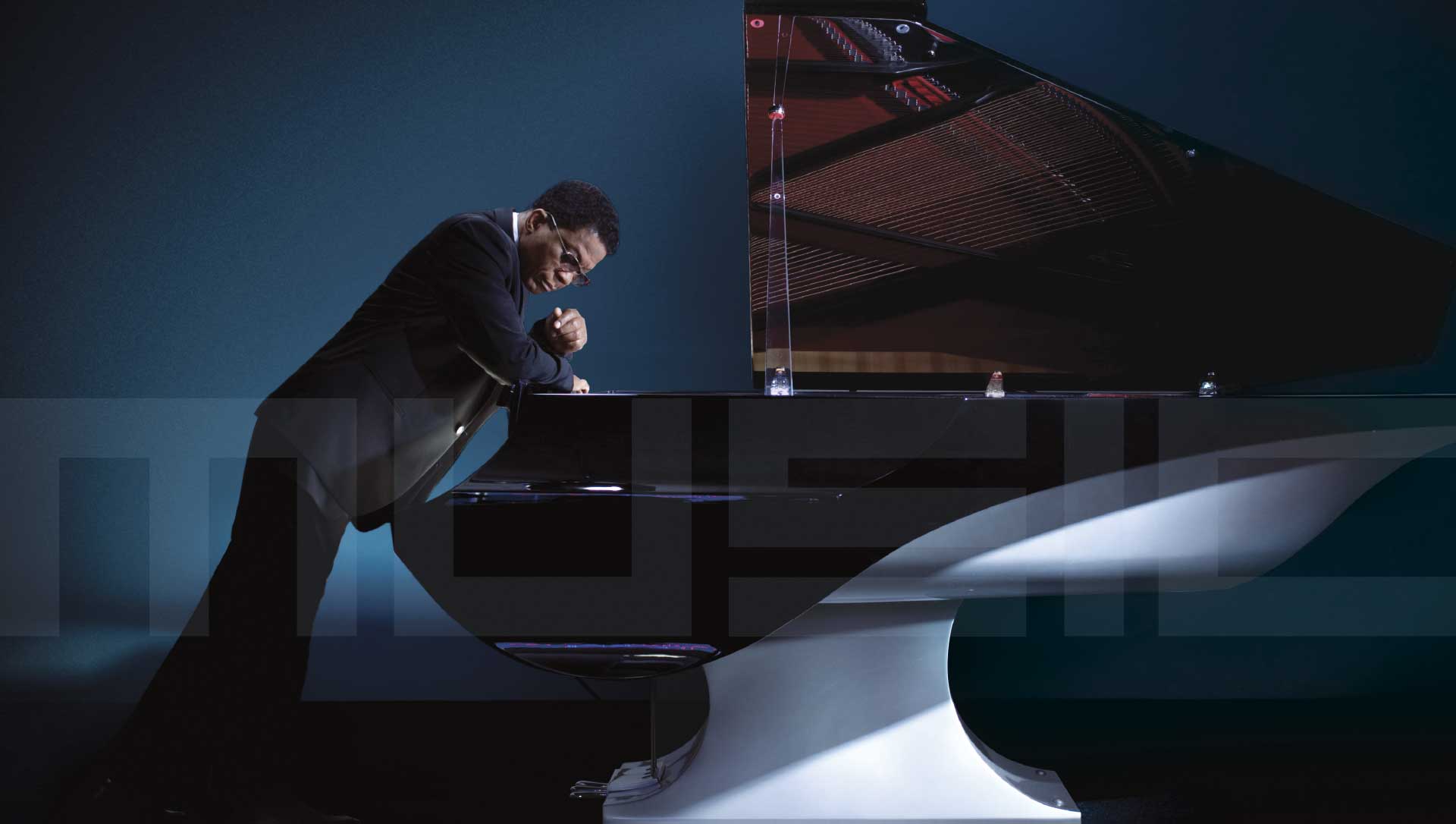
http://www.ted.com/speakers/herbie_hancock.html
TED Talks: Ideas Worth Spreading
Speakers Herbie Hancock: Jazz legend
Herbie
Hancock is an iconic jazz musician, known as much for his mastery of
the traditional as he is for entirely changing the game.
Why you should listen to him:
International Jazz Day 2014: Herbie Hancock & Marcus Miller: Artists for Peace and Cultural Diplomacy
Published on May 14, 2014
This panel discussion features UNESCO Goodwill Ambassador Herbie Hancock and UNESCO Artist for Peace Marcus Miller. Organized by UNESCO and the Thelonious Monk Institute of Jazz, the 2014 International Jazz Day Daytime Educational Program took place at the Osaka School of Music in Osaka, Japan.
http://mahindrahumanities.fas.harvard.edu/content/norton-lecture
Monday, February 3
Wednesday, February 12
Thursday, February 27
Monday, March 10
Monday, March 24
Monday, March 31
Director, the Mahindra Humanities Center, Harvard University
Walter Bigelow Rosen Professor of Music, Harvard University
Quincy Jones Professor of African American Music, Harvard University
William Powell Mason Professor of Music, Harvard University
Byron and Anita Wien Professor of Drama and of English and Comparative Literature, Harvard University
Fanny Peabody Professor of Music, Harvard University
R.P. Wollenberg Professor of Music, Reed College
James Edward Ditson Professor of Music, Harvard University
Dean of Arts and Humanities, Harvard University
- T.S. Eliot, 1932-33
- Igor Stravinsky, 1939-40
- e.e. cummings, 1952-53
- Jorge Luis Borges, 1967-68
- Lionel Trilling, 1969-70
- Leonard Bernstein, 1972-73 (For audio excerpts, click here.)
- Italo Calvino, 1985-86
- John Cage, 1988-89
- John Ashbery, 1989-90
- Nadine Gordimer, 1994-95
- George Steiner, 2001-02
- Orhan Pamuk, 2009-10
- William Kentridge, 2011-12
Herbie Hancock: An all-star set:
Herbie Hancock--Piano, computer generated keyboards
Marcus Miller--Bass guitar
Harvey Mason--Drums
Herbie Hancock- the Norton Lectures at Harvard 2014:
-

Herbie Hancock: Breaking the Rules | Mahindra Humanities Center
-

Herbie Hancock: Cultural Diplomacy and the Voice of Freedom | Mahindra Humanities Center
-

Herbie Hancock: Buddhism and Creativity | Mahindra Humanities Center
-

Herbie Hancock: Once Upon a Time... | Mahindra Humanities Center
Herbie Hancock: Innovation and New Technologies | Mahindra Humanities Center
Music
The Genius of Miles
by Stuart Isacoff
Feb. 5, 2014
Wall Street Journal
Cambridge, Mass.
Icon, virtuoso, revolutionary, provocateur, the "Prince of Darkness" and a shining light, trumpeter Miles Davis was to jazz what Johannes Kepler was to planetary motion—radically redefining the way we think about the subject. And he did so more than once, shifting styles relentlessly like the boxer he wanted to be—darting musically from here to there, changing up his approaches unexpectedly, feinting just when you thought you had him pegged.
Decade-by-decade, as he moved from bebop to cool jazz, free-form experimentalism to jazz-rock fusion, the rest of the jazz world followed. So it's not surprising that Herbie Hancock, 73, who helped shape the sounds of Davis's pathbreaking quintet of the 1960s, would open his 2014 Charles Eliot Norton lectures at Harvard University on Monday (the first in a series of six over a two-month period, entitled "The Ethics of Jazz") with "The Wisdom of Miles Davis."
Mr. Hancock is himself a major force in music—most recently, the recipient of a Kennedy Center Honor in 2013, with 14 Grammy Awards and an Academy Award to his credit. In his autobiography, Davis called him "the step after Bud Powell and Thelonious Monk. ... I haven't heard anybody yet who has come after him."
Yet the speaker and subject were an unusual choice for the Norton lectures, which have been given by such cultural standard-bearers as T.S. Eliot (on the relation of criticism to poetry), Lionel Trilling (on "Sincerity and Authenticity"), Igor Stravinsky (on the "Poetics of Music"), Leonard Bernstein (on seeing music through the lens of Noam Chomsky's literary theories) and William Kentridge (on visual art). Clearly, after 88 years, it was time for a jazz master to be invited to the table. ( Homi K. Bhabha, director of Harvard's Mahindra Humanities Center, noted with pride that Mr. Hancock was also the first African-American to be so honored, but at this late date that hardly reflects well on Harvard. It brought to mind the lamentable early history of the Pulitzer Prize commission, especially in its refusal to recognize Duke Ellington. )
The lecture took place in the Sanders Theatre, a 1,166-seat structure inspired by Christopher Wren's Sheldonian Theatre at Oxford University, with rich, dark wood pews and stained-glass windows. It was nearly full. The audience of students, professional musicians (including pianists Danilo Perez and Vijay Iyer ) and longtime fans greeted him with sustained applause, followed by reverential silence.
On stage, along with Mr. Hancock's speaker's podium, was a piano. (At the end of the session, he was cajoled into playing it, offering a haunting, otherworldly version of "Stella by Starlight.") Like his predecessors, the pianist was thought provoking. In his view, the genius of Davis is rooted in the kind of ethical stance he also finds in his own Buddhist practice: placing a high value on collaboration, an openness to new ways of seeing and a generosity of spirit. The trumpeter often demonstrated this in ways only a master musician could.
Mr. Hancock recounted, for example, one extraordinary moment in Stockholm in 1967, during a performance by the quintet. "This night was magical," he remembered. "We were communicating almost telepathically, playing 'So What'"—one of the group's signature pieces. "Wayne [Shorter] had taken his solo. Miles was playing and building and building, and then I played the wrong chord. It was so, so wrong. In an instant, time stood still and I felt totally shattered. Miles took a breath. And then he played this phrase that made my chord right. It didn't seem possible. I still don't know how he did it. But Miles hadn't heard it as a wrong chord—he took it as an unexpected chord. He didn't judge what I played. To use a Buddhist turn of phrase, he turned poison into medicine."
Other examples bolstered this point. While first auditioning to join the quintet, in the spring of 1963, Mr. Hancock was placed, along with another newcomer, drummer Tony Williams, and bassist Ron Carter, in the basement of Davis's New York home; they were told to play together as the trumpeter wandered off to another part of the house. This went on for days. It turned out that Davis spent that time listening to them over an intercom. "He knew his presence would intimidate us," explains Mr. Hancock. He was fostering the group's process of bonding by withdrawing from the scene.
And then there was the time when Mr. Hancock felt musically stuck. "Everything I played sounded the same," he confessed. Davis saw his frustration and offered some enigmatic advice. "Don't play the butter notes," he said.
"Butter notes?" thought Mr. Hancock. "What is that? Does 'butter' mean 'fat'? Or does it mean 'obvious'? I had to think about it, and finally realized that if I left out the notes that most clearly define the chords it would allow the harmonies to open up to various views. It affected my playing for the rest of my life. And the audience responded—they felt my openness."
As we sat and chatted together after the lecture, Mr. Hancock was expansive on the ethical dimensions of the Davis legacy. Take those dramatic shifts of style. They might be seen as a flitting from one musical territory to another, he explained. "Or, you could say that the palette he chose to explore was one broad territory. Miles was not the kind of person who closed doors. With him, anything could be a source of inspiration."
Mr. Hancock applies these lessons to more than just music. When a student asked during a Q&A at the end of the lecture, "How do I develop a beautiful touch?" Mr. Hancock replied, "Develop your life."
"Every aspect of the life that you live can be used as a source for creativity," he told me. He found the "classroom of Miles Davis to be potent, intoxicating, stimulating." It was a place where he learned the value of commitment ("There is no Plan B"), as well as how to "turn your demons into allies." Those ideas have spurred him to devote time and energy as a Good Will Ambassador for Unesco, as well as to teaching and performing. In many ways, the world has not been doing so well. Through the ethics of jazz and the model of Miles Davis, he believes, "we can work toward developing the orchestra of life, for a sustainable future."
Mr. Isacoff's latest book is "A Natural History of the Piano" (Knopf).
KENNEDY-CENTER.ORG
The Kennedy Center Honors Herbie Hancock
Recorded on December 8, 2013 at the Kennedy Center Opera House in Washington, DC. :Herbie Hancock http://amzn.to/1djnLdm ITunes http://bit.ly/Herbietns
1) "Walkin'" composed by Richard Carpenter.
Terence Blanchard - Trumpet
Wayne Shorter - Soprano Saxophone
Chick Corea - Piano
Dave Holland - Bass
Jack DeJohnette - Drums
2) "Watermelon Man" composed by Herbie Hancock.
Terence Blanchard - Trumpet
Joshua Redman - Tenor Saxophone
Kurt Rosenwinkel - Guitar
Aaron Parks - Fender Rhodes
James Genus - Bass
Terri Lyne Carrington - Drums
3) "Cantaloupe Island" composed by Herbie Hancock.
4) "Rockit" composed by Herbie Hancock, Bill Laswell & Michael Beinhorn.
Snoop Dogg - MC
Mix Master Mike - Turntables
Terence Blanchard - Trumpet
Michael Bearden - Keyboards
Lionel Loueke - Guitar
Marcus Miller - Electric Bass
Vinnie Colaiuta - Drums
...among others.
5) "Chameleon" composed by Herbie Hancock, featuring all of the above.
http://panopticonreview.blogspot.com/2013/04/long-live-herbie-hancock-b-april-12-1040.html
Friday, April 12, 2013
LONG LIVE HERBIE HANCOCK! (b. April 12, 1940):
LEGENDARY PIANIST AND COMPOSER,
All,
Kofi
https://en.wikipedia.org/wiki/Herbie_Hancock
Herbie Hancock
From Wikipedia, the free encyclopedia
Herbert Jeffrey Hancock (born April 12, 1940) is an American jazz musician, bandleader, and composer.[2] Hancock started his career with trumpeter Donald Byrd's group. He shortly thereafter joined the Miles Davis Quintet, where he helped to redefine the role of a jazz rhythm section and was one of the primary architects of the post-bop sound. In the 1970s, Hancock experimented with jazz fusion, funk, and electro styles, using a wide array of synthesizers and electronics. It was during this period that he released perhaps his best-known and most influential album, Head Hunters.[3]
Hancock's best-known compositions include "Cantaloupe Island", "Watermelon Man", "Maiden Voyage", and "Chameleon", all of which are jazz standards. During the 1980s, he enjoyed a hit single with the electronic instrumental "Rockit", a collaboration with bassist/producer Bill Laswell. Hancock has won an Academy Award and 14 Grammy Awards, including Album of the Year for his 2007 Joni Mitchell tribute album River: The Joni Letters.
Since 2012, Hancock has served as a professor at the University of California, Los Angeles, where he teaches at the UCLA Herb Alpert School of Music.[4] He is also the chairman of the Herbie Hancock Institute of Jazz[4] (known as the Thelonious Monk Institute of Jazz until 2019).
Early life
Hancock was born in Chicago, the son of Winnie Belle (née Griffin), a secretary, and Wayman Edward Hancock, a government meat inspector. His parents named him after the singer and actor Herb Jeffries.[5] He attended Hyde Park High School.[6] Like many jazz pianists, Hancock started with a classical education.[7] He started playing piano when he was seven years old, and his talent was recognized early. Considered a child prodigy,[8] he played the first movement of Mozart's Piano Concerto No. 26 in D Major, K. 537 (Coronation) at a young people's concert on February 5, 1952, with the Chicago Symphony Orchestra (led by CSO assistant conductor George Schick) at age 11.[9]
Throughout his teens, Hancock never had a jazz teacher; however, he developed his ear and sense of harmony by listening to the records of jazz pianists such as George Shearing, Erroll Garner, Bill Evans and Oscar Peterson. He was also influenced by records of the vocal group the Hi-Lo's. In his words:
by the time I actually heard the Hi-Lo's, I started picking that stuff out; my ear was happening. I could hear stuff and that's when I really learned some much farther-out voicings – like the harmonies I used on Speak Like a Child – just being able to do that. I really got that from Clare Fischer's arrangements for the Hi-Lo's. Clare Fischer was a major influence on my harmonic concept ... he and Bill Evans, and Ravel and Gil Evans, finally. You know, that's where it came from.[10]
In 1960, he heard Chris Anderson play just once and begged him to accept him as a student.[11] Hancock often mentions Anderson as his harmonic guru.[12]
Hancock graduated from Grinnell College in 1960[13] with degrees in electrical engineering and music. Hancock then moved to Chicago,[13] and began working with Donald Byrd and Coleman Hawkins. During this time he also took courses at Roosevelt University.[14] Grinnell also awarded him an honorary Doctor of Fine Arts degree in 1972.[9][15] Byrd was attending the Manhattan School of Music in New York at the time and suggested that Hancock study composition with Vittorio Giannini (which he did for a short time in 1960). The pianist quickly earned a reputation, and played subsequent sessions with Oliver Nelson and Phil Woods.
He recorded his first solo album Takin' Off for Blue Note Records in 1962. "Watermelon Man" (from Takin' Off) was to provide Mongo Santamaría with a hit single, but more importantly for Hancock, Takin' Off caught the attention of Miles Davis, who was at that time assembling a new band. Hancock was introduced to Davis by the young drummer Tony Williams, a member of the new band.
Career
Miles Davis Quintet (1963–1968) and Blue Note Records (1962–1969)
Hancock received considerable attention when, in May 1963,[9] he joined Davis's Second Great Quintet. Davis personally sought out Hancock, whom he saw as one of the most promising talents in jazz. The rhythm section Davis organized was young but effective, comprising bassist Ron Carter, 17-year-old drummer Williams, and Hancock on piano. After George Coleman and Sam Rivers each took a turn at the saxophone spot, the quintet gelled with Wayne Shorter on tenor saxophone. This quintet is often regarded as one of the finest jazz ensembles[16] yet.
While in Davis's band, Hancock also found time to record dozens of sessions for the Blue Note label, both under his own name and as a sideman with other musicians such as Wayne Shorter, Williams, Grant Green, Bobby Hutcherson, Rivers, Byrd, Kenny Dorham, Hank Mobley, Lee Morgan, Freddie Hubbard, and Eric Dolphy.
Hancock also recorded several less-well-known but still critically acclaimed albums with larger ensembles – My Point of View (1963), Speak Like a Child (1968) and The Prisoner (1969), albums which featured flugelhorn, alto flute and bass trombone in addition to the traditional jazz instrumentation. 1963's Inventions and Dimensions was an album of almost entirely improvised music, teaming Hancock with bassist Paul Chambers and two Latin percussionists, Willie Bobo and Osvaldo "Chihuahua" Martinez.
During this period, Hancock also composed the score to Michelangelo Antonioni's film Blowup (1966), the first of many film soundtracks he recorded in his career. As well as feature film soundtracks, Hancock recorded a number of musical themes used on American television commercials for such then-well-known products as Pillsbury's Space Food Sticks, Standard Oil, Tab diet cola, and Virginia Slims cigarettes. Hancock also wrote, arranged and conducted a spy type theme for a series of F. William Free commercials for Silva Thins cigarettes. Hancock liked it so much he wished to record it as a song but the ad agency would not let him. He rewrote the harmony, tempo and tone and recorded the piece as the track "He Who Lives in Fear" from his The Prisoner album of 1969.[17]
Davis had begun incorporating elements of rock and popular music into his recordings by the end of Hancock's tenure with the band. Despite some initial reluctance, Hancock began doubling on electric keyboards, including the Fender Rhodes electric piano at Davis's insistence. Hancock adapted quickly to the new instruments, which proved to be important in his future artistic endeavors.
Under the pretext that he had returned late from a honeymoon in Brazil, Hancock was dismissed from Davis's band.[18] In the summer of 1968 Hancock formed his own sextet. However, although Davis soon disbanded his quintet to search for a new sound, Hancock, despite his departure from the working band, continued to appear on Davis records for the next few years. Appearances included In a Silent Way, A Tribute to Jack Johnson and On the Corner.
Fat Albert (1969) and Mwandishi era (1971–1973)
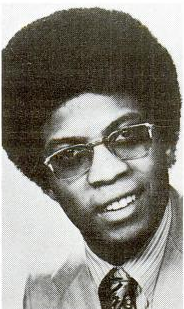
Hancock left Blue Note in 1969, signing with Warner Bros. Records. In 1969, Hancock composed the soundtrack for Bill Cosby's animated prime-time television special Hey, Hey, Hey, It's Fat Albert.[19] Music from the soundtrack was later included on Fat Albert Rotunda (1969), an R&B-inspired album with strong jazz overtones. One of the jazzier songs on the record, the moody ballad "Tell Me a Bedtime Story", was later re-worked as a more electronic sounding song for the Quincy Jones album Sounds...and Stuff Like That!! (1978).
Hancock became fascinated with electronic musical instruments. Together with the profound influence of Davis's Bitches Brew (1970), this fascination culminated in a series of albums in which electronic instruments were coupled with acoustic instruments.
Hancock's first ventures into electronic music started with a sextet comprising Hancock, bassist Buster Williams and drummer Billy Hart, and a trio of horn players: Eddie Henderson (trumpet), Julian Priester (trombone), and multireedist Bennie Maupin. Patrick Gleeson was eventually added to the mix to play and program the synthesizers.
The sextet, later a septet with the addition of Gleeson, made three albums under Hancock's name: Mwandishi (1971), Crossings (1972) (both on Warner Bros. Records), and Sextant (1973) (released on Columbia Records); two more, Realization and Inside Out, were recorded under Henderson's name with essentially the same personnel. The music exhibited strong improvisational aspect beyond the confines of jazz mainstream and showed influence from the electronic music of contemporary classical composers.
Hancock's three records released in 1971–73 later became known as the "Mwandishi" albums, so-called after a Swahili name Hancock sometimes used during this era ("Mwandishi" is Swahili for "writer"). The first two, including Fat Albert Rotunda were made available on the 2-CD set Mwandishi: the Complete Warner Bros. Recordings, released in 1994. "Hornets" was later revised on the 2001 album Future2Future as "Virtual Hornets".
Among the instruments Hancock and Gleeson used were Fender Rhodes piano, ARP Odyssey, ARP 2600, ARP Pro Soloist Synthesizer, a Mellotron and the Moog synthesizer III.
From Head Hunters (1973) to Secrets (1976)

Hancock formed The Headhunters, keeping only Maupin from the sextet and adding bassist Paul Jackson, percussionist Bill Summers, and drummer Harvey Mason. The album Head Hunters (1973) was a hit, crossing over to pop audiences but criticized within his jazz audience.[20] Stephen Erlewine, in a retrospective summary for AllMusic, said, "Head Hunters still sounds fresh and vital three decades after its initial release, and its genre-bending proved vastly influential on not only jazz, but funk, soul, and hip-hop."[21]
Drummer Mason was replaced by Mike Clark, and the band released a second album, Thrust, in 1974. (A live album from a Japan performance, consisting of compositions from those first two Head Hunters releases was released in 1975 as Flood). This was almost as well received as its predecessor, if not attaining the same level of commercial success. The Headhunters made another successful album called Survival of the Fittest in 1975 without Hancock, while Hancock himself started to make even more commercial albums, often featuring members of the band, but no longer billed as The Headhunters. The Headhunters reunited with Hancock in 1998 for Return of the Headhunters, and a version of the band (featuring Jackson and Clark) continues to play and record.
In 1973, Hancock composed his soundtrack to the controversial film The Spook Who Sat by the Door.[22] Then in 1974, he composed the soundtrack to the first Death Wish film. One of his memorable songs, "Joanna's Theme", was re-recorded in 1997 on his duet album with Shorter, 1+1.
Hancock's next jazz-funk albums of the 1970s were Man-Child (1975) and Secrets (1976), which point toward the more commercial direction Hancock would take over the next decade. These albums feature the members of the Headhunters band, but also a variety of other musicians in important roles.
From V.S.O.P. (1976) to Future Shock (1983)

In 1978, Hancock recorded a duet with Chick Corea, who replaced him in the Davis band a decade earlier. Hancock also released a solo acoustic piano album, The Piano (1979), which was released only in Japan. (It was released in the US in 2004). Other Japan-only albums include Dedication (1974), V.S.O.P.'s Tempest in the Colosseum (1977), and Direct Step (1978). VSOP: Live Under the Sky was a VSOP album remastered for the US in 2004 and included a second concert from the tour in July 1979.
From 1978 to 1982, Hancock recorded many albums of jazz-inflected disco and pop music, beginning with Sunlight (featuring guest musicians including Williams and Pastorius on the last track) (1978). Singing through a vocoder, he earned a British hit,[23] "I Thought It Was You", although critics were unimpressed.[24] This led to more vocoder on his next album, Feets, Don't Fail Me Now (1979), which gave him another UK hit in "You Bet Your Love".[23]
Hancock toured with Williams and Carter in 1981, recording Herbie Hancock Trio, a five-track album released only in Japan. A month later, he recorded Quartet with trumpeter Wynton Marsalis, released in the US the following year. Hancock, Williams, and Carter toured internationally with Wynton Marsalis and his brother, saxophonist Branford Marsalis, in what was known as "VSOP II". This quintet can be heard on Wynton Marsalis's debut album on Columbia (1981). In 1984 VSOP II performed at the Playboy Jazz Festival as a sextet with Hancock, Williams, Carter, the Marsalis Brothers, and Bobby McFerrin.
In 1982, Hancock contributed to the album New Gold Dream (81,82,83,84) by Simple Minds, playing a synthesizer solo on the track "Hunter and the Hunted".
In 1983, Hancock had a pop hit with the Grammy Award-winning single "Rockit" from the album Future Shock. It was the first jazz hip-hop song[25][26][27] and became a worldwide anthem for breakdancers and for hip-hop in the 1980s.[28][29] It was the first mainstream single to feature scratching, and also featured an innovative animated music video, which was directed by Godley and Creme and showed several robot-like artworks by Jim Whiting. The video was a hit on MTV and reached No. 8 in the UK.[30] The video won in five categories at the inaugural MTV Video Music Awards. This single ushered in a collaboration with noted bassist and producer Bill Laswell. Hancock experimented with electronic music on a string of three LPs produced by Laswell: Future Shock (1983), the Grammy Award-winning Sound-System (1984), and Perfect Machine (1988).
During this period, he appeared onstage at the Grammy Awards with Stevie Wonder, Howard Jones, and Thomas Dolby, in a synthesizer jam. Lesser known works from the 1980s are the live album Jazz Africa (1987) and the studio album Village Life (1984), which were recorded with Gambian kora player Foday Musa Suso. Also, in 1985 Hancock performed as a guest on the album So Red the Rose (1985) by the Duran Duran spinoff group Arcadia. He also provided introductory and closing comments for the PBS rebroadcast in the United States of the BBC educational series from the mid-1980s, Rockschool (not to be confused with the most recent Gene Simmons' Rock School series).
In 1986, Hancock performed and acted in the film 'Round Midnight. He also wrote the score/soundtrack, for which he won an Academy Award for Original Music Score. His film work was prolific during the 1980s, and included the scores to A Soldier's Story (1984), Jo Jo Dancer, Your Life Is Calling (1986), Action Jackson (1988 with Michael Kamen), Colors (1988), and the Eddie Murphy comedy Harlem Nights (1989). Often he would also write music for TV commercials. "Maiden Voyage", in fact, started out as a cologne advertisement. At the end of the Perfect Machine tour, Hancock decided to leave Columbia Records after a 15-plus-year relationship.
1990s to 2000

This departure resulted in a recording hiatus and several compilations during the first half of the 1990s.[31] Hancock resurfaced together with Carter, Williams, Shorter, and Davis admirer Wallace Roney to record A Tribute to Miles, which was released in 1994. The album contained two live recordings and studio recording songs, with Roney playing Davis's part as trumpet player. The album won a Grammy for best group album. Hancock also toured with Jack DeJohnette, Dave Holland and Pat Metheny in 1990 on their Parallel Realities tour, which included a performance at the Montreux Jazz Festival in July 1990, and scored the 1991 comedy film Livin' Large, which starred Terrence C. Carson.
Hancock's next album, Dis Is da Drum, released in 1994, saw him return to acid jazz. Also in 1994, he appeared on the Red Hot Organization's compilation album Stolen Moments: Red Hot + Cool. The album, meant to raise awareness and funds in support of the AIDS epidemic in relation to the African-American community, was heralded as "Album of the Year" by Time magazine.
1995's The New Standard found Hancock and an all-star band including John Scofield, DeJohnette and Michael Brecker, interpreting pop songs by Nirvana, Stevie Wonder, the Beatles, Prince, Peter Gabriel and others.
A 1997 duet album with Shorter, entitled 1+1, was successful; the song "Aung San Suu Kyi" winning the Grammy Award for Best Instrumental Composition. Hancock also achieved great success in 1998 with his album Gershwin's World, which featured readings of George and Ira Gershwin standards by Hancock and a plethora of guest stars, including Wonder, Joni Mitchell and Shorter. Hancock toured the world in support of Gershwin's World with a sextet that featured Cyro Baptista, Terri Lynne Carrington, Ira Coleman, Eli Degibri and Eddie Henderson.
2000 to 2009
In 2001, Hancock recorded Future2Future, which reunited Hancock with Laswell and featured doses of electronica as well as turntablist Rob Swift of The X-Ecutioners. Hancock later toured with the band, and released a concert DVD with a different lineup, which also included the "Rockit" music video. Also in 2001 Hancock partnered with Brecker and Roy Hargrove to record a live concert album saluting Davis and John Coltrane, entitled Directions in Music: Live at Massey Hall, recorded live in Toronto. The threesome toured to support the album, and toured on-and-off through 2005.
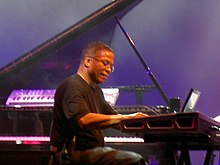
The year 2005 saw the release of a duet album called Possibilities. It featured duets with Carlos Santana, Paul Simon, Annie Lennox, John Mayer, Christina Aguilera, Sting and others. In 2006, Possibilities was nominated for Grammy Awards in two categories: "A Song for You" (featuring Aguilera) was nominated for a Grammy Award for Best Pop Instrumental Performance, and "Gelo No Montanha" (featuring Trey Anastasio on guitar) was nominated for a Grammy Award for Best Instrumental Performance, although neither nomination resulted in an award.
Also in 2005, Hancock toured Europe with a new quartet that included Beninese guitarist Lionel Loueke, and explored textures ranging from ambient to straight jazz to African music. Plus, during the summer of 2005, Hancock re-staffed the Headhunters and went on tour with them, including a performance at The Bonnaroo Music & Arts Festival. This lineup did not consist of any of the original Headhunters musicians. The group included Marcus Miller, Carrington, Loueke and Mayer. Hancock also served as the first artist in residence for Bonnaroo that summer.

Also in 2006, Sony BMG Music Entertainment (which bought out Hancock's old label, Columbia Records) released the two-disc retrospective The Essential Herbie Hancock. This set was the first compilation of his work at Warner Bros., Blue Note, Columbia and Verve/Polygram. This became Hancock's second major compilation of work since the 2002 Columbia-only The Herbie Hancock Box, which was released at first in a plastic 4 × 4 cube then re-released in 2004 in a long box set. Also in 2006, Hancock recorded a new song with Josh Groban and Eric Mouquet (co-founder of Deep Forest), entitled "Machine". It is featured on Groban's CD Awake. Hancock also recorded and improvised with guitarist Loueke on Loueke's 1996 debut album Virgin Forest, on the ObliqSound label, resulting in two improvisational tracks – "Le Réveil des agneaux (The Awakening of the Lambs)" and "La Poursuite du lion (The Lion's Pursuit)".
Hancock, a longtime associate and friend of Mitchell, released a 2007 album, River: The Joni Letters, that paid tribute to her work, with Norah Jones and Tina Turner adding vocals to the album,[32] as did Corinne Bailey Rae. Leonard Cohen contributed a spoken piece set to Hancock's piano. Mitchell herself also made an appearance. The album was released on September 25, 2007, simultaneously with the release of Mitchell's newest album at that time: Shine.[33] River won the 2008 Album of the Year Grammy Award. The album also won a Grammy for Best Contemporary Jazz Album, and the song "Both Sides Now" was nominated for Best Instrumental Jazz Solo. That was only the second time in history that a jazz album won those two Grammy Awards.
On June 14, 2008, Hancock performed with others at Rhythm on the Vine at the South Coast Winery in Temecula, California, for Shriners Hospitals for Children. The event raised $515,000 for Shriners Hospital.[34]
On January 18, 2009, Hancock performed at the We Are One concert, marking the start of inaugural celebrations for American President Barack Obama.[35] Hancock also performed Rhapsody in Blue at the 2009 Classical BRIT Awards with classical pianist Lang Lang. Hancock was named as the Los Angeles Philharmonic's creative chair for jazz for 2010–12.[36]
2010 to present


In June 2010, Hancock released The Imagine Project.
On June 5, 2010, he received an Alumni Award from his alma mater Grinnell College.[37] On July 22, 2011, at a ceremony in Paris, he was named UNESCO Goodwill Ambassador for the promotion of Intercultural Dialogue. In 2013, Hancock joined the University of California, Los Angeles faculty as a professor in the UCLA music department teaching jazz music.[38]
In a June 2010 interview with Michael Gallant of Keyboard magazine, Hancock talks about his Fazioli giving him inspiration to do things.[39]
On December 8, 2013, he was given the Kennedy Center Honors Award for achievement in the performing arts with artists like Snoop Dogg and Mixmaster Mike from the Beastie Boys performing his music.
He appeared on the album You're Dead! by Flying Lotus, released in October 2014.
Hancock was the 2014 Charles Eliot Norton Professor of Poetry at Harvard University. Holders of the chair deliver a series of six lectures on poetry, "The Norton Lectures", poetry being "interpreted in the broadest sense, including all poetic expression in language, music, or fine arts". Previous Norton lecturers include musicians Leonard Bernstein, Igor Stravinsky and John Cage. Hancock's theme is "The Ethics of Jazz".[40]
Hancock's next album is being produced by Terrace Martin,[41] and will feature a broad variety of jazz and hip-hop artists including Wayne Shorter, Kendrick Lamar, Kamasi Washington, Thundercat, Flying Lotus, Lionel Loueke, Zakir Hussein and Snoop Dogg.[42]
On May 15, 2015, Hancock received an honorary doctor of humane letters degree from Washington University in St. Louis.[43]
On May 19, 2018, Hancock received an honorary degree from Rensselaer Polytechnic Institute.[44]
On June 26, 2022, Hancock performed at the Glastonbury Festival.[45][46]
Hancock was featured on the track "MOON" by the jazz duo Domi and JD Beck on their debut album NOT TiGHT, released July 29, 2022.
On February 4, 2023, Hancock performed at the Arise Fashion Week & Jazz Festival[47] at Eko Hotel, Lagos, Nigeria.
Discography

Studio albums
- Takin' Off (1962)
- My Point of View (1963)
- Inventions & Dimensions (1963)
- Empyrean Isles (1964)
- Maiden Voyage (1965)
- Speak Like a Child (1968)
- The Prisoner (1969)
- Fat Albert Rotunda (1969)
- Mwandishi (1971)
- Crossings (1972)
- Sextant (1973)
- Head Hunters (1973)
- Dedication (1974)
- Thrust (1974)
- Man-Child (1975)
- Secrets (1976)
- Third Plane (1977)
- Herbie Hancock Trio (1977)
- Sunlight (1978)
- Directstep (1979)
- The Piano (1979)
- Feets, Don't Fail Me Now (1979)
- Monster (1980)
- Mr. Hands (1980)
- Magic Windows (1981)
- Herbie Hancock Trio (1982)
- Quartet (1982)
- Lite Me Up (1982)
- Future Shock (1983)
- Sound-System (1984)
- Village Life (1985)
- Perfect Machine (1988)
- A Tribute to Miles (1994)
- Dis Is da Drum (1994)
- The New Standard (1996)
- 1+1 (1997)
- Gershwin's World (1998)
- Future 2 Future (2001)
- Possibilities (2005)
- River: The Joni Letters (2007)
- The Imagine Project (2010)
Concert films
- 2000: DeJohnette, Hancock, Holland and Metheny – Live in Concert
- 2002: Herbie Hancock Trio: Hurricane! with Ron Carter and Billy Cobham[57]
- 2002: The Jazz Channel Presents Herbie Hancock (BET on Jazz) with Cyro Baptista, Terri Lynne Carrington, Ira Coleman, Eli Degibri and Eddie Henderson (recorded in 2000)
- 2004: Herbie Hancock – Future2Future Live
- 2005: Herbie Hancock's Headhunters Watermelon Man (Live in Japan)
- 2006: Herbie Hancock – Possibilities with John Mayer, Christina Aguilera, Joss Stone, and more
Books
- Herbie Hancock: Possibilities (2014) ISBN 978-0-670-01471-2
- Reaching Beyond: Improvisations on Jazz, Buddhism, and a Joyful Life (2017) ISBN 978-1-938-25276-1
Awards


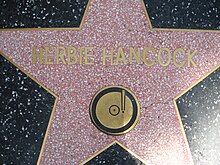

Academy Awards
- 1986, Best Original Score, for Round Midnight
Grammy Awards
- 1984: Best R&B Instrumental Performance, for Rockit
- 1985: Best R&B Instrumental Performance, for Sound-System
- 1988: Best Instrumental Composition, for Call Sheet Blues
- 1995: Best Jazz Instrumental Performance, Individual or Group, for A Tribute to Miles
- 1997: Best Instrumental Composition, for Manhattan (Island of Lights and Love)
- 1999: Best Instrumental Arrangement Accompanying Vocal(s), for St. Louis Blues
- 1999: Best Jazz Instrumental Performance, Individual or Group, for Gershwin's World
- 2003: Best Jazz Instrumental Album, Individual or Group, for Directions in Music at Massey Hall
- 2003: Best Jazz Instrumental Solo, for My Ship
- 2005: Best Jazz Instrumental Solo, for Speak Like a Child
- 2008: Album of the Year, for River: The Joni Letters
- 2008: Best Contemporary Jazz Album, for River: The Joni Letters
- 2011: Best Improvised Jazz Solo, for A Change Is Gonna Come
- 2011: Best Pop Collaboration with Vocals, for Imagine
Other awards
- Keyboard Readers' Poll: Best Jazz Pianist (1987, 1988); Keyboardist (1983, 1987)
- Playboy Music Poll: Best Jazz Group (1985), Best Jazz Album Rockit (1985), Best Jazz Keyboards (1985, 1986), Best R&B Instrumentalist (1987), Best Jazz Instrumentalist (1988)
- MTV Awards (5), Best Concept Video, "Rockit", 1983–'84
- Gold Note Jazz Awards – New York Chapter of the National Black MBA Association, 1985
- French Award Officer of the Order of Arts & Letters, 1985
- BMI Film Music Award, Round Midnight, 1986
- Honorary Doctorate of Music from Berklee College of Music, 1986 [58]
- U.S. Radio Award, Best Original Music Scoring – Thom McAnn Shoes, 1986
- Los Angeles Film Critics Association, Best Score – 'Round Midnight, 1986
- BMI Film Music Award, Colors, 1989
- Miles Davis Award, Montreal International Jazz Festival, 1997
- Soul Train Music Award, Best Jazz Album – The New Standard, 1997
- VH1's 100 Greatest Videos, "Rockit" is 10th Greatest Video, 2001
- NEA Jazz Masters Award, 2004
- Downbeat Readers' Poll Hall of Fame, 2005[59]
- Kennedy Center Honors, 2013
- American Academy of Arts and Sciences, 2013[60]
- Benjamin Franklin Medal (Royal Society of Arts), 2018
External links
- Official website

- Herbie Hancock discography at Discogs
- Herbie Hancock at IMDb
- Herbie Hancock at TED
- Herbie Hancock interview about music and technology at AppleMatters
- Herbie Hancock Outside The Comfort Zone interview at JamBase
- Hancock Article by C.J Shearn on the New York Jazz Workshop blog, November 2014
- Herbie Hancock Interview at NAMM Oral History Collection (2006)
- Herbie Hancock on YouTube
http://www.jazz.com/dozens/the-dozens-twelve-essential-herbie-hancock-performances
THE DOZENS: TWELVE ESSENTIAL HERBIE HANCOCK PERFORMANCES
by Ted Gioia
Miles Davis: Seven Steps to Heaven
Track
Artist
CD
Miles Davis (trumpet), George Coleman (tenor sax), Herbie Hancock (piano), Ron Carter (bass), Tony Williams (drums).
Composed by Victor Feldman and Miles Davis
.
Rating: 99/100 (learn more)
When Miles Davis added Herbie Hancock, Ron Carter and Tony Williams to his band in 1963, they were far from household names, and not even widely known in the jazz world. But even on this debut recording, you can tell that Miles had found another dynamite rhythm section, one destined to influence the later evolution of jazz combo playing. Hancock plays with absolute authority from the intro to the final coda. And Carter moves this piece through the paces like a jockey heading for the finish line at Churchill Downs. And could it possibly be true that drummer Tony Williams was only seventeen years old when he made this recording? He might have been too young to register for the draft (not a bad thing in '63), but his drum breaks sound like they could lead a regiment of hipsters into hard-bop hand-to-hand combat. Where does Miles find 'em? Can't say. But where does he lead 'em? Easy, right up the seven steps to jazz heaven.
Reviewer: Ted Gioia
Herbie Hancock: Cantaloupe Island
Herbie Hancock (piano), Freddie Hubbard (trumpet), Ron Carter (bass), Tony Williams (drums).
Composed by Herbie Hancock
.
Rating: 95/100 (learn more)
This is one of the funkiest acoustic jazz performances of the era, ranking with those other Blue Note classics, Lee Morgan's "The Sidewinder," Art Blakey's "Moanin'" and Hancock's own previous entry in the slam-funk competition, "Watermelon Man." The largely static harmonies impart a slight modal tinge to the composition, creating a spacey-futuristic groove that still sounds modernistic today. Hancock's piano vamp drives the band, and Hubbard contributes one of his most memorable solos. Forget about Gilligan's or Crusoe's boring beachfront property . . . the nightlife is better on "Cantaloupe Island."Reviewer: Ted Gioia
Herbie Hancock: Maiden Voyage
Herbie Hancock (piano), George Coleman (tenor sax), Freddie Hubbard (trumpet), Ron Carter (bass), Tony Williams (drums).
Composed by Herbie Hancock
.
Rating: 100/100 (learn more)
"Maiden Voyage" stands out as a landmark of the Blue Note sound, and remains Herbie Hancock's finest composition. In the midst of a turbulent jazz scene, where musicians were restlessly exploring all of their options, Hancock always approached his recordings with a clear, holistic vision. Classic Hancock performances such as "Watermelon Man" or "Cantaloupe Island" would establish their identity in the introductory bars, and stick to the same course until they reached their chosen destination. The texture and ambiance of the music envelops the listener -- and the musicians too. If Freddie Hubbard ever took a hotter trumpet solo than on this recording, I haven't heard it. And all done with only four suspended chords -- but the 'hook' is in the vamp. One of the high points of 1960s jazz.Reviewer: Ted Gioia
Herbie Hancock: Dolphin Dance
Herbie Hancock (piano), Freddie Hubbard (trumpet), George Coleman (tenor sax), Ron Carter (bass), Tony Williams (drums).
Composed by Herbie Hancock
.
Rating: 95/100 (learn more)
I marvel not just at the quality, but also at the impressive range of Hancock's work for the Blue Note label during the 1960s, which delved into everything from soul jazz to the avant-garde. And at the midpoint of the decade, Hancock offered up his now classic Maiden Voyage album, featuring a world-class band (essentially the Miles Davis Quintet with Freddie Hubbard stepping in for Miles) and some of the finest writing of his career. "Dolphin Dance" is my favorite Hancock composition, an impressionistic mood piece with very creative chord changes. He settles in at a difficult tempo, just a little too fast for a ballad, but not fast enough to swing the rhythm. Many other jazz ensembles falter at these betwixt and between tempos, but Hancock and cohorts float effortlessly like . . . well, I imagine, like dolphins at a dance. The pianist was now working with textures of sound rather than recycling the typical modern jazz harmonies. The ultimate hard-bop pianist was showing that he could move far beyond the confines of the genre. He might have spent another decade mining this rich vein of material, evolving into the Ravel or Debussy of jazz. But for Herbie Hancock this was just one more stopping point on a restless journey toward the next new thing.Reviewer: Ted Gioia
Herbie Hancock: Speak Like a Child
Herbie Hancock (piano), Ron Carter (bass), Mickey Roker (drums), Thad Jones (flugelhorn), Jerry Dodgion (alto flute),
Peter Phillips (bass trombone)
. Composed by Herbie Hancock
.
Rating: 94/100 (learn more)
Every new release from Herbie Hancock during the 1960s seemed to chart an exciting step forward. On his Speak Like a Child session from 1968, Hancock experiments with the unusual front line of flugelhorn, bass trombone and alto flute. Peculiar idea, huh? Almost like a homework assignment at Berklee? Well, young student Hancock gets an A+ on this track. The horn writing is superb, and the whole track infused with a nostalgic, late night mood that makes you want to play it over and over again. This is Herbie Hancock in an Ellingtonian or Gil-Evans-ish vein, and leads one to speculate what wonders he would have worked had he dug in with a big band for a few years. But Hancock was looking forward not behind, and a few months later he was off to the Warner Bros. label working on his Fat Albert Rotunda project.Reviewer: Ted Gioia
Herbie Hancock: Tell Me a Bedtime Story
Track
Group
CD
Herbie Hancock (piano, electric piano), Johnny Coles (trumpet), Garnett Brown (trombone), Joe Henderson (alto flute, tenor sax), Buster Williams (bass), Billy Hart (drums, percussion), Albert "Tootie" Heath (drums).
Composed by Herbie Hancock
.
Rating: 90/100 (learn more)
The smart horn writing on "Tell Me a Bedtime Story" looks back to the textures of "Speak Like a Child," but by now Herbie Hancock has gone electric, and the resulting mixture is one of the great medium-slow fusion performances of the era. This recording captures a "quiet storm" ambiance, and each of the band members sublimates his individual ego in order to sustain the late-night mood. Hancock's solo is more about textures than licks, and he projects his personality effectively through his electric piano. Soon Hancock would be moving away from these rich harmonies, embracing a style (epitomized in his hit "Chameleon") driven by basslines rather than chords. But "Tell Me a Bedtime Story" points toward a jazzier, more cerebral fusion -- one of the many paths tested briefly by Hancock, then abandoned in his quest for the next new thing.Reviewer: Ted Gioia
Herbie Hancock: Watermelon Man (from Head Hunters, 1973)
Track
Group
CD
Herbie Hancock (piano), Bennie Maupin (reeds), Paul Jackson (bass), Harvey Mason (drums), Bill Summers (percussion).
Composed by Herbie Hancock
.
Rating: 90/100 (learn more)
Always dangerous to try to remake a classic. You can't just turn Citizen Kane into an story about an Internet media tycoon or make Moby Dick into a reality show. But every once in a while, an old masterpiece gets a fresh, invigorating take. Here Herbie Hancock reconfigures his 1962 hard-bop hit "Watermelon Man" into a 1973 fusion tune. Bill Summers' brilliant work on percussion (including a very cool imitation of the African hindewhu achieved by blowing into a beer bottle) is worth the price of admission alone. And Hancock gets high marks for the daring step of bringing the tempo down several notches from his Blue Note version, proving that slow-mo can be funkier than fast-forward. And when it's all done, put it on replay to hear that Summers intro one more time. Here is fusion that really fuses, drawing on African, Caribbean and jazz traditions, and mixing them into a cross-cultural gumbo.Reviewer: Ted Gioia
V.S.O.P.: One of a Kind
Track
Group
CD
Herbie Hancock (piano), Freddie Hubbard (trumpet), Ron Carter (bass), Tony Williams (drums), Wayne Shorter (soprano sax).
Composed by Freddie Hubbard
.
Rating: 90/100 (learn more)
If you weren't a jazz fan at the time, you can hardly imagine the stir that this band made back in 1977. Newsweek featured the V.S.O.P. quintet in a cover story, pronouncing that Jazz Is Back. Of course, jazz hadn't gone anywhere, although it was a homecoming of sorts for some of the V.S.O.P. band members who had focused their energies on fusion music for most of the decade. I remember the excitement at the Greek Theater in Berkeley, where much of the resulting V.S.O.P. album was recorded in concert, a palpable sense that jazz history was being made on stage. In retrospect, this 1977 revival of the great 1960s Miles Davis Quintet (with Freddie Hubbard standing in for Miles, who definitely Was Not Back) did signal that fusion music was no longer a hot new thing. But predictions of widespread public interest in hard bop were premature, to put it mildly. And did the V.S.O.P. band live up to the hype? Certainly the individual members of the quintet exude tremendous energy on "One of a Kind." Hubbard takes the first solo, and shows why even today he must be on any list of the hottest trumpeters in the history of the music. Shorter follows and he gets into an esoteric bag with Hancock. Carter and Williams constantly stoke the fire. Maybe the band is trying a bit too hard . . the proceedings remind me of the NBA All Star Game where the heroics seem a little too staged. No, the V.S.O.P. reunion won't make you forget the great Blue Note sides these same musicians made in the 1960s, but it is much more than just a historical artifact. Pound for pound, no band of the decade had more raw talent on the stage, and if it had stayed together for a few years, and not just for a Very Special One-Time Performance, V.S.O.P. might have really shaken things up.Reviewer: Ted Gioia
Ron Carter (with Herbie Hancock and Tony Williams): Lawra
Track
Group
CD
Ron Carter (bass), Herbie Hancock (piano), Tony Williams (drums).
Composed by Tony Williams
.
Rating: 94/100 (learn more)
You could hardly imagine a simpler composition -- a repeated two-note figure, with a syncopated displace- ment in bar five. And then you do it again . . . and again . . . and again. But this world-beating trio takes an easy game and brings it to exciting new places, like Fischer and Spassky playing tiddlywinks for mastery of the universe. Tony Williams wrote the piece, and seems to be having a blast on the drums. Ron Carter (leader of this session for the Milestone label) is a delight with his basslines, which bend and amble and strut like a gymnast on the balancing bar. But he is also the supreme accompanist, and even when he pushes the limit of what constitutes a "walking line" he still is perfectly in sync with Hancock and Williams. One of the finest trio dates of the era.Reviewer: Ted Gioia
Herbie Hancock: Someday My Prince Will Come
Track
Artist
CD
Recorded: Tokyo, October 25 and 26, 1978

Rating: 92/100 (learn more)
Why does Herbie Hancock always save his best solo work for the Japanese market? When he was at the high point (low point?) of his career as a "fusion" artist, he released a solid, serious, solo keyboard effort called Dedication -- but only in Japan. I had to convert the holdings of my piggy bank into yen and find an import-export agent just to sniff the vinyl. The Piano is much the same story: a great collection of solo piano performances, but kept out of the US market for 25 years. "Someday My Prince Will Come" is a smart reworking of the famous Disney soundtrack song, with constant change-ups in mood, dynamics and attack. Although Hancock has recorded some 50 recordings as a leader, there are very few examples of him playing standards without accompaniment. This is one of the finest.Reviewer: Ted Gioia
Herbie Hancock (featuring John Mayer): Stitched Up
Track
Group
CD
Herbie Hancock (piano), John Mayer (vocals, guitar),
Michael Bearden (keyboards), Willie Weeks (bass), Steve Jordan (drums)
. Composed by John Mayer and Herbie Hancock
.

Rating: 90/100 (learn more)
Sometimes these pop-star-meets-jazzcat dream dates go bad before the appetizers are on the table. But Mayer is not your typical pop star, and Hancock knows how to cross over without losing his balance. It helps that the song is hot, with an irresistible dance beat on the refrain. Hancock deserves a lot of credit for the groove, digging in with that acoustic funk sound he pioneered back in his Blue Note days, but the rest of the band is also in the pocket. Steve Jordan may be a rock-pop drummer, but he could teach jazz snobs how to lay down a beat. And Mayer sings with the white Motown soulfulness he pioneered on that crazy Continuum release -- yeah, you know, that disk that looked like ECM on the cover but sounded like Marvin Gaye when you popped in into the CD player. Hey guys, how about a second date?Reviewer: Ted Gioia
Herbie Hancock (with Corinne Bailey Rae): River
Track
Artist
CD
Herbie Hancock (piano), Corinne Bailey Rae (vocals), Dave Holland (bass), Vinnie Colaiuta (drums), Wayne Shorter (soprano sax).
Composed by Joni Mitchell
.
Rating: 90/100 (learn more)
I love jazz and I love Joni . . . but I get nervous when they are mixed together. Joni Mitchell's idiosyncratic delivery is already so jazzy, that it is hard enough just singing it straight. Trying to jazz up these songs further is like adding more cayenne pepper to grandma's prizewinning chili. As I have always said, nobody sings Joni better than the diva herself. But Corinne Bailey Rae makes me reconsider. This is the best version of "River" I've heard since that rude classmate drew a mustache on the cover of my Blue LP back in the Nixon era. Rae sings with sweet, almost girlish forthrightness, and just the right touch of melancholy. Hancock, Shorter, Holland and Colaiuta provide thoughtful accompaniment (albeit in a different studio on another continent) for a richly layered performance in which every phrase and micro-rhythm is perfectly placed.Reviewer: Ted Gioia
Discography
"Maiden Voyage"
by Herbie Hancock
From the Album:
Maiden Voyage (1965)--on Blue Note record label
Composition written by:
Herbie Hancock
Personnel:
Herbie Hancock — piano
Freddie Hubbard — trumpet
George Coleman — tenor saxophone
Ron Carter — bass
Tony Williams — drums
"Chan's Song"
by Herbie Hancock:"Chameleon"
by Herbie Hancock:
AVO Session, Messe Basel, Switzerland, 10 November 2006:
Herbie Hancock, Wayne Shorter, Dave Holland, Brian Blade live in concert - JazzBaltica 2004:
● Tracklist:1. Sonrisa
2. V
3. Pathways
4. Aung San Sun Kyi
5. Prometheus Unbound
6. Cantaloupe Island
● Personnel:
Herbie Hancock - piano - http://www.herbiehancock.com/
Wayne Shorter - sax - http://www.wayneshorter.com/
Dave Holland - bass - http://daveholland.com/
Brian Blade - drums - http://www.brianblade.com/
● Herbie Hancock, Wayne Shorter, Dave Holland, Brian Blade: Live at Große Konzertscheue, Jazzbaltica, Salzau, Germany, 2004:
Herbie Hancock--"Sleeping Giant", "Quasar" and "Water Torture" (From Mwandishi: The Complete Warner Brothers recordings, 1970-1973);
Personnel:
Herbie Hancock - Piano, Electric Piano, Mellotron, Percussion
Eddie Henderson - Trumpet, Flugelhorn, Percussion
Billy Hart - Drums, Percussion
Julian Priester - Bass, Tenor and Alto Trombone, Percussion
Buster Williams - Electric Bass, Bass, Percussion
Bennie Maupin - Soprano Saxophone, Alto Flute, Bass Clarinet, Piccolo, Percussion
With:
Patrick Gleeson - Moog Synthesizer
Victor Pontoja - Congas
Voices - Candy Love, Sandra Stevens, Della Horne, Victoria Domagalski, Scott Breach















